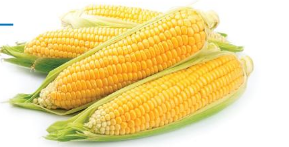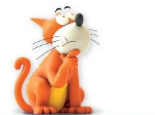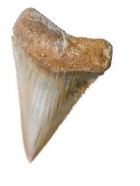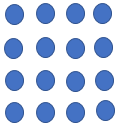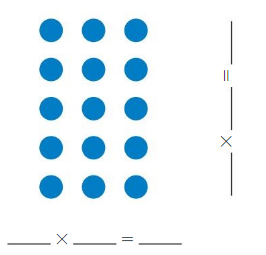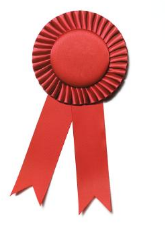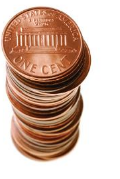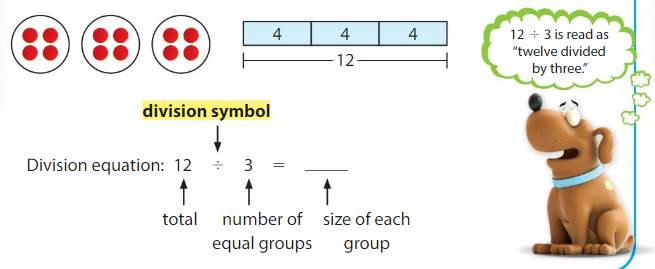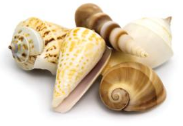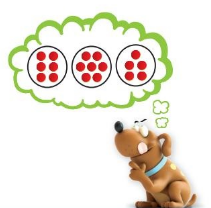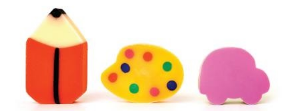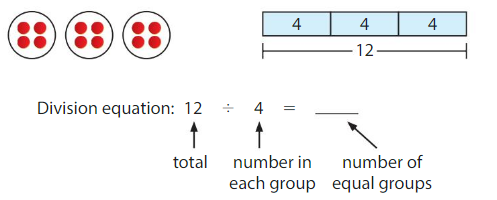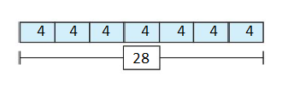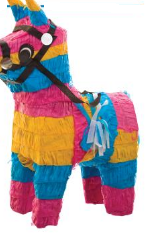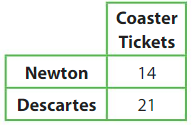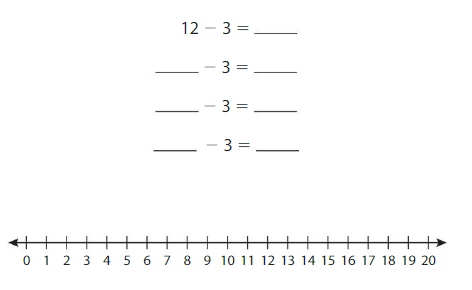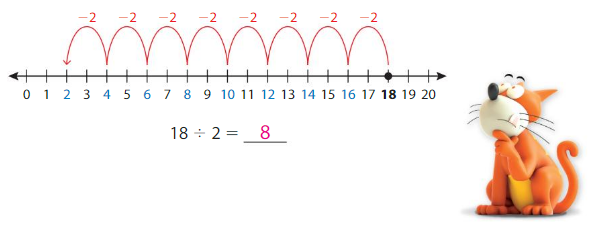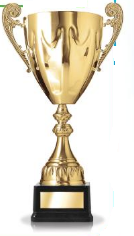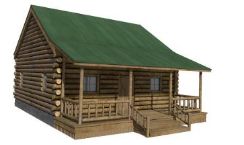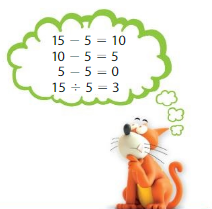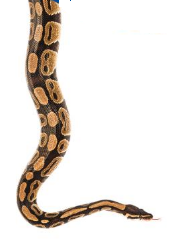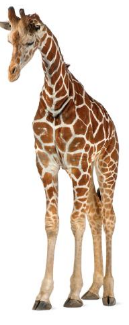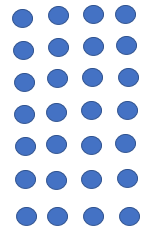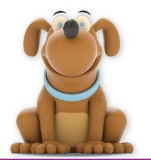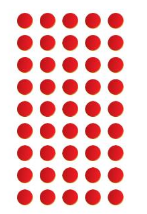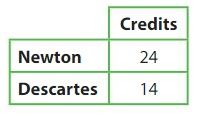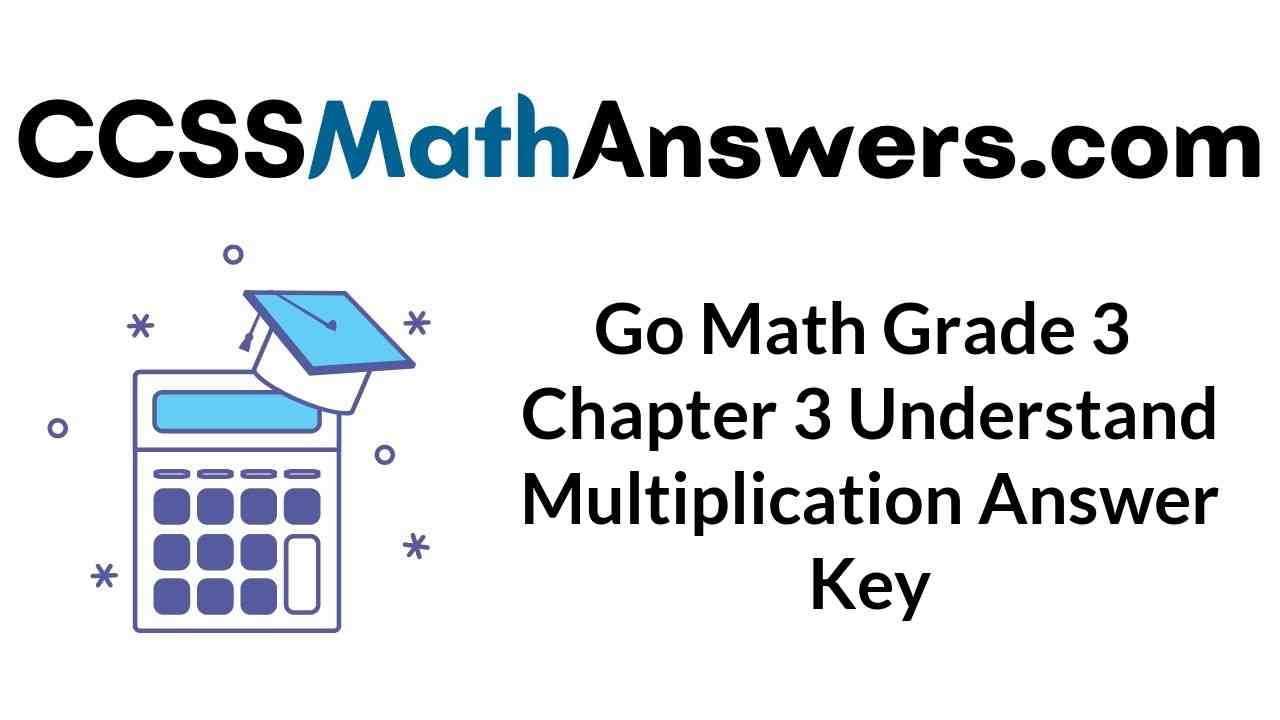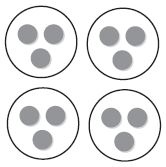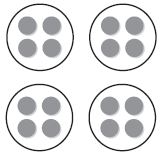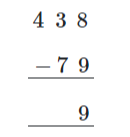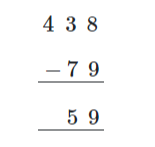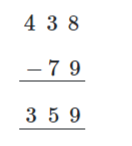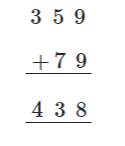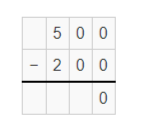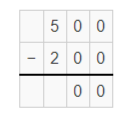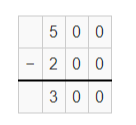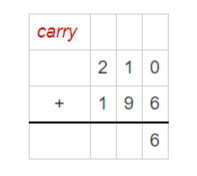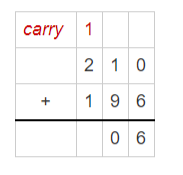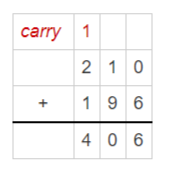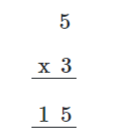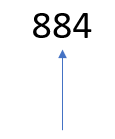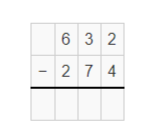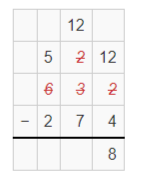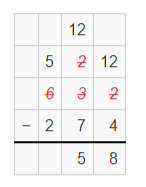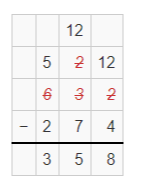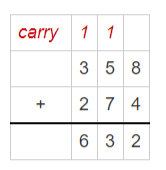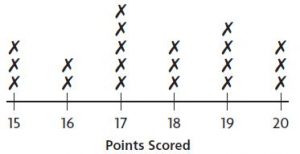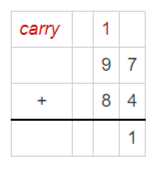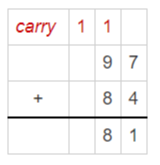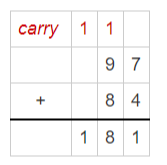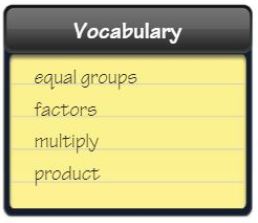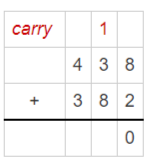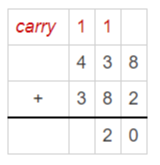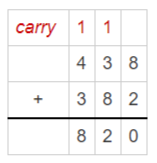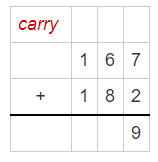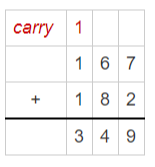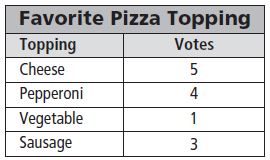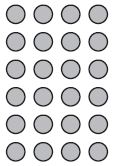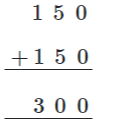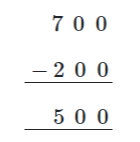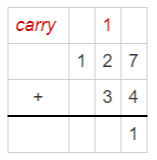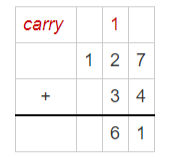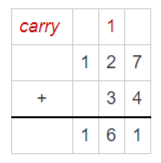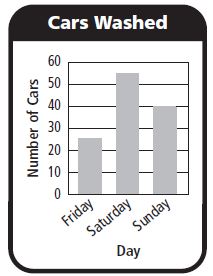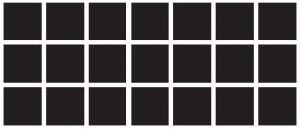Big Ideas Math Book 4th Grade Answer Key Chapter 3 Multiply by one – Digit Numbers answer key is helpful for students who are willing to do their best in exams and can Acknowledge these topics by downloading this pdf for free of cost. In this chapter, each and every question was explained in clean and clear cut manner to help the students in a better way to understand these Math problems easily. Big Ideas Math Answers Grade 4 Chapter 3 explains different types of questions with examples and references by which one can grasp different methods in easy and fun way.
Big Ideas Math Book 4th Grade Answer Key Chapter 3 Multiply by One-Digit Numbers
The chapter 3 Multiply by one – digit numbers covers the various topics such as Multiplying the one or more digit numbers with on digit numbers , Rounding the numbers, Estimating the product of Two numbers , Finding the products using the different methods such as Expanded form , Distributive property , commutative property, Associative property, Using partial products to find the final product of two numbers with examples to make it easy for the students who finds math as complex task, This chapter is useful for students for easy Growth in their Academics.
Lesson 1 Understand Multiplicative Comparisons
- Lesson 3.1 Understand Multiplicative Comparisons
- Understand Multiplicative Comparisons Homework & Practice 3.1
Lesson 2 Multiply Tens, Hundreds, and Thousands
- Lesson 3.2 Multiply Tens, Hundreds, and Thousands
- Multiply Tens, Hundreds, and Thousands Homework & Practice 3.2
Lesson 3 Estimate Products by Rounding
Lesson 4 Use the Distributive Property to Multiply
- Lesson 3.4 Use the Distributive Property to Multiply
- Use the Distributive Property to Multiply Homework & Practice 3.4
Lesson 5 Use Expanded Form to Multiply
Lesson 6 Use Partial Products to Multiply
- Lesson 3.6 Use Partial Products to Multiply
- Use Partial Products to Multiply Homework & Practice 3.6
Lesson 7 Multiply Two-Digit Numbers by One-Digit Numbers
- Lesson 3.7 Multiply Two-Digit Numbers by One-Digit Numbers
- Multiply Two-Digit Numbers by One-Digit Numbers Homework & Practice 3.7
Lesson 8 Multiply Three- and Four-Digit Numbers by One-Digit Numbers
- Lesson 3.8 Multiply Three- and Four-Digit Numbers by One-Digit Numbers
- Multiply Three- and Four-Digit Numbers by One-Digit Numbers Homework & Practice 3.8
Lesson 9 Use Properties to Multiply
Lesson 10 Problem Solving: Multiplication
- Lesson 3.10 Problem Solving: Multiplication
- Problem Solving: Multiplication Homework & Practice 3.10
Multiply by One-Digit Numbers Performance Task
- Multiply by One-Digit Numbers Performance Task
- Multiply by One-Digit Numbers Activity
- Multiply by One-Digit Numbers Chapter Test
- Multiply by One-Digit Numbers Cumulative Practice
- Multiply by One-Digit Numbers STEAM Performance Task
Lesson 3.1 Understand Multiplicative Comparisons
Explore and Grow
Model the counters. Draw to show your model.
There are 20 counters. Five of the counters are yellow. The rest are red.

How many more red counters are there than yellow counters?
How many times as many red counters are there as yellow counters?
Answer: model

15 red counters, 3 times the yellow counters.
Explanation:
Totally there are 20 counters in which 5 of them are yellow counters and the remaining 15 of them are red counters.
So, red counters are three times the yellow counters.
Structure
Explain how you can use an addition equation or a multiplication equation to compare the numbers of yellow counters and red counters.
Answer: Number of yellow counters = 5 and number of red counters =15,
There are red counters as 3 times of yellow counters that is,
3 × 5 = 15 or
5 + 5 + 5 = 15.
Explanation: Given the total number of yellow counters and the number of red counters so, simply we should use our basic addition rule and basic multiplication rule to explain the mathematical equation for the number of yellow counters and number of red counters.
Think and Grow: Understand Multiplicative Comparisons
You can use multiplication to compare two numbers.
Example
Write two comparison sentences for 24 = 4 × 6.

You can compare two numbers using addition or multiplication.
• Use addition to find or how many more how many fewer
• Use multiplication to find as much. how many times
Answer : 24 is 6 times as many as 4 or 24 is 4 times as many as 6
Example
Write an equation for each comparison sentence.

Answer: 12 = 8 + 4 , 12 = 3 × 4
Show and Grow
Write two comparison sentences for the equation
Question 1.
15 = 3 × 5
Answer: 15 is 3 times as many as 5.
or
15 is 5 times as many as 3.
Explanation: we should multiply the numbers 3 and 5 ,
to get the multiplication result as 15.
Question 2.
32 = 4 × 8
Answer: 32 is 4 times as many as 8.
or
32 is 8 times as many as 4.
Explanation: we should multiply the numbers 4 and 8 ,
to get the multiplication result as 32.
Draw a model for the comparison sentence. Then write an equation.
Question 3.
21 is 14 more than 7.
Answer:
21 = 14 + 7.
Explanation: The term more than is referred to addition ,
we should add the numbers 14 and 7,
to get the addition result as 21.
Question 4.
40 is 8 times as many as 5.
Answer: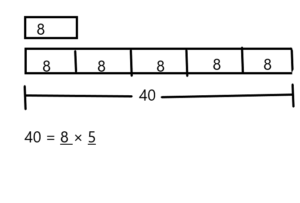
40 = 8 × 5.
Explanation: The term as many as is referred to multiplication ,
we should multiply the numbers 5and 8 ,
to get the multiplication result as 40.
Apply and Grow: Practice
Write two comparison sentences for the equation.
Question 5.
48 = 6 × 8
Answer: 48 is 6 times as many as 8. or
48 is 8 times as many as 6.
Explanation: The term as many as is referred to multiplication ,
we should multiply the numbers 6and 8 ,
to get the multiplication result as 48.
Question 6.
63 = 7 × 9
Answer: 63 is 7 as many as 9. or
63 is 9 as many as 7.
Explanation: The term as many as is referred to multiplication ,
we should multiply the numbers 7and 9 ,
to get the multiplication result as 63.
Write an equation for the comparison sentence.
Question 7.
20 is 2 times as many as 10.
Answer: 20 = 2 × 10.
Explanation: we should multiply the numbers 2 and 10 ,
to get the multiplication result as 20.
Question 8.
18 is 10 more than 8.
Answer: 18 = 10 + 8.
Explanation: we should add the numbers 10 and 8,
to get the addition result as 18.
Question 9.
35 is 7 times as many as 5.
Answer: 35 = 7 × 5.
Explanation: we should multiply the numbers 7and 5 ,
to get the multiplication result as 35.
Question 10.
16 is 4 times as many as 4.
Answer: 16 = 4 × 4.
Explanation: we should multiply the numbers 4 and 4 ,
to get the multiplication result as 16.
Question 11.
Earthworms have four more hearts than humans. How many hearts do earth worms have?
Answer: 5.
Explanation: Humans have one heart and question implies that,
Earthworms have four more hearts than humans.
So 1 + 4 = 5.
Question 12.
Ants can lift 50 times their body weight. An ant weighs 5 milligrams. How much weight can the ant lift?
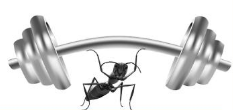
Answer: 250 milligrams.
Explanation: Ant body weight = 5 milligrams and it can lift 50 times their body weight.
So, ant can lift 50 times the 5 milligrams,
that is 5 × 50 = 250 milligrams.
Question 13.
Writing
Explain how you know the statement “32 is 8 times as many as 4”is a comparison involving multiplication.
Answer: Multiplication is used to find as much or how many times,
and the two factors 8 & 4 gives the product of 32 .
So, 32 = 8 × 4.
Question 14.
Number Sense
Write an addition comparison statement and a multiplication comparison statement for the numbers 8 and 24.
Answer: Addition comparison statement for 24 = 16 + 8 is ,
24 is 16 more than 8.
multiplication comparison statement for 24 = 3 × 8 is ,
24 is 3 times as many as 8.
Think and Grow: Modeling Real Life
Example
You perform a science experiment and use4 times as much hydrogen peroxide as water. You use a total of 10 tablespoons of liquid. How many table spoons of hydrogen peroxide do you use?

Draw a model.

Answer: 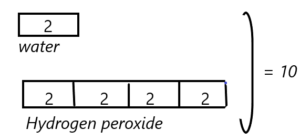 tablespoons of liquid,
tablespoons of liquid,
8 tablespoons of hydrogen peroxide is used in the solution.
Explanation: Given, hydrogen peroxide used in this solution is 4 times as many as water ,
so let us say that , Hydrogen peroxide is represented as H and water as W,
then we have H = 4W, from the model given we can say that
Hydrogen peroxide + water = 10 tablespoons of liquid,
we get H + W = 10
from above details we can write it as,
4W + W = 10
5W = 10
W = 10/5
w = 2. Replace this value in assumed equation H = 4W that is
H = 4(2)
H = 4 ×2
H = 8.
Hydrogen peroxide (H) = 8
Water (W) = 2, in total
8 + 2 = 10.
Given equation is balanced.
so here we are using 8 tablespoons of Hydrogen peroxide and 2 tablespoons of water to get the required 10 table spoons of liquid.
Find the number of tablespoons of water.
The model shows ______ equal parts. There are ______ tablespoons of liquid in all.
Answer: The model shows 2 tablespoons of water . There are 10 tablespoons of liquid in all.
5 × ? = 10 Think: 5 times what number equals 10?
Answer: 5 × 2 = 10.
Explanation: 10 is 5 times as many as 2.
You use _______ tablespoons of water.
Answer: we use 2 tablespoons of water in the liquid.
Find the number of tablespoons of hydrogen peroxide.
You use ________ times as much hydrogen peroxide as water.
Answer: we use 4 times as much Hydrogen peroxide as water.
2 × 4 = ______
Answer: 2 × 4 = 8. 8 is 2 times as many as 4.
So, you use _______ tablespoons of hydrogen peroxide.
Answer: we use 8 tablespoons of Hydrogen peroxide.
Show and Grow
Question 15.
A bicycle-sharing station on Main Street has 5 times as many bicycles as a station on Park Avenue. There are 24 bicycles at the two stations. How many bicycles are at the Main Street station?
Answer: 20
Explanation: Let us say ,Main street as M and Park Avenue as P,
Given that main street has 5 times as many bicycles as a station on Park Avenue so we get, M = 5P
And there are 24 bicycles at the two stations from that we have M + P = 24,
by replacing the M value in the equation M + P = 24 we get,
5P + P = 24
6P = 24
P = 24/6
P = 4. replace this P value in the above equation M = 5P to get M value, then
M = 5(4)
M = 5 × 4
M = 20.
so we have M = 20 and P = 4, in total
20 + 4 = 24. the given equation is balanced.
Finally, we have 20 bicycles at the Main street station and 4 bicycles at the Park Avenue station.
Question 16.
In the 2016 Olympics, Brazil won 6 silver medals. France won 3 times as many silver medals as Brazil. How many silver medals did France win?
Answer: 18 silver medals.
Explanation:
Brazil = 6 silver medals,
France = 3 times as many as brazil ,
so 3 × 6 = 18.
France has won 18 silver medals.
Question 17.
Of all the national flags in the world, there are 3 times as many red, white, and blue flags as there are red, white, and green flags. There are 40 flags with these color combinations. How many more flags are red, white, and blue than red, white, and green?
Answer:
Understand Multiplicative Comparisons Homework & Practice 3.1
Write two comparison sentences for the equation.
Question 1.
24 = 8 × 3
Answer: 24 is 8 times as many as 3. or
24 is 3 times as many as 8.
Explanation: we should multiply the numbers 8 and 3 ,
to get the multiplication result as 24.
Question 2.
14 = 7 × 2
Answer: 14 is 7 times as many as 2. or
14 is 2 times as many as 7.
Explanation: we should multiply the numbers 7 and 2 ,
to get the multiplication result as 14.
Write an equation for the comparison sentence.
Question 3.
30 is 6 times as many as 5.
Answer: 30 = 6 × 5
Explanation: we should multiply the numbers 6 and 5,
to get the multiplication result as 30.
Question 4.
27 is 3 times as many as 9.
Answer: 27 = 3 × 9
Explanation: we should multiply the numbers 3 and 9,
to get the multiplication result as 27.
Question 5.
12 is 7 more than 5.
Answer: 12 = 7 + 5
Explanation: we should add the numbers 7 and 5,
to get the Addition result as 12.
Question 6.
10 is 2 times as many as 5.
Answer: 10 = 2 × 5
Explanation: we should multiply the numbers 2 and 5,
to get the multiplication result as 10.
Question 7.
The House of Representatives has 335 more members than the Senate. The Senate has 100 members. How many members does the House of Representatives have?
Answer: 435 members.
Explanation:
senate has 100 members so, 335 + 100 = 435 .
House of representatives have 435 members.
Question 8.
A lion’s roar can be heard 5 miles away. The vibrations from an elephant’s stomp can be felt 4 times as many miles away as the lion’s roar can be heard. How many miles away can the vibrations be felt?
Answer: 20 miles.
Explanation:
a lion’s roar can be heard from 5 miles away
Elephant’s stomp can be felt 4 times as many miles away from the lion’s roar ,
that is 4 × 5 = 20.
Question 9.
Reasoning
Newton says the equation 270 = 30 × 9 means 270 is 30 times as many as 9. Descartes says it means 270 is 9 times as many as 30. Explain how you know they are both correct.
Answer: Multiplication is used to find as much or how, many times.
Since the two numbers 30 and 9 are the factors of multiplication they remain constant,
Even their position in the factors place changes,
The result will be the same product , that is 270.
Question 10.
Precision Compare the door’s height to the desk’s height using multiplication and addition.

Answer: Multiplication comparison:
Door’s height is 4 times the height of the desk’s height,
4 × 2 = 8.
Explanation: by multiplying the 4 times the height of the desk and 2 we get door’s height 8 feet.
Addition comparison:
Door’s height is 6 feet more than height of the desk,
6 + 2 = 8.
Explanation: by adding the 6 feet height of the desk and 2 we get the door’s height 8 feet.
Question 11.
Open-Ended
Write a comparison statement for a sum of 28.
Answer: 28 is 20 more than 8.
Explanation: 28 = 20 + 8 . The term sum here refers to addition of two number to get the total number.
Question 12.
Modeling Real Life
There are 12 shepherds and retrievers in all at a dog park. There are 2 times as many shepherds as retrievers. How many retrievers are there?
Answer: 8 retrievers.
Explanation: Total count of dogs at a dog park is 12.
Let us say that shepherds as S and retrievers as R , Given that, S + R = 12.
There are 2 times as many shepherds as retrievers.
we have S = 2R, by replacing this value in equation S + R = 12 we get,
2R + R = 12
3R = 12
R = 12/3
R = 4. To get S value substitute this value in S = 2R then
S = 2(4)
S = 2 × 4
S = 8.
Finally we have 8 shepherds and 4 retrievers in the dog park.
Question 13.
Modeling Real Life
Pythons sleep 6 times as long as horses. Horses sleep3 hours each day. How many hours do pythons sleep each day?
Answer: 18 hours.
Explanation: Horses sleep 3 hours and
Python sleep 6 times as long as horses
, so 6 x 3 = 18.
therefore python sleeps 18 hours each day.
Question 14.
DIG DEEPER!
You have 8 times as many dimes as nickels. You have18 dimes and nickels altogether. How much money do you have in all?
Answer: I have 16 dimes and 2 nickels.
Explanation: You have 8 times as many dimes as nickels
You have18 dimes and nickels altogether
Let us say, dimes as D and nickels as N then we have, D = 8N,
so, D + N = 18
8N + N = 18
9N = 18
N = 18/9
N = 2. replace the value in D = 8N , we get D = 8 × 2 = 16 .
So, I have 16 dimes and 2 nickels.
Review & Refresh
Find the missing factor.
Question 15.
7 × _____ = 280
Answer: 40
Explanation: 280 is 7 times as many as 40 ,
7 × 40 = 280.
we should multiply the numbers 7 and 40,
to get the multiplication result as 280.
Question 16.
____ × 30 = 270
Answer: 9
Explanation: 270 is 9 times as many as 30 ,
9 × 30 = 270.
we should multiply the numbers 30 and 9,
to get the multiplication result as 270.
Question 17.
8 × ____ = 640
Answer: 80
Explanation: 640 is 8 times as many as 80 ,
8 × 80 = 640.
we should multiply the numbers 8 and 80,
to get the multiplication result as 640.
Question 18.
____ × 90 = 540
Answer: 6
Explanation: 540 is 6 times as many as 90 ,
6 × 90 = 540.
we should multiply the numbers 6 and 90,
to get the multiplication result as 540.
Question 19.
2 × _____ = 40
Answer: 20
Explanation: 40 is 2 times as many as 20,
2 × 20 = 40.
we should multiply the numbers 2 and 20,
to get the multiplication result as 40.
Question 20.
_____ × 50 = 350
Answer: 7
Explanation: 350 is 7 times as many as 50 ,
7 × 50 = 350.
we should multiply the numbers 7 and 50,
to get the multiplication result as 350.
Lesson 3.2 Multiply Tens, Hundreds, and Thousands
Explore and Grow
Use models to find each product. Draw your models.

What pattern do you notice?
Answer: Model 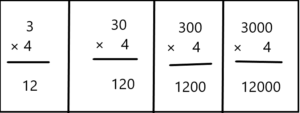
The Place- value method. From the above pattern, we can conclude that the result has different place-values of 12
Explanation:
The position of 3 is different in the given 4 multiplications.
So,
4 × 3 = 12
4 × 30 = 120
4 × 300 = 1200
4 × 3000 = 12,000
From the above pattern, we can conclude that the result has different place-values of 12.
Repeated Reasoning
How does 3 × 7 help you to find 3 × 7,000? Explain.
Answer: 3× 7 = 21
3 × 7000 = 21000
Explanation: When multiplying 3 by 7 we get 21 , same as that when we multiply 3 by 7000 we get 21000.
the number moves to the left and a zero is put in, ,
the number moves three places to the left and zeros are put in,
so the number would become 21000.
Think and Grow: Multiply Tens, Hundreds, and Thousands
You can use place value to multiply by tens, hundreds, or thousands.
Example
Find each product.
7 × 200 = 7 × _____ hundreds
= _____ hundreds
= ______
So, 7 × 200 = _____.
Answer: 1400
Explanation: Using the Place-value method,
7 × 200 = 7 × 2 hundreds
= 14 hundreds
= 1400
So, 7 × 200 = 1400.
3 × 4,000 = 3 × ______ thousands
= _____ thousands
= _____
So, 3 × 4,000 = ______.
Answer: 12000.
Explanation: Using the Place-value method,
3 × 4,000 = 3 × 4 thousands
= 12 thousands
= 12000
So, 3 × 4,000 = 12000.
Example
Find each product.
8 × 5 = 40 Multiplication fact
8 × 50 = 400 Find 8 × 5; write 1 zero to show tens.
Answer: 8 × 5 = 40 .
Explanation: By using the place-value method,
8 × 50 = 8 × 5 tens
= 40 × tens
= 400
So,
8 × 50 = 400.
8 × 500 = _____ Find 8 × 5; write 2 zeros to show hundreds.
Answer: 8 × 5 = 40 , 8 × 500 = 4000.
Explanation: By using the place-value method,
8 × 500 = 8 × 50 tens
= 8 × 5 × tens × tens
= 40 × tens × tens
= 4000
So,
8 × 500 = 4000.
8 × 5,000= ______ Find 8 × 5; write 3 zeros to show thousands.
Answer : 8 × 5 = 40, 8 × 5,000 = 40,000.
Explanation: By using the place-value method,
8 × 5000 = 8 × 500 tens
= 8 × 5 × tens × tens ×tens
= 40 × tens × tens × tens
= 40,000
So,
8 × 5000 = 40,000.
Notice the Pattern: Write the multiplication fact and the same number of zeros that are in the second factor.
Show and Grow
Find each product.
Question 1.
6 × 9 = ____
6 × 90 = ____
6 × 900 = ______
6 × 9,000 = _____
Answer: 6 × 9 = 54
6 × 90 = 540
6 × 900 =5400
6 × 9,000 = 54,000
Explanation: 6 × 9 = 54
By using the place-value method,
6 × 90 = 6× 9 tens
= 6 × 9 × tens
= 54 × tens
= 540
So,
6 × 90= 540.
By using the place-value method,
6 × 900 = 6× 90 tens
= 6 × 9 × tens × tens
= 54 × tens × tens
= 5400
So,
6 × 900= 5400.
By using the place-value method,
6 × 9,000 = 6× 900 tens
= 6 × 90 × tens × tens
= 6 × 9 × tens × tens × tens
= 54 × tens × tens × tens
= 54,000
So,
6 × 9,000 = 54,000.
Question 2.
5 × 2 = ____
5 × 20 = ____
5 × 200 = ______
5 × 2,000 = _____
Answer: 5 × 2 = 10
5 × 20 = 100
5 × 200 = 1000
5 × 2,000 = 10,000.
Explanation: 5 × 2 = 10.
By using the place-value method,
5 × 20 = 5 × 2 tens
= 10 × tens
= 100
So,
5 × 20 = 100.
By using the place-value method,
5 × 200 = 5 × 20 tens
= 5 × 2 × tens × tens
= 10 × tens × tens
= 1000
So,
5 × 200 = 1000.
By using the place-value method,
5 × 2,000 = 5× 200 tens
= 5 × 20 × tens × tens
= 5 × 2 × tens × tens × tens
= 10× tens × tens × tens
= 10,000
So,
5 × 2,000 = 10,000.
Question 3.
2 × 3 = _____
2 × 300 = _____
Answer: 2 × 3 = 6
2 × 300 = 600
Explanation: we should multiply 2 by 3 to get 6.
By using the place-value method,
2 × 300 = 2 × 30 tens
= 2 × 3 × tens × tens
= 6 × tens × tens
= 600
So,
2 × 300 = 600.
Question 4.
9 × 8 = _____
9 × 8,000 = _____
Answer: 9 × 8 = 72
9 × 8,000 = 72,000
Explanation: we should multiply 9 by 8 to get 72.
By using the place-value method,
9 × 8,000 = 9 × 800 tens
= 9 × 80 × tens × tens
= 9 × 8 × tens × tens × tens
= 72× tens × tens × tens
= 72,000
So,
9 × 8,000 = 72,000.
Apply and Grow: Practice
Find the product
Question 5.
7 × 700 = _____
Answer: 4900
Explanation:
By using the place-value method,
7 × 700 = 7 × 70 tens
= 7 × 7 × tens × tens
= 49 × tens × tens
= 4900
So,
7 × 700 = 4900.
Question 6.
3 × 100 = _____
Answer: 300
Explanation: By using the place-value method,
3 × 100 = 3 × 10 tens
= 3 × tens × tens
= 30× tens
= 300
So,
3 × 100 = 300.
Question 7.
8,000 × 3 = _____
Answer: 24,000
Explanation : By using the place-value method,
3 × 8,000 = 9 × 800 tens
= 3 × 80 × tens × tens
= 3 × 8 × tens × tens × tens
= 24× tens × tens × tens
= 24,000
So,
3 × 8,000 = 24,000.
Question 8.
60 × 2 = _____
Answer: 120
Explanation: By using the place-value method,
2 × 60 = 2 × 6 tens
= 12 × tens
= 120
So,
2 × 60 = 120.
Question 9.
4 × 4,000 = ______
Answer: 16,000.
Explanation : By using the place-value method,
4 × 4,000 = 4 × 400 tens
= 4 × 40 × tens × tens
= 4 × 4 × tens × tens × tens
= 16 × tens × tens × tens
= 16,000
So,
4 × 4,000 = 16,000.
Question 10.
700 × 5 = _____
Answer: 3500
Explanation: By using the place-value method,
5 × 700 = 5 ×70 tens
= 5 ×7 × tens × tens
= 350× tens
= 3500
So,
5 × 700 = 3500.
Question 11.
900 × 7 = _____
Answer: 6300
Explanation: By using the place-value method,
7 × 900 = 7 × 90 tens
= 7 × 9 × tens × tens
= 63 × tens × tens
= 6300
So,
7 × 900 = 6300.
Question 12.
50 × 3 = _____
Answer: 150
Explanation: By using the place-value method,
3 × 50 = 3 × 5 × tens
= 15 × tens
= 150
So,
3 × 50 = 150.
Question 13.
1,000 × 8 = ______
Answer: 8000
Explanation : By using the place-value method,
8 × 1,000 = 8 × 100 tens
= 8 × 10 × tens × tens
= 8 × tens × tens × tens
= 8,000
So,
8 × 1,000 = 8,000.
Find the missing factor
Question 14.
_____ × 6,000 = 24,000
Answer: 4 × 6,000 = 24,000
Explanation :Let the missing number be X
So, X × 6,000 = 24,000
X = 24,000 / 6,000 = 4
Hence, the value of X is: 4.
Question 15.
9 × ____ = 450
Answer: 9 × 50 = 450
Explanation :
Let the missing number be X
So, 9 × X = 450
X = 450 / 9 = 50
Hence, the value of X is: 50.
Question 16.
_____ × 30 = 210
Answer: 7 × 30 = 210
Explanation:
Let the missing number be X
So, X × 30 = 210
X = 210 / 30 = 7
Hence, the value of X is: 7
Question 17.
2 × _____ = 800
Answer: 2 × 400 = 800
Explanation:
Let the missing number be X
So, 2 × X = 800
X = 800 / 2 = 400
Hence, the value of X is: 400.
Question 18.
_____ × 1,000 = 9,000
Answer: 9 × 1,000 = 9,000
Explanation:
Let the missing number be X
So, X × 1,000 = 9,000
X = 9,000 / 1,000 = 9
Hence, the value of X is: 9.
Question 19.
8 × ____ = 640
Answer: 8 × 80 = 640.
Explanation :
Let the missing number be X
So, 8 × X = 640
X = 640 / 8 = 80
Hence, the value of X is: 80
Compare
Question 20.
![]()
Answer: 7 × 60 = 420
Explanation:
7 × 60 = 420
Given numbers are: 420 and 400
By comparing 2 values, we can conclude that 420 is greater than 400
Question 21.
![]()
Answer: 500 × 4 = 2,000.
Explanation:
500 × 4 = 2,000
Given numbers are: 2,000 and 2,000
By comparing 2 values, we can conclude that 2,000 is equal to 2,000
Question 22.
![]()
Answer: 3 × 9,000 = 27,000.
Explanation :
3 × 9,000 = 27,000
Given numbers are: 27,000 and 39,000
By comparing 2 values, we can conclude that 27,000 is less than 39,000.
Question 23.
The North Canadian River is 800 miles long. The Amazon River is 5 times longer than the North Canadian River. How many miles long is the Amazon River?

Answer: 4,000 miles
Explanation: Let us say North Canadian river as N and Amazon river as A ,
Given that Amazon river is 5 times longer than North Canadian river so A = 5N
N = 800 miles, get this value into above equation then,
A = 5(800)
= 5 × 800
= 4,000.
so Amazon river is 4,000 miles long.
Question 24.
One reusable bag can prevent the use of 600 plastic bags. Six reusable bags can prevent the use of how many plastic bags?
Answer: 3600 plastic bags
Explanation:
Given that , One reusable bag can prevent the use of 600 plastic bags.
if one bag = 600 plastic bags then six bags = ?
let us multiply the bags then we have 6 × 600 = 3600.
so, answer is 3600 plastic bags.
Question 25.
YOU BE THE TEACHER
Your friend says the product of 6 and 500 will have2 zeros. Is your friend correct? Explain.
Answer: NO
Explanation: 6 × 500 = 3,000.
they mentioned that result will have 2 zero’s,
but the actual product gives 3 zero’s.
Think and Grow: Modeling Real Life
Example
An aquarium has 7 bottle nose dolphins. Each dolphin eats 60 pounds of fish each day. The aquarium has510 pounds of fish. Does the aquarium have enough fish to feed the dolphins?
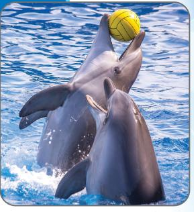
Answer: YES
Explanation: Let us say Aquarium as A and Dolphins as D
Given that A = 7D, Aquarium has 510 pounds of fish
Each D = 60 pounds, we get
A = 7 (60)
= 7 × 60
= 420.
All the dolphins will eat 420 pounds of fish and the Aquarium has 510 pounds.510 is greater than 420
Think: What do you know? What do you need to find? How will you solve?
Step 1: How many pounds of fish do all of the dolphins eat?
7 × 60 = _____
Answer: 7 × 60 = 420.
All of the dolphins eat _______ pounds of fish.
Answer: 420 pounds.
Step 2: Compare the number of pounds of fish all of the dolphin seat to the number of pounds of fish the aquarium has.
Answer: Aquarium has 510 pounds of fish and all the dolphins will eat 420 pounds of fish
so, 510 is greater than 420
The aquarium _______ have enough fish to feed the dolphins.
Answer: 510 pounds of fish.
Show and Grow
Question 26.
Students want to make 400 dream catchers for a craft fair. Each dream catcher needs 8 feathers. The students have3,100 feathers. Do the students have enough feathers for all of the dream catchers?
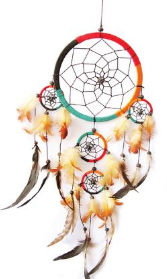
Answer: NO
Explanation: Let us say Dream catcher as D and Feathers as F, total Dream catchers we want are 400 and
Each Dream catcher needs 8 Feathers so D = 8F, students have 3,100 Feathers
Then , by calculating , 3,100 /8 = 387.5.
to get up to the total count of required 400 Dream catchers Feathers are not sufficient as 400 is greater than 387.
Question 27.
A principal has 3 rolls of 800 raffle tickets each and 5 rolls of 9,000 raffle tickets each. How many raffle tickets does the principal have?
Answer: 47,400 raffle tickets are there with the principal.
Explanation: A principal has 3 rolls of 800 raffle tickets each and 5 rolls of 9,000 raffle tickets each.
Then we have 3 × 800 and 5 × 9,000
= 2,400 and 45,000
Totally , 45,000 + 2,400 = 47,400 .
So, 47,400 raffle tickets are there with the principal.
Question 28.
You have 2 sheets of 4 stickers each. Your friend has 20 times as many stickers as you. Your teacher has 700 times as many stickers as you. How many stickers do the three of you have in all?
Answer: Three of us have 5,768 stickers in all.
Explanation: You have 2 sheets of 4 stickers each. that is 2 × 4 = 8 stickers.
Your friend has 20 times as many stickers as you. that is 20 × 8 = 160 stickers.
Your teacher has 700 times as many stickers as you. that is 700 × 8 = 5,600 stickers.
Then 5,600 + 160 + 8 = 5,768 stickers.
So, Three of us have 5,768 stickers in all.
Multiply Tens, Hundreds, and Thousands Homework & Practice 3.2
Find each product
Question 1.
3 × 3 = ____
3 × 30 = ____
3× 300 = ______
3 × 3,000 = _____
Answer: 3 × 3 = 9
3 × 30 = 90
3× 300 = 900
3 × 3,000 = 9,000
Explanation: 3 × 3 = 9
By using the place-value method,
3 × 30 = 3× 3 × tens
= 9 × tens
= 90
So,
3 × 30= 90.
By using the place-value method,
3 × 300 = 3× 30 tens
= 3 × 3 × tens × tens
= 9 × tens × tens
= 900
So,
3 × 300= 900.
By using the place-value method,
3 × 3,000 = 3 × 300 tens
= 3 × 30 × tens × tens
= 3 × 3 × tens × tens × tens
= 9 × tens × tens × tens
= 9,000
So,
3 × 3,000 = 9,000.
Question 2.
8 × 7 = ____
8 × 70 = ____
8 × 700 = ______
8 × 7,000 = _____
Answer: 8 × 7 = 56
8 × 70 = 560
8 × 700 = 5600
8 × 7,000 = 56,000
Explanation: 8 × 7 = 56
By using the place-value method,
8 × 70 = 8 × 7 tens
= 8 × 7 × tens
= 56 × tens
= 560
So,
8 × 70= 560.
By using the place-value method,
8 × 700 = 8 × 70 tens
= 8 × 7 × tens × tens
= 56 × tens × tens
= 5600
So,
8 × 700= 5600.
By using the place-value method,
8 × 7,000 = 8 × 700 tens
= 8 × 70 × tens × tens
= 8 × 7 × tens × tens × tens
= 56 × tens × tens × tens
= 56,000
So,
8 × 7,000 = 56,000.
Find the product.
Question 3.
9 × 90 = ____
Answer: 9 × 90 = 810
Explanation: we should multiply 9 by 9 to get 81 that implies 9 × 90 = 810.
By using the place-value method,
9 × 90 = 9 × 9 tens
= 81 × tens
= 810
So,
9 × 90 = 810.
Question 4.
6,000 × 1 = _____
Answer: 6,000 × 1 = 6,000.
Explanation : By using the place-value method,
1 × 6,000 = 1× 600 tens
= 1 × 60 × tens × tens
= 1 × 6 × tens × tens × tens
= 6 × tens × tens × tens
= 6,000
So,
1 × 6,000 = 6,000.
Question 5.
8 × 200 = _____
Answer: 8 × 200 = 1600.
Explanation: By using the place-value method,
8 × 200 = 8 ×20 tens
= 8 ×2 × tens × tens
= 160× tens
= 1600
So,
8 × 200 = 1600.
Question 6.
3,000 × 6 = _____
Answer: 3,000 × 6 = 18,000.
Explanation : By using the place-value method,
6 × 3,000 = 6 × 300 tens
= 6 × 30 × tens × tens
= 6 × 3 × tens × tens × tens
= 18 × tens × tens × tens
= 18,000
So,
6 × 3,000 = 18,000.
Question 7.
5 × 500 = _____
Answer: 5 × 500 = 2500.
Explanation: By using the place-value method,
5 × 500 = 5 ×50 tens
= 5 ×5 × tens × tens
= 250× tens
= 2500
So,
5 × 500 = 2500.
Question 8.
2 × 90 = ______
Answer: 2 × 90 = 180
Explanation: By using the place-value method,
2 × 90 = 2 × 9 × tens
= 18 × tens
= 180
So,
2 × 90 = 180.
Question 9.
7 × 300 = ______
Answer: 7 × 300 = 2100
Explanation: By using the place-value method,
7 × 300 = 7 × 30 tens
= 7 × 3 × tens × tens
= 21 × tens × tens
= 2100
So,
7 × 300 = 2100.
Question 10.
20 × 2 = _____
Answer: 20 × 2 = 40
Explanation: By using the place-value method,
2 × 20 = 2 × 2 × tens
= 4 × tens
= 40
So,
2 × 20 = 40.
Question 11.
6,000 × 5 = _____
Answer: 6,000 × 5 = 30,000.
Explanation : By using the place-value method,
5 × 6,000 = 5 × 600 tens
= 5 × 60 × tens × tens
= 5 × tens × tens × tens
= 30,000
So,
5 × 6,000 = 30,000.
Find the missing factor.
Question 12.
_____ × 400 = 3,200
Answer: 8 × 400 = 3,200
Explanation:
Let the missing number be X
So, X × 400 = 3,200
X = 3,200 / 300 = 8
Hence, the value of X is: 8
Question 13.
1 × _____ = 500
Answer: 1 × 500 = 500.
Explanation:
Let the missing number be X
So, 1 × X = 500
X = 500 / 1 = 500
Hence, the value of X is: 500
Question 14.
_____ × 300 = 1,200
Answer: 4 × 300 = 1,200
Explanation:
Let the missing number be X
So, X × 300 = 1,200
X = 1,200 / 300 = 4
Hence, the value of X is: 4
Question 15.
8 × ____ = 720
Answer: 8 × 90 = 720
Explanation:
Let the missing number be X
So, 8 × X = 720
X = 720 / 8 = 90
Hence, the value of X is: 90
Question 16.
_____ × 1,000 = 7,000
Answer: 7 × 1,000 = 7,000
Explanation :
Let the missing number be X
So, X × 1,000 = 7,000
X = 7,000 / 1,000 = 7
Hence, the value of X is: 7
Question 17.
8 × _____ = 4,800
Answer: 8 × 600 = 4,800
Explanation:
Let the missing number be X
So, 8 × X = 4,800
X = 4,800 / 8 = 600
Hence, the value of X is: 600
Compare.
Question 18.
![]()
Answer: 9 × 400 is equal to 3,600
Explanation:
9 × 400 = 3,600
Given numbers are: 3,600 and 3,600
By comparing 2 values, we can conclude that 3,600 is equal to 3,600
Question 19.
![]()
Answer: 360 is less than 660
Explanation:
6 × 60 = 360
Given numbers are: 360 and 660
By comparing 2 values, we can conclude that 360 is less than 660.
Question 20.
![]()
Answer: 16,000 is greater than 10,000
Explanation:
8,000 × 2 = 16,000
Given numbers are: 16,000 and 10,000
By comparing 2 values, we can conclude that 16,000 is greater than 10,000
Question 21.
Patterns
Describe and complete the pattern.
1 × 4 = _____
2 × 40 = _____
3 × 400 = ____
_____ × _____ = _____
_____ × _____ = ______
Answer: 1 × 4 = 4
2 × 40 = 80
3 × 400 = 1200
4 × 4,000 = 16,000
5 × 40,000 = 200,000
Explanation : we should multiply the numbers 1 and 4 to get 4 .
By using the place-value method,
2 × 40 = 2 × 4 tens
= 8 × tens
= 80
So,
2 × 40 = 80.
By using the place-value method,
3 × 400 = 3 × 40 tens
= 3 × 4 × tens × tens
= 12 × tens × tens
= 120× tens
= 1200
So,
3 × 400 = 1200.
By using the place-value method,
4 × 4,000 = 4 × 4,000 tens
= 4 × 40 × tens × tens
= 4 × 4 × tens × tens × tens
= 16× tens × tens × tens
= 16,000
So,
4 × 4,000 = 16,000.
By using the place-value method,
5 × 40,000 = 5 × 4,000 tens
= 5 × 400 × tens × tens
= 5 × 40 × tens × tens × tens
= 5 × 4 × tens × tens × tens × tens
= 200,000
So,
5 × 40,000 = 200,000.
Question 22.
DIG DEEPER!
Without calculating, tell whether the product of 5 and 700 or the product of 5 and 7,000 is greater. Explain how you know.
Answer: The place value method.
This is a common method used to know how to multiply by ten: When multiplying 5 by ten, the number moves to the left and a zero is put in, so the number becomes 50. If you multiply 5 by 100, the number moves two places to the left and zeros are put in, so the number would become 500.
Explanation:
This shows that to know the greater value of the product of 5 and 700 or the product of 5 and 7,000 is determined by the place of the zero’s in the number.
So, product of 5 and 7,000 is greater than the product of 5 and 700.
Question 23.
Writing
How does 3 × 6 help you to find 3,000 × 6? Explain.
Answer: 3 × 6 = 18 so 3,000 × 6 = 18000.
Explanation: we should multiply the 3 and 6 to get 18 ,like wise
the zero’s value increases when they start to move left side adding another zero until the thousands place is filled so we have
3,000 × 6 = 18,000.
Question 24.
Open-Ended
Write a multiplication equation with a product of 120.
Answer: 4 × 30 = 120 or 3 × 40 = 120
Explanation: the product of the two numbers 4 and 3 is 12 that implies
if the zero, is in tens place in any one of the number in multiplying
we get the same number as a product so, 4 × 30 = 120 or 3 × 40 = 120.
Question 25.
Modeling Real Life
A second grade student answers about 2,000 math problems each month. A fourth grade student answers about 7,000 math problems each month. How many total problems would 8 second grade students and 9 fourth grade students answer in one month?
Answer: Totally they both answer 79,000 math problems in one month.
Explanation: A second grade student answers about 2,000 math problems each month.
For 8 students to solve in 1 month we have, 8 × 2,000 = 16,000.
A fourth grade student answers about 7,000 math problems each month.
For 9 students to solve in 1 month we have, 9 × 7,000 = 63,000.
They both have answered, 63,000 + 16,000 = 79,000.
Totally they both answer 79,000 math problems in one month.
Question 26.
Modeling Real Life
A teacher has 5 boxes with 50 pencils in each box. He also has 3 boxes with 20 pens in each box. A student donates 25 pencils. How many pens and pencils does the teacher have now?
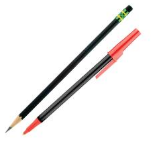
Answer: He has 275 pencils and 60 pens.
Explanation: A teacher has 5 boxes with 50 pencils in each box. so, 5 × 50 = 250 pencils
He also has 3 boxes with 20 pens in each box. so, 3 × 20 = 60 pens.
A student donates 25 pencils. so 250 + 25 = 275 pencils.
So, He has 275 pencils and 60 pens.
Review & Refresh
Complete the table.
Question 27.
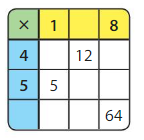
Answer: 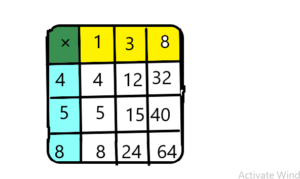
Question 28.
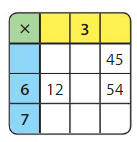
Answer: 
Lesson 3.3 Estimate Products of Rounding
Explore and Grow
There are 92 marbles in each jar.

Estimate the total number of marbles in two ways.
Answer: 540 and 600
Explanation: 1 jar has 92 marbles, then 6 jars has 6 × 92 marbles
Round to the nearest tens.
92 is close to 90;
6 x 90 = 540.
and
Round to the nearest tens.
92 is close to 100;
6 x 100 = 600.
So the total number of marbles count is in between 540 and 600.
Round 92 to the nearest ten.
Answer: 90
Explanation: Round the nearest tens , so 92 is close to 90.
Round 92 to the nearest hundred.
Answer: 100
Explanation: Round the nearest tens , so 92 is close to 100.
Which estimate do you think is closer to the total number of marbles? Explain.
Answer: 540. The one 92 is closer to 90.
Because marbles in all jars are calculated as 552 by multiplying the 6 and 992.
Explanation: 1 jar has 92 marbles, then 6 jars has 6 × 92 marbles
Round to the nearest tens.
92 is close to 90;
6 x 90 = 540.
and
Round to the nearest tens.
92 is close to 100;
6 x 100 = 600.
So the total number of marbles count is in between 540 and 600.
Repeated Reasoning
Would your answer to the question above change if there were 192 marbles in each jar? Explain
Answer: Yes. 1,140 and 1200.
Explanation: 1 jar has 192 marbles, then 6 jars has 6 × 192 marbles
Round to the nearest tens.
192 is close to 190;
6 x 190 = 1,140.
and
Round to the nearest tens.
192 is close to 200;
6 x 200 = 1200.
So the total number of marbles count is in between 1,140 and 1200.
Think and Grow: Estimate Products
You can estimate a product by rounding.

Example
Estimate 7 × 491
Round 491 to the nearest hundred. Then multiply.
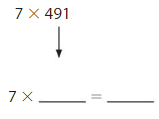
So, 7 × 491 is about ______.
Answer: 3,430
Explanation:
Round to the nearest tens.
491 is close to 490; ;
7 x 490 = 3,430
When solving multiplication problems, you can check whether an answer is reasonable by finding two estimates that a product is between.
Example
Find two estimates that the product of 4 × 76 is between.
Think: 76 is between 70 and 80.

So, the product is between _______ and ____.
Answer: 280 and 320.
Explanation:
Round to the nearest tens.
76 is close to 70;
4 x 70 = 280.
or
Explanation:
Round to the nearest tens.
76 is close to 80;
80 x 4 = 320
Show and Grow
Estimate the product.
Question 1.
3 × 89
Answer: 270
Explanation:
Round to the nearest tens.
89 is close to 90;
3 x 90 = 270
Question 2.
8 × 721
Answer: 5,760
Explanation:
Round to the nearest tens.
721 is close to 720;
8 x 720 = 5,760
Question 3.
5 × 7,938
Answer: 39,700
Explanation:
Round to the nearest tens.
7,938 is close to 7,940;
5 x 7,940 = 39,700
Find two estimates that the product is between
Question 4.
9 × 44
Answer: 360 and 450
Explanation:
Round to the nearest tens.
44 is close to 40;
9 x 40 = 360
and
Explanation:
Round to the nearest tens.
44 is close to 50;
9 x 50 = 450
The product is in between 360 and 450.
Question 5.
2 × 657
Answer: 1,300 and 1,320
Explanation:
Round to the nearest tens.
657 is close to 650;
2 x 650 = 1,300
and
Explanation:
Round to the nearest tens.
657 is close to 660;
2 x 660 = 1,320
The product is in between 1,300 and 1,320
Question 6.
6 × 4,243
Answer: 25,440 and 25,500
Explanation:
Round to the nearest tens.
4,243 is close to 4,240;
6 x 4,240 = 25,440
and
Explanation:
Round to the nearest tens.
4,243 is close to 4,250;
6 x 4,250 = 25,500
The product is in between 25,440 and 25,500
Apply and Grow: Practice
Estimate the product.
Question 7.
4 × 65
Answer: 240
Explanation:
Round to the nearest tens.
65 is close to 60;
4 x 60 = 240
Question 8.
248 × 7
Answer: 1,750
Explanation:
Round to the nearest tens.
248 is close to 250;
250 x 7 = 1,750
Question 9.
3 × 9,032
Answer: 27,090
Explanation:
Round to the nearest tens.
9,032 is close to 9,030;
3 x 9,030 = 27,090
Find two estimates that the product is between.
Question 10.
32 × 9
Answer: 270 and 360
Explanation:
Round to the nearest tens.
32 is close to 30;
9 x 30 = 270
and
Explanation:
Round to the nearest tens.
32 is close to 40;
9 x 40 = 360
The product is in between 270 and 360
Question 11.
970 × 5
Answer: 4,850
Explanation:
There is no need to Round to the nearest tens. Because the number 970 is already has its tens value
970 x 5 = 4,850 .
Question 12.
6 × 5,328
Answer: 31,920 and 31,968
Explanation:
Round to the nearest tens.
5,328 is close to 5,320;
6 x 5,320 = 31,920
Explanation:
Round to the nearest tens.
5,328 is close to 5,330;
6 x 5,330 = 31,968
Question 13.
A sales representative sells 4 smart watches for $199 each. To determine whether the sales representative collects at least $1,000, can you use an estimate, or is an exact number required? Explain.

Answer: $800
Explanation: if each watch cost $199, 4 × 199
then 4 watches costs $ 800
Round to the nearest tens.
199 is close to 200;
4 x 200 = 800
The estimated cost is $800.
YOU BE THE TEACHER
A student finds the product. Is her answer reasonable? Estimate to check.
Question 14.

Answer: The answer is not reasonable
Explanation: The given number is already at its tens place so,
There is no need to Round to the nearest tens.
480 x 8 = 3,840
Question 15.

Answer: 7,600
The product is equal to the result but the estimated result is different
Explanation:
Round to the nearest tens.
1,904 is close to 1,900;
1,900 x 4 = 7,600
Number Sense
Use two of the numbers below to write an expression for a product that can be estimated as shown. You may use the numbers more than once.
![]()
Question 16.
Estimate: 40,000
____ × _____
Answer: 5 and 8,932 are used here.
Explanation:
Round to the nearest tens.
8,932 is close to 8,930;
5 x 8,930 = 44,650
The product is estimated as the nearest to 40,000
Question 17.
Estimate: 9,000
_____ × ____
Answer: 3 and 2,842 are used here.
Explanation:
Round to the nearest tens.
2,842 is close to 2,850;
3 x 2,850 = 8,550
The product is estimated as the nearest to 9,000
Question 18.
Estimate: 72,000
_____ × ______
Answer: 8 and 8,932 are used here.
Explanation:
Round to the nearest tens.
8,932 is close to 8,930;
8 x 8,930 = 71,440
The product is estimated as the nearest to 72,000.
Question 19.
Estimate: 45,000
_____ × ______
Answer: 5 and 8,932 are used here.
Explanation:
Round to the nearest tens.
8,932 is close to 8,930;
5 x 8,930 = 44,650
The product is estimated as the nearest to 45,000.
Think and Grow: Modeling Real Life
Example
About how much more money was earned from new release rentals than from top pick rentals?
Estimate the amount of money earned from new release rentals.


So, about $ ______ more was earned from new release rentals.
Answer: Estimation of the amount of money earned from new release rentals is $15,250,
Estimation of the amount of money earned from top pick rentals is $11,970,
Money was earned from new release rentals than from top pick rentals is $3,280
Explanation:
Estimation of the amount of money earned from new release rentals is
Round to the nearest tens.
3,047 is close to 3,050;
$5 x 3,050 = $15,250
Estimation of the amount of money earned from top pick rentals is
Round to the nearest tens.
3,986 is close to 3,990;
$3 x 3,990 = $11,970
Money was earned from new release rentals than from top pick rentals is
subtract $11,970 from $15,250 then we get $3,280.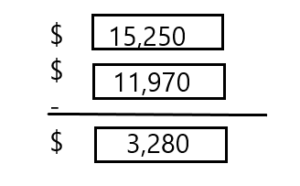 .
.
Show and Grow
Use the graph above.
Question 20.
About how much more money was earned from top pick rentals than from television episode rentals?
Answer: Estimation of the amount of money earned from top pick rentals is $11,970
Estimation of the amount of money earned from to television episode rentals is $1,700
Money was earned from top pick rentals than from television episode rentals is $10,270
Explanation: Estimation of the amount of money earned from top pick rentals is
Round to the nearest tens.
3,986 is close to 3,990;
$3 x 3,990 = $11,970
Estimation of the amount of money earned from to television episode rentals is
Round to the nearest tens.
849 is close to 850;
$2 x 850 = $1,700
Money was earned from top pick rentals than from television episode rentals is
subtract $1,700 from $11,970 we get $10,270.
Question 21.
Your friend says that the number of top picks rented is about 5 times as many as the number of television episodes rented. Is your friend correct? Explain.
Answer: yes. The number of top picks rented is about 5 times as many as the number of television episodes rented.
Explanation: Estimation of the amount of money earned from top pick rentals is
Round to the nearest tens.
3,986 is close to 3,990;
$3 x 3,990 = $11,970
Estimation of the amount of money earned from to television episode rentals is
Round to the nearest tens.
849 is close to 850;
$2 x 850 = $1,700
Money was earned from top pick rentals than from television episode rentals is
subtract $1,700 from $11,970 we get $10,270.
The number of top picks rented is about 5 times as many as the number of television episodes rented.
5 × $1,700 = $8,500
Question 22.
An accountant says that the total amount of money earned from new release rentals is $11,958. Check whether the accountant’s answer is reasonable by finding two estimates that the total is between.

Answer: The total amount of money earned from new release rentals is $11,958 is not reasonable .
Explanation:
Estimation of the amount of money earned from new release rentals is
Round to the nearest tens.
3,047 is close to 3,040;
$5 x 3,040 = $15,200
Estimation of the amount of money earned from new release rentals is
Round to the nearest tens.
3,047 is close to 3,050;
$5 x 3,050 = $15,250
The estimated product should be in between $15,200 and $15,250
Estimate Products of Rounding Homework & Practice 3.3
Estimate the product
Question 1.
7 × 42
Answer: 280
Explanation:
Round to the nearest tens.
42 is close to 40;
7 x 40 = 280
Question 2.
85 × 4
Answer: 320
Explanation:
Round to the nearest tens.
85 is close to 80;
4 x 80 = 320
Question 3.
2 × 698
Answer: 1,400
Explanation:
Round to the nearest tens.
698 is close to 700;
2 x 700 = 1,400
Question 4.
6 × 705
Answer: 4,200
Explanation:
Round to the nearest tens.
705 is close to 700;
6 x 700 = 4,200
Question 5.
1,834 × 9
Answer: 16,470
Explanation:
Round to the nearest tens.
1,834 is close to 1,830;
9 x 1,830 = 16,470
Question 6.
7,923 × 8
Answer: 63,360
Explanation:
Round to the nearest tens.
7,923 is close to 7,920;
8 x 7,920 = 63,360
Find two estimates that the product is between
Question 7.
3 × 95
Answer: 270 and 300
Explanation:
Round to the nearest tens.
95 is close to 90;
3 x 90 = 270
and
Explanation:
Round to the nearest tens.
95 is close to 100;
3 x 100 = 300
The product is in between 270 and 300
Question 8.
23 × 5
Answer: 100 and 150
Explanation:
Round to the nearest tens.
23 is close to 20;
20 x 5 = 100
and
Explanation:
Round to the nearest tens.
23 is close to 30;
5 x 30 = 150
The product is in between 100 and 150
Question 9.
537 × 6
Answer: 3,240 and 3,180
Explanation:
Round to the nearest tens.
537 is close to 530;
6 x 530 = 3,180
and
Explanation:
Round to the nearest tens.
537 is close to 540;
6 x 540 = 3,240
The product is in between 3,240 and 3,180
Question 10.
8 × 309
Answer: 2,400 and 2,4800
Explanation:
Round to the nearest tens.
309 is close to 300;
8 x 300 = 2,400
and
Explanation:
Round to the nearest tens.
309 is close to 310;
8 x 310 = 2,480
The product is in between 2,400 and 2,4800
Question 11.
1,649 × 7
Answer:
Explanation:
Round to the nearest tens.
1,649 is close to 1,640;
1,640 x 7 = 11,480
and
Explanation:
Round to the nearest tens.
1,649 is close to 1,650;
1,650 x 7 = 11,550
The product is in between 11,480 and 11,550.
Question 12.
4 × 6,203
Answer: 24,800 and 24,840.
Explanation:
Round to the nearest tens.
6,203 is close to 6,200;
4 x 6,200 = 24,800
Explanation:
Round to the nearest tens.
6,203 is close to 6,210;
4 x 6,210 = 24,840
The product is in between 24,800 and 24,840.
Question 13.
Construction workers build 54 feet of a bridge each day for 9 days. To determine whether the bridge is at least 490 feet long, can you use an estimate, or is an exact answer required? Explain.
Answer: exact answer is 9 × 54 = 486 feet long .which is close to the target of 490 feet long
Explanation: if 54 feet of a bridge each day for 9 days, we get 9 × 54
Round to the nearest tens.
54 is close to 500;
9 x 50 = 450.
The estimated product 450 feet is close to given target of 490 feet long and an exact answer can also satisfies.
Question 14.
YOU BE THE TEACHER
A student finds the product. Is his answer reasonable? Estimate to check.

Answer: Yes .The answer is reasonable and The estimated product is 17,070.
Explanation: 5,692 × 3
Round to the nearest tens.
5,692 is close to 5,690;
3 x 5,690 = 17,070
The estimated product is 17,070
Question 15.
DIG DEEPER!
An astronaut earns $5,428 each month. You estimate that she will earn $35,000 in 7 months. Is the amount she earns in 7 months greater than or less than your estimate? Explain.
Answer: The estimated product $38,010 is greater than the given $35,000.
Explanation:
if astronaut earns $5,428 each month then ,
Estimation of the amount of money earned for 7 months is $5,428 × 7
Round to the nearest tens.
5,428 is close to 5,430;
$5,430 x 7 = $38,010
The estimated product $38,010 is greater than the given $35,000.
Question 16.
Writing
Explain how estimating by rounding can be helpful as a check when finding a product.
Answer: sTo find the actual product of the two factors of numbers are quite hard for larger digit numbers so by rounding the higher digit numbers which have nearest to 10’s or 100’s. We will get the estimated product easily and fast . To get the actual product we have to use the normal method .
Modeling Real Life
Use the graph to answer the question.

Question 17.
Which animal has a heart rate that is about 2 times as fast as a whale’s?
Answer: Horse
Explanation: whale has heart rate of 20 Bpm
Horse has around 40 Bpm as per the given details, so
Horse = 2(20) Bpm
Horse has a heart rate that is about 2 times as fast as a whale’s
Question 18.
About how many times does a giraffe’s heart beat in 5 minutes? Find two estimates that the answer is between.
Answer: 300 and 350 times
Explanation:
Giraffe’s heart beat is in between 60 and 70 as per the details so
to find for 5 min we have to multiply 5 × 60 and 5 × 70
so, 300 and 350 is the estimation times.
Review & Refresh
Use the Distributive Property to find the product.
Question 19.
9 × 6 = ____ × (5 + ____)
= (9 × 5) + (____ + _____)
= ____ + ____
= _____
Answer: 54
Explanation: by using Distributive property
9 × 6 = 9 × (5 + 1)
= (9 × 5) + (9 × 1)
= 45 + 9
= 54
Question 20.
7 × 7 = 7 × (5 + ____)
= (_____ × 5) + (7 × _____)
= _____ + _____
= _____
Answer: 49
Explanation: by using Distributive property
7 × 7 = 7 × (5 + 2)
= (7 × 5) + (7 × 2)
= 35 + 14
= 49
Lesson 3.4 Use the Distributive Property to Multiply
Explore and Grow
Use base ten blocks to model 4 × 16. Draw your model. Then find the area of the model.

4 × 16 = _____
Break apart 16 to show two smaller models. Find the area of each model. What do you notice about the sum of the areas?
Area = _____ Area = ______
Answer: 64
Explanation: 4 × 16 = 4× (10 + 6)
= (4 × 10) + (4 × 6)
= 40 + 24
= 64
Reasoning
How does this strategy relate to the Distributive Property? Explain.
Answer: Because of the evenly distributed numbering among the place – values of the numbers. This property helps to find the product in a easy way.
Think and Grow: Use the Distributive Property to Multiply
Think: One way to multiply a two-digit number is to first break apart the number. Then use the Distributive Property.

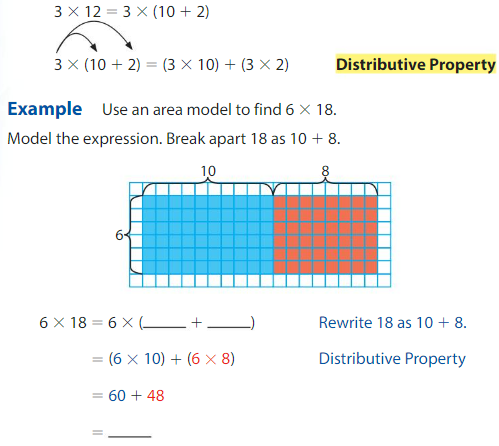
Answer: 108
Show and Grow
Draw an area model. Then find the product.
Question 1.
7 × 11 = ____
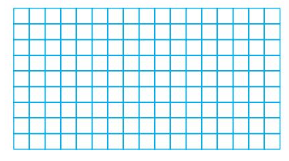
Answer: 77
Explanation: 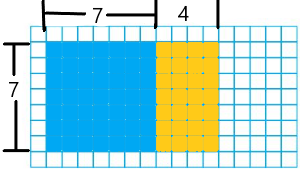
by using Distributive property
7 × 11 = 7 × (7 + 4)
= (7 × 7) + (7 × 4)
= 49 + 28
= 77
Question 2.
2 × 15 = _____
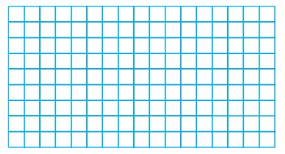
Answer: 30
Explanation: 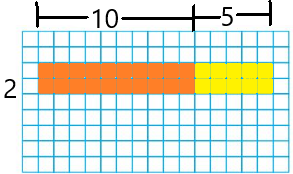
by using Distributive property
2 × 15 = 2 × 10 + 5)
= (2 × 10) + (2 × 5)
= 20 + 10
= 30
Apply and Grow: Practice
Draw an area model. Then find the product.
Question 3.
4 × 16 = ______
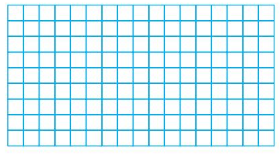
Answer: 64
Explanation: 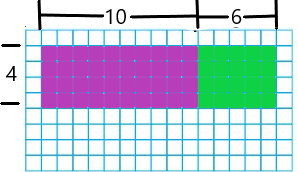
by using distributive property
4 × 16 = 4× (10 + 6)
= (4 × 10) + (4 × 6)
= 40 + 24
= 64
Question 4.
9 × 18 = _____

Answer: 162
Explanation: 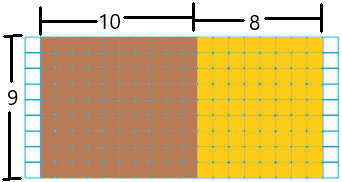
by using distributive property
9 × 18 = 9× (10 + 8)
= (9 × 10) + (9 × 8)
= 90 + 72
= 162
Question 5.
6 × 27 = _____

Answer: 162
Explanation: 
by using distributive property
6 × 27 = 6× (20 + 7)
= (6 × 20) + (6 × 7)
= 120 + 42
= 162
Find the product.
Question 6.
3 × 46 = _____
Answer: 129
Explanation: by using distributive property
3 × 43 = 3 × (40 + 3)
= (3 × 40) + (3 × 3)
= 120 + 9
= 129
Question 7.
8 × 35 = ____
Answer: 280
Explanation: by using distributive property
8 × 35 = 8× (30 + 5)
= (8 × 30) + (8 × 5)
= 240 + 40
= 280
Question 8.
5 × 72 = _____
Answer: 360
Explanation: by using distributive property
5 × 72 = 5 × (70 + 2)
= (5 × 70) + (5 × 2)
= 350 + 10
= 360
Question 9.
Number Sense
Use the area model to complete the equation

5 × ____ = _____
Answer: 5 × 34 = 170
Explanation: by using distributive property
5 × 34 = 5 × (30 + 4)
= (5 × 30) + (5 × 4)
= 150 + 20
= 170
Think and Grow: Modeling Real Life
Example
A parking garage has 9 floors. Each floor has 78 parking spaces. 705 cars are trying to park in the garage. Are there enough parking spaces? Explain.
Multiply the number of floors by the number of parking spaces on each floor.

Answer: Only 702 cars are able to park in the garage
Explanation: by using distributive property
9 × 78 = 9× (70 + 8)
= (9 × 70) + (9 × 8)
= 630 + 72
= 702
Compare the number of spaces to the number of cars trying to park in the garage.
There _____ enough parking spaces.
Explain:
Answer: Total number of spaces in the garage are 702 but as per the given details 705 are trying to park in the garage .
There are not enough parking spaces.
Show and Grow
Question 10.
Your piano teacher wants you to practice playing the piano 160 minutes this month. So far, you have practiced 5 minutes each day for 24 days. Have you reached the goal your teacher set for you? Explain.
Answer: 150 minutes
Explanation : practice for 160 minutes in a month ,say that 30 days
So far, you have practiced 5 minutes each day for 24 days. then, 5 × 24, By using distributive property
= 5 × (20+ 4)
= (5 × 20) + (5 × 4)
= 100 + 20
= 120
Remaining 6 days have to be practiced so ,5 × 6, By using distributive property
= 5 × (4 + 2)
= (5 × 4) + (5 × 2)
= 20 +10
= 30
Totally we have 120 + 30
= 150
Question 11.
Newton has $150. He wants to buy a bicycle that costs 4 times as much as the helmet. Does he have enough money to buy the bicycle and the helmet? Explain.

Answer: $112
Explanation: Helmet = $ 28 ,bicycle that costs 4 times as much as the helmet. so
Bicycle = 4 × $28, By using distributive property
= 4 × (20 + 8 )
= (4 × 20) + (4 × 8)
= 80 + 32
= 112. so ,The bicycle costs $112 and he has $150 so he can buy the Bicycle.
Question 12.
A baby orangutan weighs 3 pounds. The mother orangutan weighs 27 times as much as the baby. The father orangutan weighs 63 times as much as the baby. What are the weights of the mother and the father?

Answer: The mother orangutan weighs 81 pounds
The father orangutan weighs 189 pounds
Explanation: Baby orangutan = 3 pounds
Mother orangutan weighs 27 times as much as the baby , 27 × 3, By using distributive property
3 × 27 = 3 × (20 + 7)
= (3 × 20) + ( 3 × 7)
= 60+21
= 81.
father orangutan weighs 63 times as much as the baby, 63 × 3, By using distributive property
63 × 3 = 3 × (60 + 3)
= (3 × 60) + (3 × 3)
= 180 + 9
= 189.
Use the Distributive Property to Multiply Homework & Practice 3.4
Draw an model. Then find the product
Question 1.
3 × 12 = _____
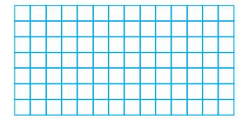
Answer: 36
Explanation: 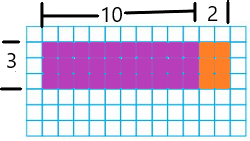
3×12= 3 ×(10+2)
=(3×10)+ (3×2)
=30+6
=36
Question 2.
5 × 16 = _____
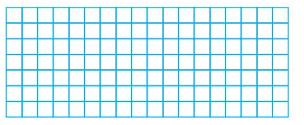
Answer: 80
Explanation: 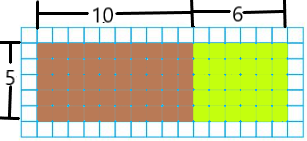
5×16= 5 ×(10+6)
=(5×10)+ (5×6)
=50+30
=80
Question 3.
4 × 34 = _____

Answer: 136
Explanation: 
4 ×34 = 4 ×(30+4)
=(4×30)+ (4×4)
=120+ 16
=136
Find the product.
Question 4.
9 × 56 = ____
Answer: 504
Explanation: 9 × 56= 9 ×(50+6)
=(9×50)+ (9×6)
=450 + 54
=504
Question 5.
71 × 2 = _____
Answer: 142
Explanation: 71 × 2 = 2 × (70+ 1)
=(2×70)+ (2×1)
= 140+2
=142
Question 6.
3 × 77 = ____
Answer: 231
Explanation: 77 × 3 = 3 × (70+ 7)
=(3×70)+ (3×7)
= 210 + 21
=231
Question 7.
Writing
Explain how you can use the Distributive Property to find a product.
Answer:
The Distributive Property states that when you multiply the sum of two or more addends by a factor, the product is the same as if you multiplied each addend by the factor and then added the partial products .
Question 8.
Structure
Use the Distributive Property to find 6 × 18 two different ways.
Answer: 108
Explanation: 6 ×18 = 6 ×(10+8)
=(6×10)+ (6×8)
=60 + 48
= 108
or
Explanation: 6 ×18= 6 ×(9 + 9)
=(6×9)+ (6 ×9)
=54 +54
= 108
Question 9.
Reasoning
To find 4 × 22, would you rather break apart the factor 22 as 20 + 2 or as 11 + 11? Explain.
Answer: 88. I would rather prefer to break apart the factor 22 as 20 + 2 . as it has zero’s in the tens place it would be easier to calculate and both of them are correct and anyone can use it on their
Explanation: 4× 22 = 4 ×(20+2)
= (4×20)+ (4×2)
= 80 + 8
= 88
or
Explanation: 4× 22 = 4 ×(11+11)
= (4×11)+ (4×11)
= 44 + 44
= 88
Question 10.
Modeling Real Life
The diameter of a firework burst, in feet, is 45 times the height of the shell in inches. You have an 8-inch firework shell. Will the shell produce a firework burst that has a diameter greater than 375 feet? Explain.

Answer: NO
Explanation: The diameter of a firework burst, in feet, is 45 times the height of the shell in inches
You have an 8-inch firework shell converting into feet e get 0.66 feet
so diameter = 45 × 0.66
= 29.7 feet
The shell does not produce a firework burst that has a diameter greater than 375 feet
Question 11.
Modeling Real Life
A juvenile bearded dragon should eat 48 crickets each day. You have150 crickets. Do you have enough crickets to feed 3 juvenile bearded dragons? Explain.?
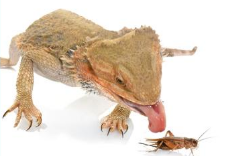
Answer: yes
Explanation: juvenile bearded dragon should eat 48 crickets each day
To feed 3 juvenile bearded dragons , 3 × 48
= 3 × (40 + 8)
= ( 3 × 40) + (3 × 8)
= 120 + 24
= 144.
You have150 crickets , we can feed them by 144 crickets
Review & Refresh
Plot the fraction on a number line.
Question 12.
\(\ frac{7}{4}\)

Answer: 7/4
Explanation: 
To mark 7/4; move seven parts on the right-side of zero.
Question 13.
\(\frac{4}{3}\)

Answer: 4/3
Explanation: 
To mark 4/3 ; move four parts on the right-side of zero
Lesson 3.5 Use Expanded Form to Multiply
Explore and Grow
Write 128 in expanded form.
128 = _____ + _____ + _____
Answer: 100 + 20 + 8
Use expanded form to label the area model for 5 × 128. Find the area of each part.
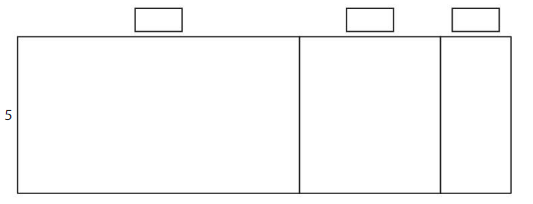
Answer: 640
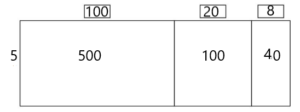
Explanation: 5 × 128, by expanding we get
= 5 × (100 + 20 + 8), by using distributive property, we get
= (5 × 100) + ( 5 × 20) + ( 5 × 8)
Area model = 500 + 100 + 40
so the result of the partial products is 640
What is the sum of all of the parts? How does the sum relate to the product of 5 and 128?
Answer: the sum of all of the parts is 640 the sum relate to the product of 5 and 128 because of their partial products.
Repeated Reasoning
Explain to your partner how you can use expanded form to find 364 × 8.
Answer: 2,912
Explanation: 364 × 8 , by expanding we get
= (300 + 60 + 4) × 8, by using distributive property, we get
= (8 × 300) + ( 8 × 60) + ( 8× 4),
Area model = 2400 + 360 + 32
The sum of the partial products is 2,912.
Think and Grow: Use Expanded Form to Multiply
You can use expanded form and the Distributive Property to multiply.
Example
Find 8 × 74.
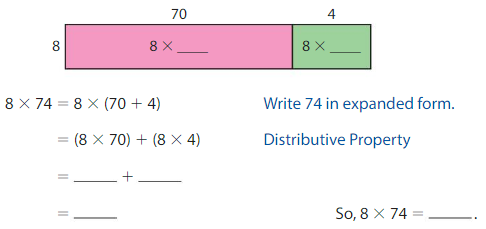
Answer: 592
Explanation: 8 × 74 , by expanding
= 8 × (70 + 4), by using distributive property,
= (8 × 70) + ( 8 × 4)
= 560 + 32
= 592.
Example
Find 2 × 5,607.

Answer: 11,214
Explanation: 2 × 5,607, by expanding
= 2 × (5,000 + 600 + 7) by using distributive property we get,
= (2 × 5,000) + ( 2 × 600) +(2 × 7)
= 10,000 + 1200 + 14
= 11,214
Show and Grow
Find the product.
Question 1.
4 × 306 = 4 × (_____ + _____)
= (4 × _____) + (4 × _____)
= ____ + _____
= ______
Answer: 1,224
Explanation : 4 × 306 = 4 × ( 300 + 6 )
= (4 × 300 ) + (4 × 6 ) by using distributive property we get
= 1200 + 24
= 1,224
Question 2.
7 × 549
Answer: 3,843
Explanation : 7 × 549 = 4 × ( 500 + 40 + 9 )
= (7 × 500 ) + (7 × 40 ) + (7 × 9) by using distributive property we get
= 3,500 + 280 + 63
= 3,843
Apply and Grow: Practice
Find the product.
Question 3.
6 × 85 = _____

Answer: 510
Explanation : 6 × 85 = 6 × ( 80 + 5 )
= (6 × 80 ) + (6 × 5 ) by using distributive property we get
= 480 + 30
= 510
Question 4.
2 × 932 = _____

Answer: 1,864
Explanation : 2 × 932 = 2 × ( 900 + 30 + 2 )
= (2 × 900 ) + (2 × 30 ) + ( 2 ×2) by using distributive property we get
= 1800 + 60 + 4
= 1,864
Question 5.
4 × 690 = 4 × (_____ + ______)
= (4 × _____) + (4 × ____)
= _____ + _____
= _____
Answer: 2,760
Explanation: 4 × 690 = 4 × (600 + 90)
= (4 × 600) + (4 × 90)
= 2,400 + 360
= 2,760
Question 6.
1,027 × 9 = (_____ + _____ + ______) × 9
= (____ × 9) + (_____ × 9) + (_____ × 9)
= _____ + ______ + _____
= _____
Answer: 9,243
Explanation: 1,027 × 9 = (1000+ 20 + 7) × 9
= (1000 × 9) + (20 × 9) + (7 × 9)
= 9000 + 180 + 63
= 9,243
Question 7.
487 × 5 = _____
Answer: 2,435
Explanation : 5 × 487 = 5 × ( 400 + 80 + 7 )
= (5 × 400 ) + (5 × 80 ) + ( 5 ×7 ) by using distributive property we get
= 2000 + 400 + 35
= 2,435
Question 8.
8 × 2,483 = ______
Answer: 19,864
Explanation : 8 × 2,483 = 8 × (2000 + 400 + 80 + 3 )
= (8 × 2000 ) + (8 × 400 ) + ( 8 ×80) + (8 ×3) by using distributive property we get
= 16,000 + 3200 + 640 +24
= 19,864
Question 9.
A basketball player made 269 three-point shots in a season. How many points did he score from three-point shots?
Answer:
Question 10.
Your cousin runs 6 miles each week. There are 5,280 feet in a mile. How many feet does your cousin run each week?
Answer: 6 × 5,280 = 31,680
Explanation : cousin runs 6 miles each week. There are 5,280 feet in a mile.so
we have 6 × 5,280
6 × 5,280 = 6 × (5000 + 200 + 80 )
= (6 × 5000 ) + (6 × 200 ) + ( 6 ×80) by using distributive property we get
= 30,000 + 1200 + 480
= 31,680.
Question 11.
YOU BE THE TEACHER
Your friend finds 744 × 3. Is your friend correct? Explain.
744 × 3 = (700 + 40 + 4) × 3
= (700 × 3) + (40 × 3) + (4 × 3)
= 2,100 + 120 + 12
= 2,232
Answer: Yes
Explanation: By using expanding form and distributive property we get,
744 × 3 = (700 + 40 + 4) × 3
= (700 × 3) + (40 × 3) + (4 × 3)
= 2,100 + 120 + 12
= 2,232
Question 12.
DIG DEEPER!
What is the greatest possible product of a two-digit number and a one-digit number? Explain.
Answer: 891
The greatest two digit number is 99 and the greatest single digit number is 9. The products when the two are multiplied. Multiply 99 by 9 to get 891.
Explanation : 99 × 9 = 891
Think and Grow: Modeling Real Life
Example
A baby hippo is fed 77 fluid ounces of milk 5 times each day. There are 128 fluid ounces in 1 gallon. Are2 gallons of milk enough to feed the baby hippo for 1 day?
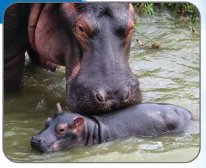
Answer: 2 gallons of milk is not enough for baby hippo to feed
Explanation:
baby hippo is fed 77 fluid ounces of milk 5 times each day that is, 5 × 77
= 5 × (70 + 7 )
= (5 ×70) + (5 ×7)
= 350 + 35
= 385
There are 128 fluid ounces in 1 gallon , then for 2 gallons it will 256 fluid ounces
Find the number of fluid ounces of milk the baby hippo drinks in 1 day.
5 × 77 = 5 × (70 + 7)
= (5 × 70) + (5 × 7)
= _____ +____
= _____
Answer : 385
Explanation:
baby hippo is fed 77 fluid ounces of milk 5 times each day that is, 5 × 77
= 5 × (70 + 7 )
= (5 ×70) + (5 ×7)
= 350 + 35
= 385
Find the number of fluid ounces in 2 gallons
2 × 128 = 2 × (100 + 20 + 8)
= (2 × 100) + (2 × 20) + (2 × 8)
= ___ + _____ + _____
= _____
Answer: 256
Explanation: 2 × 128 = 2 × (100 + 20 + 8)
= (2 × 100) + (2 × 20) + (2 × 8)
= 200 +40 + 16
= 256.
Compare the products.
Answer: Baby hippo is fed 77 fluid ounces of milk 5 times each day that is, 5 × 77 is 385 ounces
There are 128 fluid ounces in 1 gallon , then for 2 gallons it will 256 fluid ounces
So, 385 ounces is greater than 256 ounces.
So, 2 gallons of milk ______ enough to feed the baby hippo for 1 day.
Answer: 2 gallons of milk is not enough to feed the baby hippo for 1 day.s
Show and Grow
Question 13.
A school with 6 grades goes on a field trip. There are 64 students in each grade. One bus holds 48 students. Will 8 buses hold all of the students?
Answer: YES , there are 384 students in total.
Explanation : A school with 6 grades goes on a field trip.
There are 64 students in each grade. so we have 6 × 64
= 6 × ( 60 + 4 )
= (6 × 60) + ( 6 × 4)
= 360 + 24
= 384.
There are 8 buses in total
One bus holds 48 students.so 8 × 48
= 8 × ( 40 + 8 )
= (8 × 40) + ( 8 × 8)
= 320 + 64
= 384.
So, 8 buses are enough to carry the 384 students of all 6 grades.
Question 14.
The average life span of a firefly is 61 days. The average life span of a Monarch butterfly is 4 times as long as that of a firefly. How many days longer is the average lifespan of a Monarch butterfly than a firefly?
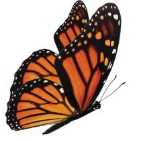
Answer: 183 days longer.
Explanation: The average life span of a firefly is 61 days.
The average life span of a Monarch butterfly is 4 times as long as that of a firefly. so, we have 4 × 61
= 4 × ( 60 + 1 )
= (4 × 60) + ( 4 × 1)
= 240 + 4
= 244.
Then 244 – 61 (The average life span of a firefly) is 183.
So 183 days longer is the average lifespan of a Monarch butterfly than a firefly.
Question 15.
A tourist is in Denver. His car can travel 337 miles using 1 tank of gasoline. He wants to travel to a city using no more than 3 tanks of gasoline. To which cities could the tourist travel?
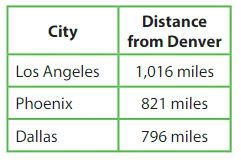
Answer: Los Angeles 1,016 miles
Explanation: His car can travel 337 miles using 1 tank of gasoline.
He wants to travel to a city using no more than 3 tanks of gasoline. we have 3 × 337
= 3 × (300 + 30 + 7)
= (3 × 300) + (3 × 30) + (3 × 7)
= 900 +90 + 21
= 1,011.
From the given details Los Angeles is the nearest one which he can drive with 3 tanks of gasoline that is 1,016 miles.
Use Expanded Form to Multiply Homework & Practice 3.5
Find the product
Question 1.
7 × 803 = _____

Answer: 5,621
Explanation: 7 × 803 = 7 × (800 + 3)
= (7 × 800) + (7 × 3)
= 5600 + 21
= 5,621.
Question 2.
9 × 1,024 = _____

Answer:9,216
Explanation: 9 × 1,024 = 9 × (1000 + 20 + 4)
= (9 × 1000) + (9 × 20) + (9 × 4)
= 9000 +180 + 36
= 9,216.
Question 3.
43 × 8 = (40 + 3) × 8
= (____ × 8) + (____ × 8)
= ____ + ____
= _____
Answer: 344
Explanation: 8 × 43 = (40 + 3) × 8
= (40 × 8) + (3 × 8)
= 320 + 24
= 344.
Question 4.
4 × 742 = 4 × (____ + ____ + _____)
= (4 × ____) + (4 × _____) + (4 × _____)
= ____ + _____ + _____
= _____
Answer: 2,968
Explanation: 4 × 742 = 4 × (700 + 40 + 2)
= (4 × 700) + (4 × 40) + (4 × 2)
= 2800 +160 + 8
= 2,968.
Question 5.
3 × 482 = _____
Answer: 1,446
Explanation: 3 × 482 = 2 × (400 + 80 + 2)
= (3 × 400) + (3 × 80) + (3 × 2)
= 1200 + 240 + 6
= 1,446.
Question 6.
4,591 × 6 = _____
Answer: 27,546
Explanation: 6 × 4,591
= 6 × (4,000 + 500 + 90 + 1)
= (6 × 4,000) + ( 6 × 500) +(6 × 90) + ((6 × 1)
= 24,000 + 3,000 + 540 + 6
= 27,546.
Question 7.
Each lobe on a Venus flytrap has 6 trigger hairs that sense and capture insects. A Venus flytrap has 128 lobes. How many trigger hairs does it have?
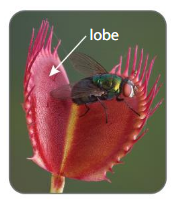
Answer: 768 trigger hairs.
Explanation: A Venus flytrap has 128 lobes
Each lobe on a Venus flytrap has 6 trigger hairs, we have 6 × 128
= 6 × (120 + 8)
= (6 × 120) + (6 × 8)
= 720 + 48
= 768
So, it has 768 trigger hairs.
Question 8.
A human skeleton has 206 bones. How many bones do 4 skeletons have in all?
Answer: 824
Explanation: A human skeleton has 206 bones
so 4 × 206 = 4 × ( 200 + 6)
= (4 × 200) + ( 4 × 6)
= 800 + 24
=824.
So, 4 skeletons have 824 bones.
Question 9.
Writing
Explain how you can find 5 × 7,303 using expanded form.
Answer: 36,515
Explanation: 5 × 7,303
= 5 × (7,000 + 300 + 3)
= (5 × 7,000) + ( 5 × 300) + (5 × 3)
= 35,000 + 15,000 + 15
= 36,515.
Question 10.
Structure
Rewrite the expression as a product of two factors.
(6,000 × 3) + (70 × 3) + (4 × 3)
Answer: 18,222
Explanation:
(6,000 × 3) + (70 × 3) + (4 × 3)
= (6,000 + 70 + 4) × 3
= 3 × 6,074
= 18,222.
Question 11.
Modeling Real Life
A summer camp has 8 different groups of students. There are 35 students in each group. There are 24 shirts in a box. Will 9 boxes be enough for each student to get one shirt?
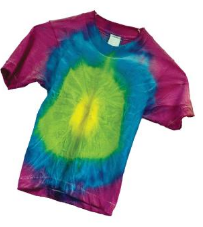
Answer: No, 9 boxes are not enough.
Explanation: A summer camp has 8 different groups of students.
There are 35 students in each group, we have 8 × 35
= 8 × (30 + 5)
= (8 × 30) + ( 8 × 5)
= 240 + 40
=280.
There are 24 shirts in a box
for 9 boxes we have , 9 × 24
= 9 × (20 + 4)
= (9 × 20) + ( 9 × 4)
= 180 + 36
=216.
So, there are not enough shirts for all the students.
Question 12.
Modeling Real Life
Firefighters respond to 65 calls in 1 week. Police officers respond to 8 times as many calls as firefighters in the same week. How many more calls do police officers respond to than firefighters in that week?
Answer: 455 calls.
Explanation: Firefighters respond to 65 calls in 1 week.
Police officers respond to 8 times as many calls as firefighters in the same week.
we have, 8 × 65
= 8 × (60 + 5)
= (8 × 60) + ( 8 × 5)
= 480 + 40
=520.
Then 520 – 65 (Firefighters respond to 65 calls in 1 week.) = 455.
So, 455 calls do police officers respond to than firefighters in that week.
Review & Refresh
Write the total mass shown.
Question 13.

Answer: 913 g
Explanation: Total mass = 500 +100 + 100 + 100 +100 +1 + 1 + 1 +10
=500 + 400 + 3 + 10
=913g
Question 14.
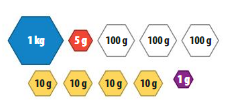
Answer: 1,346
Explanation: 1 kg = 1000g
Total mass = 1000 + 5 + 100 +100 + 100 + 10 + 10 +10 + 1g
=1000 + 300 + 40 + 6
=1,346g
Lesson 3.6 Use Partial Products to Multiply
Explore and Grow
Use the area model to find 263 × 4.

Answer: 1,052
Explanation: 
The sum of the partial products = 800 + 240 +12 = 1,052
Repeated Reasoning
Does the product change if you multiply the ones first, then the tens and hundreds? Explain.

Answer: product does not changes.
Explanation: The product of the two numbers does not change as long as the factor numbers are same in the multiplication products that is (3 × 4 ) + ( 60 × 4) + ( 200 × 4)
= 12 + 240 + 800
= 1,052.
Think and Grow: Practice
Partial products are found by breaking apart a factor into ones, tens, hundreds, and so on, and multiplying each of these by the other factor.
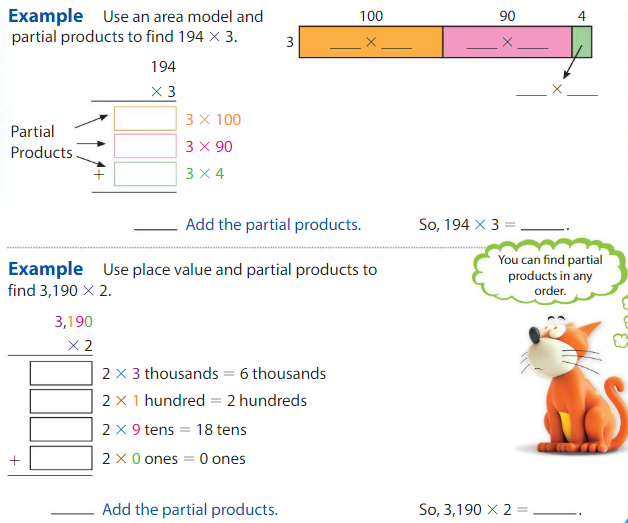
Answer: 194 × 3 = 582.
Explanation: 
partial products = (3 × 100) + ( 3 × 90) + (3 × 4)
the sum of the partial products = 300 + 270 + 12 = 582
so, 194 × 3 = 582
Example 2
Answer: 3,190 × 2 = 6,380
Explanation: 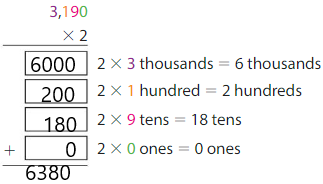
The sum of the partial products = 6000 + 200 + 180 + 0 = 6,380
So, 3,190 × 2 = 6,380
Show and Grow
Find the product.
Question 1.

Answer: 430
Explanation: 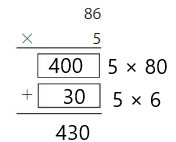
the sum of the partial products = 400 + 30 = 430
So, 86 × 5 = 430
Question 2.

Answer: 3,514
Explanation: 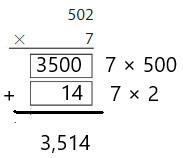
The sum of the partial products = 3500 + 14 = 3,514
So, 502 × 7 = 3,514
Question 3.
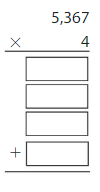
Answer: 21,468
Explanation: 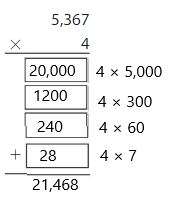
The sum of the partial products is 20,000 + 1200 + 240 + 28 = 21,468
So, 5,367 × 4 = 21,468
Apply and Grow: Practice
Find the product.
Question 4.
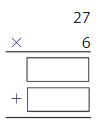
Answer: 162
Explanation: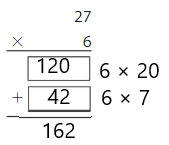
The sum of the partial products are 120 + 42 = 162
So, 27 × 6 = 162
Question 5.
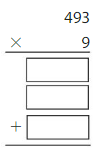
Answer: 4,437
Explanation: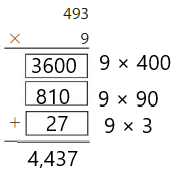
The sum of the partial products are 3600 + 810 + 27 = 4,437
So, 493 × 9 = 4,437
Question 6.
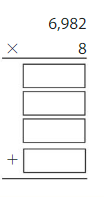
Answer: 55,856
Explanation: 
The sum of the partial products are 48000 + 7200 + 640 + 16 = 55,856
So, 6,982 × 8 = 55,856
Question 7.

Answer: 138
Explanation: 
The sum of the partial products are 120 + 18 = 138
So, 69 × 2 = 138
Question 8.

Answer: 2,451
Explanation: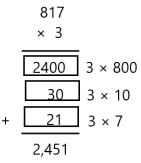
The sum of the partial products are 2400 + 30 + 21 = 2,451
So, 817 × 3 = 2,451
Question 9.

Answer: 19,810
Explanation: 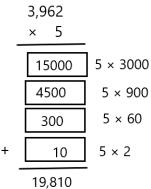
The sum of the partial products are 15000 + 4500 + 300 + 10 = 19,810
So, 3,962 × 5 = 19,810
Question 10.

Answer: 5,096
Explanation: 
The sum of the partial products are 4900 + 140 + 56 = 5,096
So, 728 × 7 = 5,096
Question 11.

Answer: 9,324
Explanation: 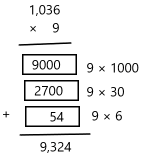
The sum of the partial products are 9000 + 2700 + 54 = 9,324
So, 1,036 × 9 = 9,324
Question 12.

Answer: 39,804
Explanation: 
The sum of the partial products are 36,000 + 3600 + 200 + 4 = 39,804
So, 9,951 × 4 = 39,804
Question 13.
Descartes finds 472 × 3. Is he correct? Explain.

Answer: 472 × 3 = 1,416
Explanation: 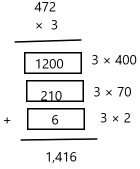
The sum of the partial products are 1200 + 210 + 6 = 1,416
So, 472 × 3 = 1,416
Question 14.
DIG DEEPER!
Write the multiplication equation shown by the model.

Answer: The given model is not according to the distributive property there is no proper place for tens, hundreds in the zeros place . so, it should be modified in order to get the correct answer.
Question 15.
Writing
Write a multiplication word problem using the numbers 506 and 8. Then solve.
Answer: 506 × 8 = 4,048
Explanation: 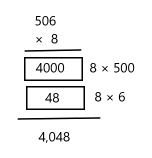
The sum of the partial products are 4000 + 48 = 4,048
So, 506 × 8 = 4,048
Think and Grow: Modeling Real Life
Example
The Grand Prismatic Spring at Yellowstone National Park is 121 feet deep. Its width is 7 feet more than3 times its depth. What is the width of the spring?

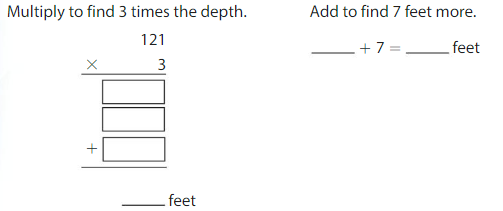
So, the width of the Grand Prismatic Spring is ______ feet.
Answer: The depth of the Grand Prismatic Spring is 363 feet and width of the Grand Prismatic Spring is 370 feet.
Explanation: 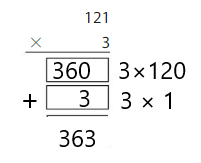
The sum of the partial products are 360 + 3 = 363. The depth of the Grand Prismatic Spring is 363 feet
So, the width of the Grand Prismatic Spring is 363 + 7 = 370 feet.
Show and Grow
Question 16.
The mass of a giant squid is 202 kilograms. The mass of a beluga whale is 78 kilograms less than 6 times the mass of the giant squid. What is the mass of beluga whale?
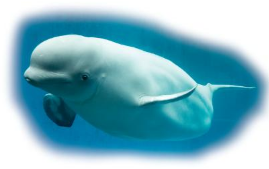
Answer: the mass of beluga whale is 1,134 kilograms.
Explanation : 6 times the mass of the giant squid. is 6 × 202 = 1,212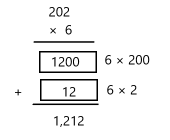
The sum of the partial products are 1200 + 12 = 1,212.
The mass of a beluga whale is 78 kilograms less than 6 times the mass of the giant squid = 1,212 – 78 = 1,134 kg
The mass of beluga whale is 1,134 kilograms
Question 17.
Newton replaces all 4 tires on his car and pays $159 for each tire. Descartes replaces all 4 tires on his truck and pays $227 for each tire. How much more does Descartes pay to replace his tires?
Answer: $272 more has to pay to replace the tires.
Explanation: Newton replaces all 4 tires on his car and pays $159 for each tire
so, $159 × 4 = $636 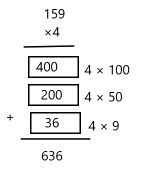
The sum of the partial products are 400 + 200 + 36 = $636.
Descartes replaces all 4 tires on his truck and pays $227 for each tire.
so, $227 × 4 = $908 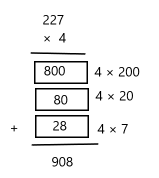
The sum of the partial products are 800 + 80 + 28 = $908.
Then $908 – $636 = $272.
So,$272 more has to pay to replace the tires.
Question 18.
There are 52 weeks and 1 day in a year. There are 52 weeks and 2 days in a leap year. How many weeks are there in 6 years if one of the years is a leap year?
Answer: There are 313 weeks are there for 6 years .
Explanation: Apart from the leap year there are 5 years with 52 weeks and 1 day
then, 52 × 5 = 260 weeks and 5 × 1 = 5 days ( 5 years)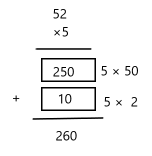
In a leap year we have 52 weeks and 2 days adding this to the total count above we have,
260 weeks + 52 weeks = 312 weeks and by adding days we have 5 + 2 = 7 that is a week
Totally 312 weeks + 1 week = 313 weeks.
There are 313 weeks are there for 6 years .
Use Partial Products to Multiply Homework & Practice 3.6
Find the product
Question 1.
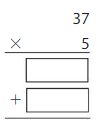
Answer: 185
Explanation: 
The sum of the partial products are 150 + 35 = 185
So, 37 × 5 = 185
Question 2.
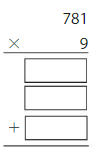
Answer: 7,029
Explanation : 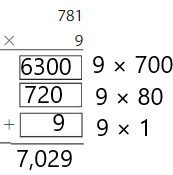
The sum of the partial products are 6300 + 720 + 9 = 7,029
So, 781 × 9 = 7,029
Question 3.

Answer: 8,811
Explanation: 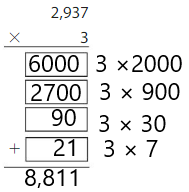
The sum of the partial products are 6000 + 2700 + 90 + 21 = 8,811
S0, 2,937 × 3 = 8,811
Question 4.

Answer: 4,692
Explanation: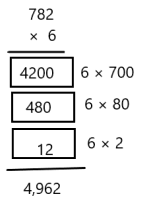
The sum of the partial products are 4200 + 480 12 = 4,962
So, 782 × 6 = 4,962
Question 5.

Answer: 680
Explanation: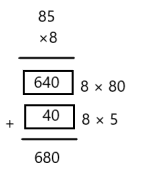
The sum of the partial products are 640 + 40 = 680
So, 85 × 8 = 680
Question 6.

Answer: 16,052
Explanation: 
The sum of the partial products are 16,000 + 40 + 12 = 16,052
So, 8,026 × 2 = 16,052
Find the product
Question 7.

Answer: 2,793
Explanation: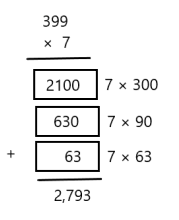
The sum of the partial products are 2100 + 630 + 63 = 2,793
So, 399 × 7 = 2,793
Question 8.

Answer: 29,560
Explanation: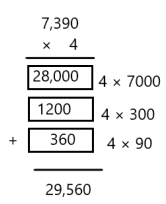
The sum of the partial products are 28,000 + 1200 + 360 = 29,560
So, 7,390 × 4 = 29,560
Question 9.

Answer: 46,430
Explanation: 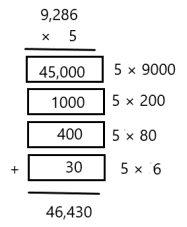
The sum of the partial products are 45,000 + 1000 + 400 + 30 = 46,430
So, 9,286 × 5 = 46,430
Question 10.
Number Sense
Which four numbers are the partial products that you add to find the product of 3,472 and 6?

Answer: 18,000 ; 24,00 ; 420 ; 12.
Explanation: 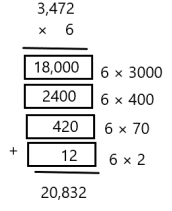
The sum of the partial products are 18,000 + 2400 + 420 + 12 = 20,832.
So, The partial products are 18,000 ; 24,00 ; 420 ; 12.
Question 11.
DIG DEEPER!
The sum of a four-digit number and a one-digit number is 7,231. The product of the numbers is 28,908. What are the numbers?
Answer: 7227 and 4
Explanation: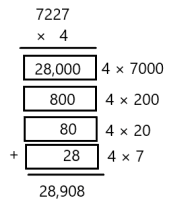
The sum of a four-digit number and a one-digit number is 7,231. The product of the numbers is 28,908. so we have 7,227 + 4 = 7,231 and product is 7,227 × 4 = 28,908.
So, The numbers are 7,227 and 4
Question 12.
Modeling Real Life
The height of the Eiffel Tower is 38 feet more than 3 times the height of Big Ben. What is the height of the Eiffel Tower?
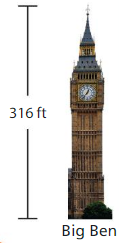
Answer: The height of the Eiffel Tower is 986 feet.
Explanation: 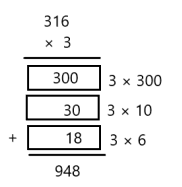
The height of the Eiffel Tower is 38 feet more than 3 times the height of Big Ben.
so, 316 × 3 = 948 feet,
The height of the Eiffel Tower is 38 feet more we get 948 + 38 = 986 feet.
So, The height of the Eiffel Tower is 986 feet.
Question 13.
Modeling Real Life
An animal shelter owner has 9 dogs and 4 cats ready for adoption. How much money will the owner collect when all of the animals are adopted?

Answer: $12,150 money is collect from the adoption.
Explanation: 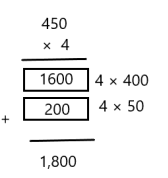
Each cat is $450 , Then for 4 cats we get 4 × 450 = 1,800
Each dog is $1,150 ,Then for 9 dogs we get 9 × 1,150 = 10,350.
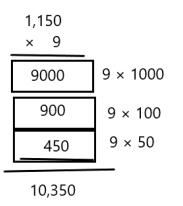
Total amount is $1800 + $10,350 = $ 12,150.
So, $12,150 money is collect from the adoption.
Review & Refresh
Write all of the names for the quadrilateral.
Question 14.

Answer: Parallelogram, Square, Rectangle, Rhombus, Trapezoid.
Explanation: In geometry, a quadrilateral can be defined as a closed, two dimensional shape which has four straight sides.
We can find the shape of quadrilaterals in various things around us, like in a chess board, a deck of cards, a kite, a tub of popcorn, a sign board and in an arrow.
Question 15.

Answer: square.
Explanation:
All sides are equal.
All angles are equal and measure 90°.
Lesson 3.7 Multiply Two-Digit Numbers by One-Digit Numbers
Explore and Grow
Model 24 × 3. Draw to show your model.
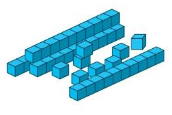
24 × 3 = _____
How did you use regrouping to find the product?
Answer: 72
Precision
Use a model to find 15 × 8.
Answer: 120
Think and Grow: Use Regrouping to Multiply
Example
Find 32 × 6.
Estimate: 30 × 6 = _____
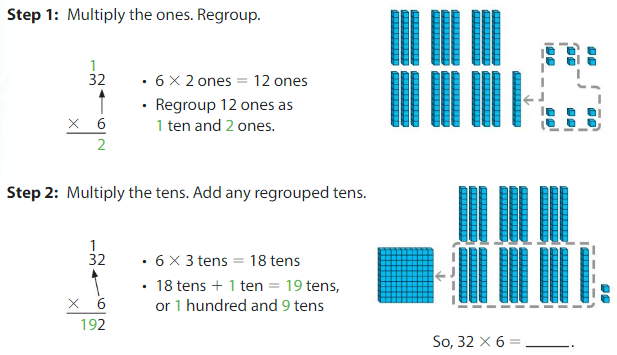
Check: Because ____ is close to the estimate, _____, the answer is reasonable.
Answer: 32 × 6 = 192 , Then 30 × 6 = 180.
Explanation: Because 192 is close to the estimate, 180 , the answer is reasonable.
Show and Grow
Question 1.
Use the model to find the product.

Answer: 132.
Explanation:
Find the product. Check whether your answer is reasonable.
Question 2.
Estimate: ______

Answer: 96, the Estimate product is 80
Explanation: 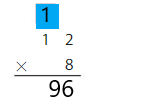
8 × 2 ones = 16 ones
regroup 16 ones as
1 ten and 6 ones
Then 8 × 1 ten = 8 tens
8 tens + 1 ten = 9 tens , then we have 96
And the Estimate product is 80,
because 12 is close to 10 , we have 10 × 8 = 80
So, 12 × 8 = 96
Question 3.
Estimate: _____

Answer: 235, the estimated product is 250
Explanation: 
5 × 7 ones = 35 ones
regrouping 35 ones as 3 tens and 5 ones
5 × 4 tens = 20 tens
20 tens + 3 tens = 23 tens or 2 hundreds and 3 tens ,Then we get 235
And the estimated product is 250
because 47 is close to 50,then 50 × 5 = 250
So, 47 × 5 = 235
Question 4.
Estimate: _____

Answer: 138, he estimated product is 120
Explanation: 
6 × 3 ones = 18 ones
regrouping 18 ones as 1 ten and 8 ones
6 × 2tens = 12 tens
12 tens + 1 ten = 13 tens or 1 hundred and 3 tens ,Then we have 138
And the estimated product is 120
because 23 is close to 20 , so 20 × 6 = 120
So, 23 × 6 = 138
Apply and Grow: Practice
Find the product. Check whether your answer is reasonable.
Question 5.
Estimate: ______

Answer: 175 , the Estimate product is 140
Explanation: ![]()
7 × 5 ones = 35 ones
regrouping 35 ones as 3 tens and 5 ones
7 × 2tens = 14 tens
14 tens + 3 tens = 17 tens or 1 hundred and 7 tens ,Then we have 175
And the estimated product is 140
because 25 is close to 20 , so 20 × 7 = 120
So, 25 × 7 = 175
Question 6.
Estimate: ______

Answer: 68 , the Estimate product is 60
Explanation: 
2 × 4 ones = 8 ones
2 × 3tens = 6 tens
Then we have 68
And the estimated product is 60
because 34 is close to 30 , so 30 × 2 = 60
So, 34 × 2 = 68
Question 7.
Estimate: ______

Answer: 504, the Estimate product is 540
Explanation: 
9 × 6 = 54 ones
regrouping 54 ones as 5 tens and 4 ones
9 × 5 tens = 45 tens
45 tens + 5 tens = 50 tens or 5 hundreds ,Then we have 504
And the estimated product is 540
because 56 is close to 60 , so 60 × 9 = 540
So, 56 × 9 = 504
Question 8.
Estimate: ______

Answer: 328, the Estimate product is 320
Explanation: ![]()
8 × 1 ones = 8 ones
8 × 4 tens = 32 tens
Then we have 328
And the estimated product is 320
because 41 is close to 40 , so 40 × 8 = 320
So, 41 × 8 = 328
Question 9.
Estimate: ______

Answer: 292, the Estimate product is 280
Explanation: 
4 × 3 ones = 12 ones
regrouping 12 ones as 1 ten and 2 ones
4 × 7 tens = 28 tens
28 tens + 1 ten = 29 tens or 2 hundred and 9 tens ,Then we have 292
And the estimated product is 280
because 73 is close to 70 , so 70 × 4 = 280
So, 73 × 4 = 292
Question 10.
Estimate: ______

Answer: 534, the Estimate product is 540
Explanation: 
6 × 9 ones = 54 ones
regrouping 54 ones as 5 tens and 4 ones
6 × 8 tens = 48 tens
48 tens + 5 tens = 53 tens or 5 hundred and 3 tens ,Then we have 534
And the estimated product is 540
because 89 is close to 90 , so 90 × 6 = 540
So, 89 × 6 = 534
Question 11.
Estimate: ______
65 × 7 = ______
Answer: 455, the Estimate product is 490
Explanation: ![]()
7 × 5 ones = 35 ones
regrouping 35 ones as 3 tens and 5 ones
7 × 2tens = 14 tens
14 tens + 3 tens = 17 tens or 1 hundred and 7 tens ,Then we have 175
And the estimated product is 140
because 25 is close to 20 , so 20 × 7 = 120
So, 25 × 7 = 175
Question 12.
Estimate: ____
3 × 92 = _____
Answer: 276, the Estimate product is 270
Explanation: 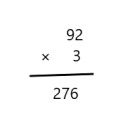
3 × 2 ones = 6 ones
3 × 9 tens = 27 tens
Then we get 235
And the estimated product is 270
because 92 is close to 90, then 90 × 3 = 270
So, 92 × 3 = 276
Question 4.
Question 13.
Estimate: _____
47 × 5 = ______
Answer: 235, the Estimate product is 250
Explanation: 
5 × 7 ones = 35 ones
regrouping 35 ones as 3 tens and 5 ones
5 × 4 tens = 20 tens
20 tens + 3 tens = 23 tens or 2 hundreds and 3 tens ,Then we get 235
And the estimated product is 250
because 47 is close to 50,then 50 × 5 = 250
So, 47 × 5 = 235
Question 14.
There are 8 questions during the first round of a game show. Each question is worth 15 points. What is the greatest number of points that a contestant can earn during the first round?
Answer: 120 is the greatest number of points that a contestant can earn during the first round
Explanation: 
8 × 5 ones = 40 ones
regrouping 40 ones as 4 tens and 0 ones
1 × 8 tens = 8 tens
8 tens + 4 tens = 12 tens or 1 hundred and 2 tens ,Then we get 120
So, 120 is the greatest number of points that a contestant can earn during the first round.
Question 15.
DIG DEEPER!
Find the missing digits.

Answer: 1 , 7 and 1 , 9 and 7.
Explanation: 
5 × 3 ones = 15 ones
regrouping 15 ones as 1 ten and 5 ones
5 × 1 ten = 5 tens
5 tens + 1 ten = 6 tens ,Then we get 65
Explanation: 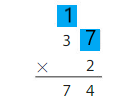
2 × 7 ones = 14 ones
regrouping 14 ones as 1 ten and 4 ones
2 × 3 tens = 6 tens
6 tens + 1 ten = 7 tens Then we get 74
Explanation: 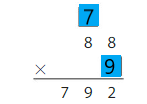
9 × 8 ones = 72 ones
regrouping 72 ones as 7 tens and 2 ones
9 × 8 tens = 72 tens
72 tens + 7 tens = 79 tens or 7 hundreds and 9 tens ,Then we get 792
Think and Grow: Modeling Real Life
Example
The fastest human on Earth can run up to 27 miles per hour. A pronghorn antelope can run up to 2 times as fast as the fastest human. A cheetah can run up to 61 miles per hour. Which animal can run faster?
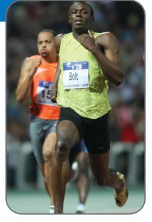
Find how fast a pronghorn antelope can run.

Answer: 54 miles per hour
Explanation:
2 × 7 ones = 14 ones
regrouping 14 ones as 1 ten and 4 ones
2 × 2 tens = 4 tens
4 tens + 1 ten = 5 tens Then we get 54.
A pronghorn antelope can run up to _____ miles per hour.
Answer: A pronghorn antelope can run up to 54 miles per hour.
Compare the fastest speeds of a pronghorn antelope and a cheetah.
So, a _______ can run faster.
Answer: A cheetah can run faster.
Show and Grow
Question 16.
A band’s goal is to produce 100 songs. The band has produced 6 albums with 13 songs on each album. Has the band reached its goal?
Answer: NO , 78 songs
Explanation: 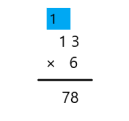
6 × 3 ones = 18 ones
regrouping 18 ones as 1 ten and 8 ones
6 × 1 ten = 6 tens
6 tens + 1 ten = 7 ten Then we get 78
A band’s goal is to produce 100 songs but they had only 78 songs so they did not get to their goal.
Question 17.
A teenager must practice driving with an adult for 50 hours before taking a driver’s license test. A teenager practices driving with an adult 4 hours each week for14 weeks. Has the teenager practiced long enough to take the test?
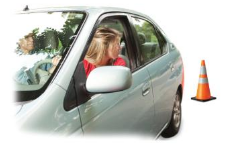
Answer: YES , 56 hours
Explanation: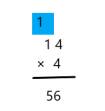
4 × 4 ones = 16 ones
regrouping 16 ones as 1 ten and 6 ones
4 × 1 ten = 4 tens
4 tens + 1 ten = 5 tens Then we get 56
A teenager must practice driving with an adult for 50 hours So she has practiced enough to get a license.
Question 18.
How much more does it cost to rent a personal water craft for 3 hours than a motor boat for 3 hours?

Answer: It cost $60 more to rent a personal water craft for 3 hours than a motor boat for 3 hours.
Explanation: 
A Personal water craft cost $89 per hour then per 3 hours, $89 × 3 ,so
3 × 9 ones = 27 ones
regrouping 27 ones as 2 tens and 7 ones
3 × 8 tens = 24 tens
24 tens + 2 tens = 26 tens or 2 hundreds and 6 tens ,Then we get $267.
Explanation: 
A Motor boat costs $69 per hour then for 3 hours,$69 × 3 ,so
3 × 9 ones = 27 ones
regrouping 27 ones as 2 tens and 7 ones
3 × 6 tens = 18 tens
18 tens + 2 tens = 20 tens or 2 hundreds ,Then we get $207
Finally $267 – $ 207 = $60
It cost $60 more to rent a personal water craft for 3 hours than a motor boat for 3 hours.
Multiply Two-Digit Numbers by One-Digit Numbers Homework & Practice 3.7
Question 1.
Use the model to find the product.

Answer: 106
Find the product. Check whether your answer is reasonable.
Question 2.
Estimate: _____

Answer: 72 , the Estimate product is 60,
Explanation: 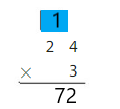
3 × 4 ones = 12 ones
regroup 12 ones as 1 ten and 2 ones
Then 3 × 2 tens = 6 tens
6 tens + 1 ten = 7 tens , then we have 72
And the Estimate product is 60,
because 24 is close to 20 , we have 20 × 3 = 60
So, 24 × 3 = 72.
Question 3.
Estimate: _____

Answer: 126 ,the Estimate product is 140,
Explanation: 
7 × 8 ones = 56 ones
regroup 56 ones as
5 tens and 6 ones
Then 7 × 1 ten = 7 tens
7 tens + 5 tens = 12 tens , then we have 126
And the Estimate product is 140,
because 18 is close to 20 , we have 20 × 7 = 140
So, 18 × 7 = 126
Question 4.
Estimate: ______

Answer: 198, the Estimate product is 180.
Explanation: 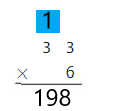
6 × 3 ones = 18 ones
regroup 18 ones as 1 ten and 8 ones
Then 6 × 3 tens = 18 tens
18 tens + 1 ten = 19 tens , then we have 198
And the Estimate product is 180,
because 33 is close to 30 , we have 30 × 6 = 180
So, 33 × 6 = 198
Question 5.
Estimate: ______

Answer: 423, the Estimate product is 450.
Explanation: 
9 × 7 ones = 63 ones
regroup 63 ones as 6 tens and 3 ones
Then 9 × 4 tens = 36 tens
36 tens + 6 ten = 42 tens , then we have 423
And the Estimate product is 450,
because 47 is close to 50 , we have 50 × 9 = 450
So, 47 × 9 = 423
Question 6.
Estimate: ______

Answer: 260,the Estimate product is 240.
Explanation: 
4 × 5 ones = 20 ones
regroup 20 ones as 2 tens and 0 ones
Then 4 × 6 tens = 24 tens
24 tens + 2 tens = 26 tens , then we have 260
And the Estimate product is 240,
because 65 is close to 60 , we have 60 × 4 = 240
So, 65 × 4 = 260
Question 7.
Estimate: ______

Answer: 576 ,the Estimate product is 560.
Explanation: ![]()
8 × 2 ones = 16 ones
regroup 16 ones as
1 ten and 6 ones
Then 8 × 7 tens = 56 tens
56 tens + 1 ten = 57 tens , then we have 576
And the Estimate product is 560,
because 72 is close to 70 , we have 70 × 8 = 560
So, 72 × 8 = 576.
Find the product. Check whether your answer is reasonable.
Question 8.
Estimate: ______
49 × 5 = _____
Answer: 245 , the Estimate product is 250,
Explanation: 
5 × 9 ones = 45 ones
regroup 45 ones as 4 tens and 5 ones
Then 5 × 4 tens = 20 tens
20 tens + 4 tens = 24 tens , then we have 245
And the Estimate product is 250,
because 49 is close to 50 , we have 50 × 5 = 250
So, 49 × 5 = 250.
Question 9.
Estimate: _______
7 × 86 = _______
Answer: 602, the Estimate product is 630,
Explanation: 
7 × 6 ones = 42 ones
regroup 42 ones as 4 tens and 2 ones
Then 7 × 8 tens = 56 tens
56 tens + 4 tens = 60 tens , then we have 602
And the Estimate product is 630,
because 86 is close to 90 , we have 90 × 7 = 630
So, 86 × 7 = 602.
Question 10.
Estimate: ______
93 × 3 = ______
Answer: 279 , the Estimate product is 270
Explanation: 
3 × 3 ones = 9 ones
Then 3 × 9 tens = 27 tens
then we have 279
And the Estimate product is 270,
because 93 is close to 90 , we have 90 × 3 = 270
So, 93 × 3 = 270.
Question 11.
You read 56 pages each week. How many pages do you read in 8 weeks?
Answer: 448 pages.
Explanation: 
8 × 6 ones = 48 ones
regroup 48 ones as 4 tens and 8 ones
Then 8 × 5 tens = 40 tens
40 tens + 4 tens = 44 tens , then we have 448.
So, 448 pages for 8 weeks.
Question 12.
Number Sense
The sum of two numbers is 20. The product of the two numbers is 51. What are the two numbers?
Answer: 17 and 3 are the two numbers.
Explanation: 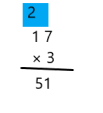
3 × 7 ones = 21 ones
regroup 21 ones as 2 tens and 1 ones
Then 3 × 1 ten = 3 tens
3 tens + 2 tens = 5 tens , then we have 51
Question 13.
Reasoning
Your friend multiplies 58 by6 and says that the product is 3,048. Is your friend’s answer reasonable? Explain.
Answer: Correct answer is 348
Explanation: 
6 × 8 ones = 48 ones
regroup 48 ones as 4 tens and 2 ones
Then 6 × 5 tens = 30 tens
30 tens + 4 tens = 34 tens , then we have 348
So, Correct answer is 348 .
Question 14.
DIG DEEPER!
How much greater is 4 × 26 than 3 × 26? Explain how you know without multiplying.
Answer: 4 × 26 is greater than 3 × 26 .
Explanation: The two factors of the given multiplication are 4 and 3 as 4 is greater than 3 , So , any same number multiplied by these two numbers individually will give the greatest number as a result for the number 4 .
So, 4 × 26 is greater than 3 × 26.
Question 15.
Modeling Real Life
A self-balancing scooter travels 12 miles per hour. An all-terrain vehicle can travel 6 times as fast as the scooter. A go-kart can travel 67 miles per hour. Which vehicle can travel the fastest?
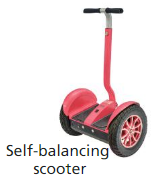
Answer: An all-terrain vehicle can travel faster that is 72 miles per hour
Explanation: 
6 × 2 ones = 12 ones
regroup 12 ones as 1 ten and 2 ones
Then 6 × 1 tens = 6 tens
6 tens + 1 tens = 7 tens , then we have 72.
Given , A go-kart can travel 67 miles per hour.
An all-terrain vehicle can travel faster that is 72 miles per hour
Question 16.
Modeling Real Life
It takes a spaceship 3 days to reach the moon from Earth. It takes a spaceship 14 times as many days to reach Mars from Earth. How long would it take the spaceship to travel from Earth to Mars and back?
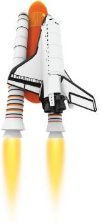
Answer: It takes 84 days for the spaceship to travel from Earth to Mars and back.
Explanation: 
3 × 4 ones = 12 ones
regroup 12 ones as 1 ten and 2 ones
Then 3 × 1 ten = 3 tens
3 tens + 1 ten = 4 tens , then we have 42.
It takes 42 days to reach Mars from Earth.
And IT take 42 + 42 = 84 days
It takes 84 days to travel from Earth to Mars and back.
Review & Refresh
Question 17.
You spend 21 fewer minutes riding the bus to school than getting ready in the morning. You take 36 minutes to get ready. How long is the bus ride?
Answer: 15 minutes to ride the bus
Explanation: You take 36 minutes to get ready.
You spend 21 fewer minutes riding the bus to school than getting ready in the morning
So, 36 – 21 = 15
It takes 15 minutes to ride the bus.
Lesson 3.8 Multiply Three-and Four-Digit Numbers by One-Digit Numbers
Explore and Grow
Use any strategy to find each product.
7 × 39 = _____
7 × 439 = ______
Answer: 273 and 3,073
Explanation: by using distributive property
7 × 39 = 7 × ( 30 + 9)
= (7 × 30)+ (7 ×9)
=210 + 63
= 273.
Explanation:
7 × 439 = 7 × ( 400 + 30 + 9)
= ( 7 × 400) +(7 × 30)+ (7 ×9)
= 2800 + 210 + 63
= 3,073.
Structure
How are the equations the same? How are they different?
Answer: The equations are same when the numbers in the equation are in their standard position as ones, tens, hundreds etc. And at the same time the factors of the products must not change .
The equation is different when the two factor numbers are changing their position irrespective of their places.
Think and Grow: Use Regrouping to Multiply
Example
Find 795 × 4.
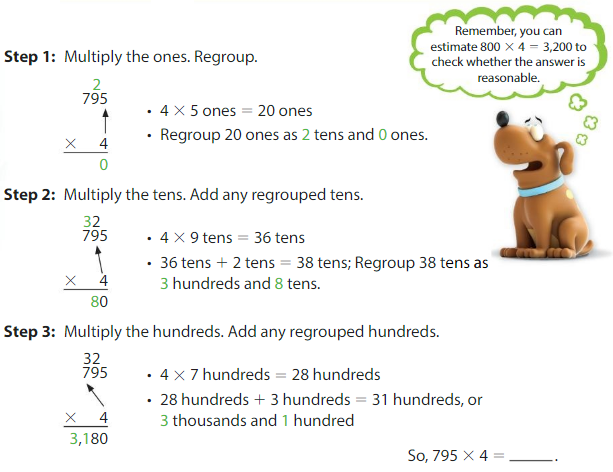
Example
Find 6,084 × 2.

Check: Because ____ is close to the estimate, _____, the answer is reasonable.
Answer: 6,000 × 2 = 12,000 and 6,084 × 2 = 12,168.
Explanation: 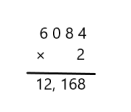
Step 1: Multiply ones and regroup
2 × 4 ones = 8 ones
Step 2: Multiply tens and regroup tens
2 × 8 tens = 16 tens
regroup as 1 ten and 6 ones
Step 3: Multiply hundreds and regroup hundreds
2 × 0 = 0
Step 4: Multiply thousands and regroup thousands
2 × 6 thousands = 12 thousands
Finally we have , 12,168.
So, 6,000 × 2 = 12,000 and 6,084 × 2 = 12,168.
Because 6,000 is close to the estimate, 12,000, the answer is reasonable.
Show and Grow
Find the product. Check whether your answer is reasonable.
Question 1.
Estimate: _____

Answer: 615, the estimated product is 600
Explanation: 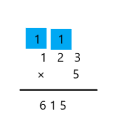
Step 1: Multiply ones and regroup
5 × 3 ones = 15 ones
Regroup as 1 ten and 5 ones
Step 2: Multiply tens and regroup tens
5 × 2 tens = 10 tens
10 tens + 1 ten = 11 tens
regroup 11 tens as 1 hundreds and 1 ten
Step 3: Multiply hundreds and regroup hundreds
5 × 1 hundreds = 5 hundreds
5 hundreds + 1 hundred = 6 hundreds
By holding all places together we get 615 .
And the estimated product is 600
because 123 is close to 120, 120 × 5 = 600
So, 123 × 5 = 615 .
Question 2.
Estimate: _____

Answer: 2,721 , the estimated product is 2,700
Explanation: 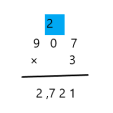
Step 1: Multiply ones and regroup
3 × 7 ones = 21 ones
Regroup 21 ones as 2 tens and 1 ones
Step 2: Multiply tens and regroup tens
3 × 0 tens = 0 tens
0 tens + 2 tens = 2 tens
Step 3: Multiply hundreds and regroup hundreds
3 × 9 hundreds = 27 hundreds
Regroup 27 hundreds as 2 thousands and 7 hundreds
By holding all places together we get 2,721 .
And the estimated product is 2,700
because 907 is close to 900, 900 × 3 = 2,700
So, 907 × 3 = 2,721 .
Question 3.
Estimate: ______

Answer: 43,890, the estimated product is 43,800
Explanation: 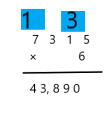
Step 1: Multiply ones and regroup
6 × 5 ones = 30 ones
regroup 30 ones as 3 tens and 0 ones
Step 2: Multiply tens and regroup tens
6 × 1 tens = 6 tens
6 tens + 3 tens = 9 tens
Step 3: Multiply hundreds and regroup hundreds
6 × 3 hundreds = 18 hundreds
regroup as 1 thousand and 8 hundreds
Step 4: Multiply thousands and regroup thousands
6 × 7 thousands = 42 thousands
42 thousands + 1 thousand = 43 thousands
By holding all the places together we get 43,890
And the estimated product is 43,800
because 7,315 is close to 7300, 7300 × 6 = 43,800
So, 7,315 × 6 = 43,890 .
Apply and Grow: Practice
Find the product. Check whether your answer is reasonable.
Question 4.
Estimate: ______

Answer: 840, the estimated product is also 840
Explanation:
Step 1: Multiply ones and regroup
7 × 0 ones = 0 ones
Step 2: Multiply tens and regroup tens
7 × 2 tens = 14 tens
regroup 14 tens as 1 hundred and 4 tens
Step 3: Multiply hundreds and regroup hundreds
7 × 1 hundreds = 7 hundreds
7 hundreds + 1 hundred = 8 hundreds
By holding all places together we get 840.
And the estimated product is 840
because 120 has a zero’s in ones place ,
so it is already close to the nearest 0’s so we don’t have to estimate separately.
Question 5.
Estimate: ______

Answer: 10,136, the estimated product is 10,000
Explanation: 
Step 1: Multiply ones and regroup
4 × 4 ones = 16 ones
regroup as 1 ten and 6 ones
Step 2: Multiply tens and regroup tens
4 × 3 tens = 12 tens
12 tens + 1 ten = 13 tens
regroup as 1 hundred and 3 tens
Step 3: Multiply hundreds and regroup hundreds
4 × 5 hundreds = 20 hundreds
20 hundreds + 1 hundred = 21 hundreds
regroup as 2 thousands and 1 hundred
Step 4: Multiply thousands and regroup thousands
4 × 2 thousands = 8 thousands
8 thousands + 2 thousands = 10 thousands
By holding all the places together we get 10,136
And the estimated product is 10,000
because 2,534 is close to 2500, 2500 × 4 = 10,000
So, 2,534 × 4 = 10,136 .
Question 6.
Estimate: ______

Answer: 15,234, the estimated product is 15,200
Explanation:
Step 1: Multiply ones and regroup
2 × 7 ones = 14 ones
regroup as 1 ten and 4 ones
Step 2: Multiply tens and regroup tens
2 × 1 ten = 2 tens
2 tens + 1 ten = 3 tens
Step 3: Multiply hundreds and regroup hundreds
2 × 6 hundreds = 12 hundreds
regroup as 1 thousand and 2 hundreds
Step 4: Multiply thousands and regroup thousands
2 × 7 thousands = 14 thousands
14 thousands + 1 thousand = 15 thousands
By holding all the places together we get 15,234
And the estimated product is 15,200
because 7,617 is close to 7600, 7,600 × 2 = 15,200
So, 7,617 × 2 = 15,234 .
Question 7.
Estimate: _____

Answer: 3,664, the estimated product is 3,680
Explanation:
Step 1: Multiply ones and regroup
8 × 8 ones = 64 ones
regroup as 6 tens and 4 ones
Step 2: Multiply tens and regroup tens
8 × 5 tens = 40 tens
40 tens + 6 tens = 46 tens
regroup 46 tens as 4 hundreds and 6 tens
Step 3: Multiply hundreds and regroup hundreds
8 × 4 hundreds = 32 hundreds
32 hundreds + 4 hundreds = 36 hundreds
By holding all places together we get 3,664.
And the estimated product is 3,680
because 458 is close to 460, 460 × 8 = 36,80
So, 458 × 8 = 3,664 .
Question 8.
Estimate: _____

Answer: 79,407, the estimated product is 79,200
Explanation:
Step 1: Multiply ones and regroup
9 × 3 ones = 27 ones
regroup 27 ones as 2 tens and 7 ones
Step 2: Multiply tens and regroup tens
9 × 2 tens = 18 tens
18 tens + 2 tens = 20 tens
regroup as 2 hundreds and 0 tens
Step 3: Multiply hundreds and regroup hundreds
9 × 8 hundreds = 72 hundreds
72 hundreds + 2 hundreds = 74 hundreds
regroup as 7 thousands and 4 hundreds
Step 4: Multiply thousands and regroup thousands
9 × 8 thousands = 72 thousands
72 thousands + 7 thousand = 79 thousands
By holding all the places together we get 79,407.
And the estimated product is 79,200
because 8,823 is close to 8,800, 8,800 × 9 = 79,200
So, 8,823 × 9 = 79,407 .
Question 9.
Estimate: _____

Answer: 5,850, the estimated product is 5,820
Explanation: 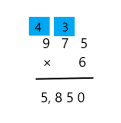
Step 1: Multiply ones and regroup
6 × 5 ones = 30 ones
regroup as 3 tens and 0 ones
Step 2: Multiply tens and regroup tens
6 × 7 tens = 42 tens
42 tens + 3 tens = 45 tens
regroup 45 tens as 4 hundreds and 5 tens
Step 3: Multiply hundreds and regroup hundreds
6 × 9 hundreds = 54 hundreds
54 hundreds + 4 hundreds = 58 hundreds
By holding all places together we get 5,850.
And the estimated product is 5,820
because 975 is close to 970, 970 × 6 = 5,820
So, 975 × 6 = 5,850 .
Question 10.
Estimate: _____
1,762 × 3 = ______
Answer: 5,286, the estimated product is 5,100
Explanation: 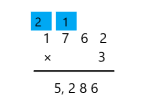
Step 1: Multiply ones and regroup
3 × 2 ones = 6 ones
Step 2: Multiply tens and regroup tens
3 × 6 tens = 18 tens
regroup as 1 hundred and 8 tens
Step 3: Multiply hundreds and regroup hundreds
3 × 7 hundreds = 21 hundreds
21 hundreds + 1 hundred = 22 hundreds
regroup as 2 thousands and 2 hundreds
Step 4: Multiply thousands and regroup thousands
3 × 1 thousands = 3 thousands
3 thousands + 2 thousands = 5 thousands
By holding all the places together we get 5,286.
And the estimated product is 5,100
because 1,762 is close to 1,700, 1,700 × 3 = 5,100
So, 1,762 × 3 = 5,286 .
Question 11.
Estimate: ______
5 × 5,492 = ______
Answer: 27,460, the estimated product is 27,000
Explanation: 
Step 1: Multiply ones and regroup
5 × 2 ones = 10 ones
regroup 10 ones as 1 ten and 0 ones
Step 2: Multiply tens and regroup tens
5 × 9 tens = 45 tens
45 tens + 1 ten = 46 tens
regroup as 4 hundreds and 6 tens
Step 3: Multiply hundreds and regroup hundreds
5 × 4 hundreds = 20 hundreds
20 hundreds + 4 hundreds = 24 hundreds
regroup as 2 thousands and 4 hundreds
Step 4: Multiply thousands and regroup thousands
5 × 5 thousands = 25 thousands
25 thousands + 2 thousand = 27 thousands
By holding all the places together we get 27,460.
And the estimated product is 27,000
because 5,492 is close to 5,400, 5,400 × 5 = 27,000
So, 5,492 × 5 = 27,460.
Question 12.
Estimate: ______
347 × 7 = _____
Answer: 2,429, the estimated product is 2,380
Explanation: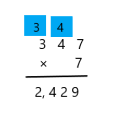
Step 1: Multiply ones and regroup
7 × 7 ones = 49 ones
regroup as 4 tens and 9 ones
Step 2: Multiply tens and regroup tens
7 × 4 tens = 28 tens
28 tens + 4 tens = 32 tens
regroup 32 tens as 3 hundreds and 2 tens
Step 3: Multiply hundreds and regroup hundreds
7 × 3 hundreds = 21 hundreds
21 hundreds + 3 hundreds = 24 hundreds
By holding all places together we get 2,429.
And the estimated product is 2,380
because 347 is close to 340, 340 × 7 = 2,380
So, 347 × 7 = 2,429 .
Compare
Question 13.
![]()
Answer: 6 × 2,843 is greater than 8 × 1,645
17,058 is greater than 13,160
Explanation: 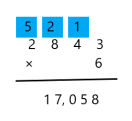
Step 1: Multiply ones and regroup
6 × 3 ones = 18 ones
regroup 18 ones as 1 ten and 8 ones
Step 2: Multiply tens and regroup tens
6 × 4 tens = 24 tens
24 tens + 1 ten = 25 tens
regroup as 2 hundreds and 5 tens
Step 3: Multiply hundreds and regroup hundreds
6 × 8 hundreds = 48 hundreds
48 hundreds + 2 hundreds = 50 hundreds
regroup as 5 thousands and 0 hundreds
Step 4: Multiply thousands and regroup thousands
6 × 2 thousands = 12 thousands
12 thousands + 5 thousands = 17 thousands
By holding all the places together we get 17,058
So, 2,843 × 6 = 17,058
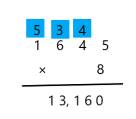
Step 1: Multiply ones and regroup
8 × 5 ones = 40 ones
regroup 40 ones as 4 tens and 0 ones
Step 2: Multiply tens and regroup tens
8 × 4 tens = 32 tens
32 tens + 4 tens = 36 tens
regroup as 3 hundreds and 6 tens
Step 3: Multiply hundreds and regroup hundreds
8 × 6 hundreds = 48 hundreds
48 hundreds + 3 hundreds = 51 hundreds
regroup as 5 thousands and 1 hundred
Step 4: Multiply thousands and regroup thousands
8 × 1 thousand = 8 thousands
8 thousands + 5 thousands = 13 thousands
By holding all the places together we get 13,160
So, 1,645 × 8 = 13,160
Finally , 17,058 is greater than 13,160.
Question 14.
![]()
Answer: 6,582 × 3 is greater than 2,394 × 8
19,746 is greater than 19,152
Explanation: 
Step 1: Multiply ones and regroup
3 × 2 ones = 6 ones
Step 2: Multiply tens and regroup tens
3 × 8 tens = 24 tens
regroup as 2 hundreds and 4 tens
Step 3: Multiply hundreds and regroup hundreds
3 × 5 hundreds = 15 hundreds
15 hundreds + 2 hundreds = 17 hundreds
regroup as 1 thousand and 7 hundreds
Step 4: Multiply thousands and regroup thousands
3 × 6 thousands = 18 thousands
18 thousands + 1 thousand = 19 thousands
By holding all the places together we get 19,746.
So, 6,582 × 3 = 19,746.
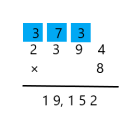
Step 1: Multiply ones and regroup
8 × 4 ones = 32 ones
regroup 32 ones as 3 tens and 2 ones
Step 2: Multiply tens and regroup tens
8 × 9 tens = 72 tens
72 tens + 3 tens = 75 tens
regroup as 7 hundreds and 5 tens
Step 3: Multiply hundreds and regroup hundreds
8 × 3 hundreds = 24 hundreds
24 hundreds + 7 hundreds = 31 hundreds
regroup as 3 thousands and 1 hundred
Step 4: Multiply thousands and regroup thousands
8 × 2 thousands = 16 thousands
16 thousands + 3 thousands = 19 thousands
By holding all the places together we get 19,152
So, 2,394 × 8 = 19,152
Finally , 19,746 is greater than 19,152.
Question 15.
A roller coaster is twice as tall as a Ferris wheel that is 228 feet tall. How tall is the roller coaster?
Answer: The roller coaster is 456 feet tall.
Explanation:
Given, A roller coaster is twice as tall as a Ferris wheel that is 228 feet tall.so , 228 × 2
Step 1: Multiply ones and regroup
2 × 8 ones = 16 ones
Regroup as 1 ten and 6 ones
Step 2: Multiply tens and regroup tens
2 × 2 tens = 4 tens
4 tens + 1 ten = 5 tens
Step 3: Multiply hundreds and regroup hundreds
2 × 2 hundreds = 4 hundreds
By holding all places together we get 456 .
The roller coaster is 456 feet tall.
Question 16.
DIG DEEPER!
How can you estimate the number of digits in the product of 7 and 8,348?
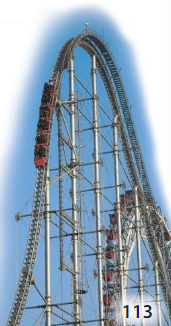
Answer: 58,436 , There are 7 digits i the product of the 7 and 8,348
Explanation:
Step 1: Multiply ones and regroup
7 × 8 ones = 56 ones
regroup 56 ones as 5 tens and 6 ones
Step 2: Multiply tens and regroup tens
7 × 4 tens = 28 tens
28 tens + 5 tens = 33 tens
regroup as 3 hundreds and 3 tens
Step 3: Multiply hundreds and regroup hundreds
7 × 3 hundreds = 21 hundreds
21 hundreds + 3 hundreds = 24 hundreds
regroup as 2 thousands and 4 hundreds
Step 4: Multiply thousands and regroup thousands
7 × 8 thousand = 56 thousands
56 thousands + 2 thousands = 58 thousands
By holding all the places together we get 58,436.
So, 8,348 × 7 = 58,436
Think and Grow: Modeling Real Life
Example
The lengths of time that a penguin and an elephant seal can hold their breaths are shown. A sea turtle can hold its breath 7 times as long as a penguin. Which animal can hold its breath the longest?
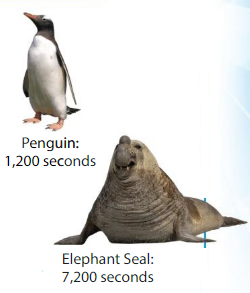
Multiply to find how long a sea turtle can hold its breath.

Answer : The sea turtle can hold its breath up to 84,00 seconds
Explanation: 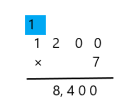
Step 1: Multiply ones and regroup
0
Step 2: Multiply tens and regroup tens
0
Step 3: Multiply hundreds and regroup hundreds
7 × 2 hundreds = 14 hundreds
regroup as 1 thousand and 4 hundreds
Step 4: Multiply thousands and regroup
7 × 1 thousands = 7 thousands
7 thousands + 1 thousand = 8 thousands
By holding all places together we get 8,400 .
Compare the lengths of time that each animal can hold its breath.
Answer: Penguin can hold its breath by 1,200 seconds.
Elephant seal can hold its breath by 7,200 seconds.
Sea turtle can hold it breath by 8,400 seconds.
The _______ can hold its breath the longest.
Answer: Sea turtle can hold its breath the longest
Show and Grow
Question 17.
You have 796 baseball cards and 284 hockey cards. You have 3 times as many football cards as hockey cards. Which type of card do you have the greatest number of?
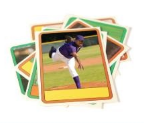
Answer: 852 football cards are the greatest number of cards.
Explanation:
Step 1: Multiply ones and regroup
3 × 4 ones = 12 ones
Regroup as 1 ten and 2 ones
Step 2: Multiply tens and regroup tens
3 × 8 tens = 24 tens
24 tens + 1 ten = 25 tens
regroup 25 tens as 2 hundreds and 5 ten
Step 3: Multiply hundreds and regroup hundreds
3 × 2 hundreds = 6 hundreds
6 hundreds + 2 hundreds = 8 hundreds
By holding all places together we get 852.
So,852 football cards are the greatest number of cards.
Question 18.
A principal has $2,000 to spend on updating some of your school’s tablets. She buys 4 tablets that each cost $299. How much money does the principal have left?
Answer: $299 × 4 = $1,196 , the principal have left $804.
Explanation:
She buys 4 tablets that each cost $299
Step 1: Multiply ones and regroup
4 × 9 ones = 36 ones
Regroup as 3 tens and 6 ones
Step 2: Multiply tens and regroup tens
4 × 9 tens = 36 tens
36 tens + 3 tens = 39 tens
regroup 39 tens as 3 hundreds and 9 tens
Step 3: Multiply hundreds and regroup hundreds
4 × 2 hundreds = 8 hundreds
8 hundreds + 3 hundreds = 11 hundreds
regroup as 1 thousand and 1 hundred.
By holding all places together we get 1,196
So, $299 × 4 = $1,196 ,
the principal have left $804.
Question 19.
A train ticket from New York City to Miami costs $152. A train ticket from New York City to Orlando costs $144. A group of 8 friends is in New York City. How much money can the group save by going to Orlando instead of going to Miami?
Answer: They can save $64.
Explanation:
A group of 8 friends is in New York City,
A train ticket from New York City to Miami costs $152.
Step 1: Multiply ones and regroup
8 × 2 ones = 16 ones
Regroup as 1 ten and 6 ones
Step 2: Multiply tens and regroup tens
8 × 5 tens = 40 tens
40 tens + 1 ten = 41 tens
regroup 41 tens as 4 hundreds and 1 ten
Step 3: Multiply hundreds and regroup hundreds
8 × 1 hundreds = 8 hundreds
8 hundreds + 4 hundred = 12 hundreds
regroup as 1 thousand and 2 hundreds
By holding all places together we get 1,216
So, $152 × 8 = $1,216.

A train ticket from New York City to Orlando costs $144,
Step 1: Multiply ones and regroup
8 × 4 ones = 32 ones
Regroup as 3 tens and 2 ones
Step 2: Multiply tens and regroup tens
8 × 4 tens = 32 tens
32 tens + 3 tens = 35 tens
regroup 35 tens as 3 hundreds and 5 tens
Step 3: Multiply hundreds and regroup hundreds
8 × 1 hundreds = 8 hundreds
8 hundreds + 3 hundred = 11 hundreds
regroup as 1 thousand and 1 hundred
By holding all places together we get 1,152
So, $144 × 8 = $1,152.
Finally , $1,216 – $1,152 = $ 64
They can save $64.
Multiply Three-and Four-Digit Numbers by One-Digit Numbers Homework & Practice 3.8
Find the product. Check whether your answer is reasonable.
Question 1.
Estimate: ______

Answer: 2,736, The estimated product is 2,700
Explanation:
Step 1: Multiply ones and regroup
9 × 4 ones = 36 ones
Regroup 36 ones as 3 tens and 6 ones
Step 2: Multiply tens and regroup tens
9 × 0 tens = 0 tens
0 tens + 3 tens = 3 tens
Step 3: Multiply hundreds and regroup hundreds
9 × 3 hundreds = 27 hundreds
Regroup 27 hundreds as 2 thousands and 7 hundreds
By holding all places together we get 2,736 .
And the estimated product is 2,700
because 304 is close to 300, 300 × 9 = 2,700
So, 304 × 9 = 2,736 .
Question 2.
Estimate: _____

Answer: 4,936, The estimated product is 4,880
Explanation: 
Step 1: Multiply ones and regroup
8 × 7 ones = 56 ones
Regroup 56 ones as 5 tens and 6 ones
Step 2: Multiply tens and regroup tens
8 × 1 ten = 8 tens
8 tens + 5 tens = 10 tens
regroup as 1 hundred and 0 tens
Step 3: Multiply hundreds and regroup hundreds
8 × 6 hundreds = 48 hundreds
48 hundreds + 1 hundred = 49 hundreds
Regroup 49 hundreds as 4 thousands and 9 hundreds
By holding all places together we get 4,936 .
And the estimated product is 4,880
because 617 is close to 610, 610 × 8 = 4,880
So, 617 × 8 = 4,936 .
Question 3.
Estimate: _____

Answer: 23,756, The estimated product is 23,760
Explanation: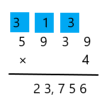
Step 1: Multiply ones and regroup
4 × 9 ones = 36 ones
regroup 36 ones as 3 tens and 6 ones
Step 2: Multiply tens and regroup tens
4 × 3 tens = 12 tens
12 tens + 3 tens = 15 tens
regroup as 1 hundred and 5 tens
Step 3: Multiply hundreds and regroup hundreds
4 × 9 hundreds = 36 hundreds
36 hundreds + 1 hundred = 37 hundreds
regroup as 3 thousands and 7 hundreds
Step 4: Multiply thousands and regroup thousands
4 × 5 thousands = 20 thousands
20 thousands + 3 thousands = 23 thousands
By holding all the places together we get 23,756.
And the estimated product is 23,760
because 5,939 is close to 5,940, 5,940 × 4 = 23,760
So, 5,939 × 4 = 23,756 .
Question 4.
Estimate: ______

Answer: 8,262, The estimated product is 8,250.
Explanation: 
Step 1: Multiply ones and regroup
3 × 4 ones = 12 ones
regroup 12 ones as 1 ten and 2 ones
Step 2: Multiply tens and regroup tens
3 × 5 tens = 15 tens
15 tens + 1 ten = 16 tens
regroup as 1 hundred and 6 tens
Step 3: Multiply hundreds and regroup hundreds
3 × 7 hundreds = 21 hundreds
21 hundreds + 1 hundred = 22 hundreds
regroup as 2 thousands and 2 hundreds
Step 4: Multiply thousands and regroup thousands
3 × 2 thousands = 6 thousands
6 thousands + 2 thousands = 8 thousands
By holding all the places together we get 8,262
And the estimated product is 8,250
because 2,754 is close to 2,750, 2,750 × 3 = 8,250
So, 2,754 × 3 = 8,262 .
Question 5.
Estimate: ______

Answer: 50,790, The estimated product is 50,760
Explanation:
Step 1: Multiply ones and regroup
6 × 5 ones = 30 ones
regroup 30 ones as 3 tens and 0 ones
Step 2: Multiply tens and regroup tens
6 × 6 tens = 36 tens
36 tens + 3 tens = 39 tens
regroup as 3 hundreds and 9 tens
Step 3: Multiply hundreds and regroup hundreds
6 × 4 hundreds = 24 hundreds
24 hundreds + 3 hundreds = 27 hundreds
regroup as 2 thousands and 7 hundreds
Step 4: Multiply thousands and regroup thousands
6 × 8 thousands = 48 thousands
48 thousands + 2 thousands = 50 thousands
By holding all the places together we get 50,790.
And the estimated product is 50,760,
because 8,465 is close to 8,460, 8,460 × 6 = 50,760
So, 8,465 × 6 = 50,790.
Question 6.
Estimate: ______

Answer: 5,754 ,The estimated product is 5,740
Explanation: 
Step 1: Multiply ones and regroup
7 × 2 ones = 14 ones
Regroup 14 ones as 1 tens and 4 ones
Step 2: Multiply tens and regroup tens
7 × 2 tens = 14 tens
14 tens + 1 tens = 15 tens
regroup as 1 hundred and 5 tens
Step 3: Multiply hundreds and regroup hundreds
7 × 8 hundreds = 56 hundreds
56 hundreds + 1 hundred = 57 hundreds
Regroup 57 hundreds as 5 thousands and 7 hundreds
By holding all places together we get 5,754 .
And the estimated product is 5,740
because 822 is close to 820, 820 × 7 = 5,740
So, 822 × 7 = 5,754 .
Find the product. Check whether your answer is reasonable.
Question 7.
Estimate: _______
629 × 5 = ______
Answer: 3,145 , The estimated product is 3,150
Explanation:
Step 1: Multiply ones and regroup
5 × 9 ones = 45 ones
Regroup 45 ones as 4 tens and 5 ones
Step 2: Multiply tens and regroup tens
5 × 2 tens = 10 tens
10 tens + 4 tens = 14 tens
regroup as 1 hundred and 4 tens
Step 3: Multiply hundreds and regroup hundreds
5 × 6 hundreds = 30 hundreds
30 hundreds + 1 hundred = 31 hundreds
Regroup 31 hundreds as 3 thousands and 1 hundred
By holding all places together we get 3,145.
And the estimated product is 3,150.
because 629 is close to 630, 630 × 5 = 3,150.
So, 629 × 5 = 3,145 .
Question 8.
Estimate: _______
7 × 1,836 = ______
Answer: 12,852 , The estimated product is 12,880
Explanation: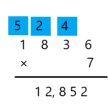
Step 1: Multiply ones and regroup
7 × 6 ones = 42 ones
regroup 42 ones as 4 tens and 2 ones
Step 2: Multiply tens and regroup tens
7 × 3 tens = 21 tens
21 tens + 4 tens = 25 tens
regroup as 2 hundreds and 5 tens
Step 3: Multiply hundreds and regroup hundreds
7 × 8 hundreds = 56 hundreds
56 hundreds + 2 hundreds = 58 hundreds
regroup as 5 thousands and 8 hundreds
Step 4: Multiply thousands and regroup thousands
7 × 1 thousands = 7 thousands
7 thousands + 5 thousands = 12 thousands
By holding all the places together we get 12,852
And the estimated product is 12,880
because 1,836 is close to 1,840, 1,840 × 7 = 12,880
So, 1,836 × 7 = 12,852 .
Question 9.
Estimate: ______
453 × 3 = ______
Answer: 1,359 , The estimated product is 1,350
Explanation:
Step 1: Multiply ones and regroup
3 × ones = 9 ones
Step 2: Multiply tens and regroup tens
3 × 5 tens = 15 tens
regroup as 1 hundred and 5 tens
Step 3: Multiply hundreds and regroup hundreds
3 × 4 hundreds = 12 hundreds
12 hundreds + 1 hundred = 13 hundreds
Regroup 13 hundreds as 1 thousand and 3 hundreds
By holding all places together we get 1,359 .
And the estimated product is 1,350
because 453 is close to 450, 450 × 3 = 1,350.
So, 453 × 3 = 1,359 .
Compare
Question 10.
![]()
Answer: 20,346 is greater than 6,782.
Explanation: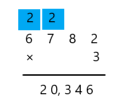
Step 1: Multiply ones and regroup
3 × 2 ones = 6 ones
Step 2: Multiply tens and regroup tens
3 × 8 tens = 24 tens
regroup as 2 hundreds and 4 tens
Step 3: Multiply hundreds and regroup hundreds
3 × 7 hundreds = 21 hundreds
21 hundreds + 2 hundreds = 23 hundreds
regroup as 2 thousands and 3 hundreds
Step 4: Multiply thousands and regroup thousands
3 × 6 thousands = 18 thousands
18 thousands + 2 thousands = 20 thousands
By holding all the places together we get 20,346

Step 1: Multiply ones and regroup
2 × 1 ones = 2 ones
Step 2: Multiply tens and regroup tens
2 × 9 tens = 18 tens
regroup as 1 hundred and 8 tens
Step 3: Multiply hundreds and regroup hundreds
2 × 3 hundreds = 6 hundreds
6 hundreds + 1 hundred = 7 hundreds
Step 4: Multiply thousands and regroup thousands
2 × 3 thousands = 6 thousands
By holding all the places together we get 6,782.
So, 20,346 is greater than 6,782.
Question 11.
![]()
Answer: 12,528 is greater than 9,972.
Explanation:
Step 1: Multiply ones and regroup
9 × 2 ones = 18 ones
regroup 18 ones as 1 tens and 8 ones
Step 2: Multiply tens and regroup tens
9 × 9 tens = 81 tens
81 tens + 1 tens = 82 tens
regroup as 8 hundreds and 2 tens
Step 3: Multiply hundreds and regroup hundreds
9 × 3 hundreds = 27 hundreds
27 hundreds + 8 hundreds = 35 hundreds
regroup as 3 thousands and 5 hundreds
Step 4: Multiply thousands and regroup thousands
9 × 1 thousands = 9 thousands
9 thousands + 3 thousands = 12 thousands
By holding all the places together we get 12,528.
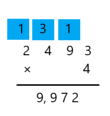
Step 1: Multiply ones and regroup
4 × 3 ones = 12 ones
regroup 12 ones as 1 tens and 2 ones
Step 2: Multiply tens and regroup tens
4 × 9 tens = 36 tens
36 tens + 1 tens = 37 tens
regroup as 3 hundreds and 7 tens
Step 3: Multiply hundreds and regroup hundreds
4 × 4 hundreds = 16 hundreds
16 hundreds + 3 hundreds = 19 thousands
regroup as 1 thousand and 9 hundreds
Step 4: Multiply thousands and regroup thousands
4 × 2 thousands = 8 thousands
8 thousands + 1 thousand = 9 thousands
By holding all the places together we get 9,972.
So, 12,528 is greater than 9,972.
Question 12.
A backpacker hikes the Buckeye Trail 5 times. The trail is 1,444 miles long. How many miles has he hiked on the Buckeye Trail in all?
Answer: 7,220 miles has hiked on the Buckeye Trail.
Explanation: 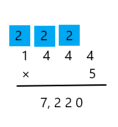
The trail is 1,444 miles long,
A backpacker hikes the Buckeye Trail 5 times. Then 1,444 × 5 ,
Step 1: Multiply ones and regroup
5 × 4 ones = 20 ones
regroup 20 ones as 2 tens and 0 ones
Step 2: Multiply tens and regroup tens
5 × 4 tens = 20 tens
20 tens + 2 tens = 22 tens
regroup as 2 hundreds and 2 tens
Step 3: Multiply hundreds and regroup hundreds
5 × 4 hundreds = 20 hundreds
20 hundreds + 2 hundreds = 22 hundreds
regroup as 2 thousands and 2 hundreds
Step 4: Multiply thousands and regroup thousands
5 × 1 thousands = 5 thousands
5 thousands + 2 thousands = 7 thousands
By holding all the places together we get 7,220.
Question 13.
Number Sense
What number is 980 more than the product of 6,029 and 8?
Answer: 49,212, The product of 6,029 and 8 is 48,232
Explanation: 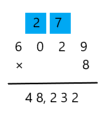
Step 1: Multiply ones and regroup
8 × 9 ones = 72 ones
regroup 72 ones as 7 tens and 2 ones
Step 2: Multiply tens and regroup tens
8 × 2 tens = 16 tens
16 tens + 7 tens = 23 tens
regroup as 2 hundreds and 3 tens
Step 3: Multiply hundreds and regroup hundreds
8 × 0 hundreds = 0 hundreds
0 hundreds + 2 hundreds = 2 hundreds
Step 4: Multiply thousands and regroup thousands
8 × 6 thousands = 48 thousands
By holding all the places together we get 48,232.
Given, The required number is 980 more than 48,232,
Then 48,232 + 980 = 49,212.
Finally the wanted number is 49,212.
Question 14.
YOU BE THE TEACHER
Newton says that the product of a three-digit number and a one-digit number is always a three-digit number. Is Newton correct? Explain.
Answer: NO
Explanation: The Assumption that the product of a three-digit number and a one-digit number is always a three-digit number is wrong because,
the the factor numbers of a product might vary in places .
The highest one digit number is multiplied by the highest 3 digit number will not be a 3 digit number as a output product .
So, Newton is wrong about his statement.
Question 15.
Modeling Real Life
The numbers of songs Newton and Descartes’s download are shown. You download 2 times as many songs as Descartes. Who downloads the most songs?
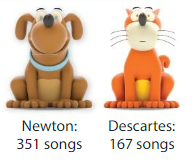
Answer: I downloaded 334 songs and Newton has the most songs that is 351 songs .
Explanation: 
Step 1: Multiply ones and regroup
2 × 7 ones = 14 ones
Regroup as 1 ten and 4 ones
Step 2: Multiply tens and regroup tens
2 × 6 tens = 12 tens
12 tens + 1 ten = 13 tens
regroup 11 tens as 1 hundreds and 3 tens
Step 3: Multiply hundreds and regroup hundreds
2 × 1 hundreds = 2 hundreds
2 hundreds + 1 hundred = 3 hundreds
By holding all places together we get 334 .
The songs that i downloaded are 334
Newton has 351 songs and Descartes has 167 songs and compared to all of us ,
Newton has more songs that is 315 songs.
Review & Refresh
Find the sum or difference. Use the inverse operation to check.
Question 16.

Answer: 685.
Explanation:
By subtracting 847 – 162 , we get 685
To check inverse operation :
Add 685 + 162 = 847.
So 847 – 162 = 685 .
Question 17.

Answer: 901
Explanation:
By adding 612 + 289 , we get 901
To check inverse operation:
Subtract 901 – 289 ,we get 612
So, 612 + 289 = 901 .
Question 18.

Answer: 149
Explanation: 
By subtracting 500 – 351 , we get 149
To check inverse operation :
Add 315 + 149 = 500 .
So 500 – 351 = 149 .
Lesson 3.9 Use Properties to Multiply
Explore and Grow
Use any strategy to find each product. Explain the strategy you used to find each product.
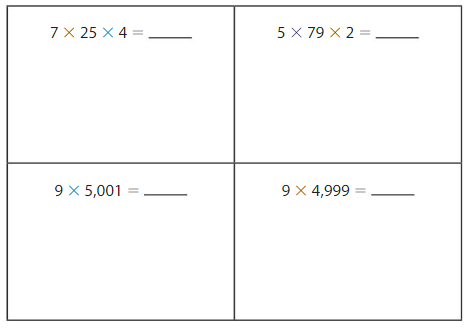
Answer: 700 , 790, 45,009 , 44,991.
Explanation: 7 × 25 × 4
By using commutative property of multiplication
= 7 × ( 25 × 4)
=7 × 100
= 700
So, 7 × 25 × 4 = 700 .
5 × 79 × 2
By using commutative property of multiplication
= 79 × ( 5 × 2)
=79 × 10
= 790
So, 5 × 79 × 2 = 790 .
9 × 5,001
By using Distributive property of multiplication
= 9 × (5,000 + 1)
= ( 9 × 5,000) + ( 9 × 1)
= 45,000 + 9
= 45,009
So, 9 × 5,001 = 45,009.
9 × 4,999
By using Distributive property of multiplication
= 9 × (5,000 – 1)
= ( 9 × 5,000) – ( 9 × 1)
= 45,000 – 9
= 44,991
So, 9 × 4,999 = 44,991.
Construct Arguments
Compare your strategies with your partner’s. How are they alike? How are they different?
Answer: All the strategies are correct that are used by my friend and me.
Using any method in multiplication is frequently used to find the product as fast as possible
some methods are long and some of them are really fast and easy .
Every method is correct unless you did not do any mistakes, so , all are alike.
Think and Grow: Use Properties to Multiply
You can use properties to multiply.
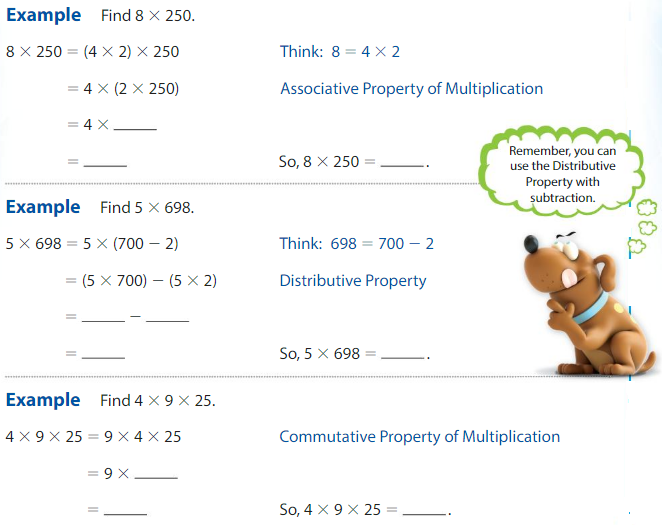
Answer : 2,000 , 3,490 , 900
Explanation:
8 × 250
By using associative property of multiplication
=( 4 × 2 ) × 250
= 4 × ( 2 × 250)
= 4 × 500
= 2,000.
So, 8 × 250 = 2,000.
5 × 698
By using Distributive property of multiplication
= 5 × ( 700 – 2)
= (5 × 700) – ( 5 × 2)
= 3,500 – 10
= 3,490
So, 5 × 698 = 3,490.
4 × 9 × 25
By using commutative property of multiplication
= 9 × ( 4 × 25)
= 9 × 100
= 900.
So, 4 × 9 × 25 = 900.
Show and Grow
Use properties to find the product. Explain your reasoning.
Question 1.
6 × 150
Answer: 900
Explanation:
By using Distributive property of multiplication
= 6 × ( 100 + 50)
= (6 × 100) + ( 6 × 50)
= 600 + 300
= 900.
So, 6 × 150 = 900.
Question 2.
3 × 494
Answer: 1,482
Explanation:
By using Distributive property of multiplication
= 3 × ( 500 – 6)
= (3 × 500) – ( 3 × 6)
= 1500 – 18
= 1,482.
So, 3 × 494 = 1,482.
Question 3.
25 × 7 × 4
Answer: 700
Explanation:
By using commutative property of multiplication
= 7 × ( 25 × 4 )
= 7 × 100
= 700.
So, 25 × 7 × 4 = 700.
Apply and Grow: Practice
Use properties to find the product. Explain your reasoning.
Question 4.
7 × 798
Answer: 5,586
Explanation:
By using Distributive property of multiplication
= 7 × ( 800 – 2)
= (7 × 800) – ( 7 × 2)
= 5,600 – 14
= 5,586
So, 7 × 798 = 5,586.
Question 5.
350 × 6
Answer: 2,100
Explanation:
By using Distributive property of multiplication
= 6 × ( 300 + 50)
= (6 × 300) + ( 6 × 50)
= 1,800 + 300
= 2,100.
So, 6 × 350 = 2,100.
Question 6.
106 × 5
Answer: 530
Explanation:
By using Distributive property of multiplication
= 5 × ( 100 + 6)
= (5 × 100) + ( 5 × 6)
= 500 + 30
= 530.
So, 5 × 106 = 530.
Question 7.
4 × 625
Answer: 2,500
Explanation:
By using Distributive property of multiplication
= 4 × ( 600 + 25)
= (4 × 600) + ( 4 × 25)
= 2400 + 100
= 2,500.
So, 4 × 625 = 2,500.
Question 8.
395 × 8
Answer: 3,160.
Explanation:
By using Distributive property of multiplication
= 8 × ( 400 – 5)
= (8 × 400) – ( 8 × 5)
= 3,200 – 40
= 3,160.
So, 8 × 395 = 3,160.
Question 9.
2 × 7 × 15
Answer: 210
Explanation:
By using commutative property of multiplication
= 7 × ( 15 × 2 )
= 7 × 30
= 210.
So, 2 × 7 × 15 = 210.
Question 10.
430 × 2
Answer: 860
Explanation:
By using Distributive property of multiplication
= 2 × ( 400 + 30)
= (2 × 400) + ( 2 × 30)
= 800 + 60
= 860.
So, 2 × 430 = 860.
Question 11.
8 × 150
Answer: 1,200
Explanation:
By using Distributive property of multiplication
= 8 × ( 100 + 50)
= (8 × 100) + ( 8 × 50)
= 800 + 400
= 1,200.
So, 8 × 150 = 1,200.
Question 12.
3 × 1,997
Answer: 5,991
Explanation:
By using Distributive property of multiplication
= 3 × ( 2000 – 3)
= (3 × 2000) – ( 3 × 3)
= 6000 – 9
= 5,991.
So, 3 × 1,997 = 5,991.
Question 13.
25 × 9 × 2
Answer: 450
Explanation:
By using commutative property of multiplication
= 9 × ( 25 × 2 )
= 9 × 50
= 450.
So, 25 × 9 × 2 = 450.
Question 14.
404 × 6
Answer: 2,424
Explanation:
By using Distributive property of multiplication
= 6 × ( 400 + 4)
= (6 × 400) + ( 6 × 4)
= 2400 + 24
= 2,424.
So, 6 × 404 = 2,424.
Question 15.
4 × 2,004
Answer: 8,016
Explanation:
By using Distributive property of multiplication
= 4 × ( 2000 + 4)
= (4 × 2000) + ( 4 × 4)
= 8000 + 16
= 8,016.
So, 4 × 2,004 = 8,016.
Question 16.
Which One Doesn’t Belong?
Which expression does not belong with the other three?
(3 × 30) + (3 × 7), (3 × 40) – (3 × 3)
3 × (30 + 7), 3 × 3 × 7
Answer: 3 × 3 × 7
Explanation:
(3 × 30) + (3 × 7)
(3 × 40) – (3 × 3)
3 × (30 + 7) ,
These 3 expressions are related to the distributive property of multiplication.
So, 3 × 3 × 7 this expression does not belong to the distributive property of multiplication.
Question 17.
Number Sense
Use properties to find each product
9 × 80 = 720, so 18 × 40 = _____.
5 × 70 = 350, so 5 × 72 = _____.
Answer: 720, 360.
Explanation:
By using associative property of multiplication
=( 6 × 3 ) × 40
= 6 × ( 3 × 40)
= 6 × 120
= 720.
So, 18 × 40 = 720.
5 × 72
By using Distributive property of multiplication
= 5 × ( 70 + 2)
= (5 × 70) + ( 5 × 2)
= 350 + 10
= 360.
So, 5 × 72 = 360.
Think and Grow: Modeling Real Life
Example
The fastest recorded speed of a dragster car in the United States was 31 miles per hour less than 3 times the top speed of the roller coaster. What was the speed of the car?
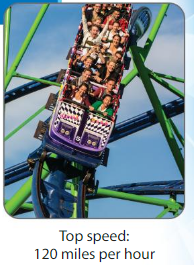
Multiply to find 3 times the top speed of the roller coaster.

Answer: 360 miles per hour.
Explanation:
3 × 120
By using Distributive property of multiplication
= 3 × ( 100 + 20)
= (3 × 100) + ( 3 × 20)
= 300 + 60
= 360.
So, 3 × 120 = 360.
Subtract to find 31 miles per hour less
_____ – 31 = _______ miles per hour
Answer: 329 miles per hour
Explanation:
360 – 31 = 329 .
So, the speed of the car was ______ miles per hour.
Answer: the speed of the car was 329 miles per hour.
Show and Grow
Question 18.
In 2016, a theme park used 300 drones for a holiday show. In 2017, China used 200 fewer than 4 times as many drones for a lantern festival. How many drones did China use?
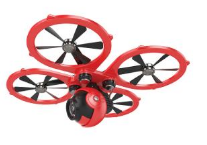
Answer: China used 1,000 drones.
Explanation:
A theme park used 300 drones for a holiday show
China used 4 times as many drones for a lantern festival.
So, 4 × 300 = 1,200
Given, China used 200 fewer than 4 times as many drones for a lantern festival.
So 1,200 – 200 = 1,000.
China used 1,000 drones.
Question 19.
A subway train has 8 cars. Each car can hold 198 passengers. How many passengers can two subway trains hold?
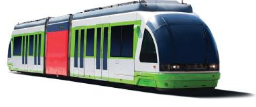
Answer: 3,168 passengers.
Explanation:
A subway train has 8 cars
Each car can hold 198 passengers.
So, 8 × 198
By using Distributive property of multiplication
= 8 × ( 200 – 2)
= (8 × 200) – ( 8 × 2)
= 1600 – 16
= 1,584.
So, 8 × 198 = 1,584. 1,584 passengers for a subway train
For 2 subway trains , 1,584 + 1,584 = 3,168.
Two subway trains can hold 3,168 passengers.
Question 20.
You plant cucumbers, green beans, squash, and corn in a community garden. You plant 3 rows of each vegetable with 24 seeds in each row. How many seeds do you plant?
Answer: 288 seeds
Explanation:
plant 3 rows of each vegetable with 24 seeds in each row.
So, 3 × 24
By using Distributive property of multiplication
= 3 × ( 20 + 4)
= (3 × 20) + ( 3 × 4)
= 60 + 12
= 72.
So, 3 × 24 = 72.
You plant cucumbers, green beans, squash, and corn in a community garden.
Total 4 various vegetables are planted
So, 4 × 72
By using Distributive property of multiplication
= 4 × ( 70 + 2)
= (4 × 70) + ( 4 × 2)
= 280 + 8
= 288.
So, 4 × 72 = 288.
We have to plant 288 seeds.
Use Properties to Multiply Homework & Practice 3.9
Use properties to find the product. Explain your reasoning.
Question 1.
3 × 497
Answer: 1,491
Explanation:
By using Distributive property of multiplication
= 3 × ( 500 – 3)
= (3 × 500) – ( 3 × 3)
= 1500 – 9
= 1,491.
So, 3 × 497 = 1,491.
Question 2.
36 × 9
Answer: 324
Explanation:
By using Distributive property of multiplication
= 9 × ( 30 + 6)
= (9 × 30) + ( 9 × 6)
= 270 + 54
= 324.
So, 9 × 36 = 324.
Question 3.
8 × 350
Answer: 2,800
Explanation:
By using Distributive property of multiplication
= 8 × ( 300 + 50)
= (8 × 300) + ( 8 × 50)
= 2400 + 400
= 2,800.
So, 8 × 350 = 2,800.
Question 4.
25 × 8 × 4
Answer: 800
Explanation:
By using commutative property of multiplication
= 8 × ( 25 × 4 )
= 8 × 100
= 800.
So, 25 × 8 × 4 = 800.
Question 5.
999 × 5
Answer: 4,995
Explanation:
By using Distributive property of multiplication
= 5 × ( 1000 – 1)
= (5 × 1000) – ( 5 × 1)
= 5,000 – 5
= 4,995
So, 5 × 999 = 4,995.
Question 6.
9 × 402
Answer: 3,618
Explanation:
By using Distributive property of multiplication
= 9 × ( 400 + 2)
= (9 × 400) + ( 9 × 2)
= 3600 + 18
= 3,618.
So, 9 × 402 = 3,618.
Question 7.
509 × 4
Answer: 2,036
Explanation:
By using Distributive property of multiplication
= 4 × ( 500 + 9)
= (4 × 500) + ( 4 × 9)
= 2000 + 36
= 2,036 .
So, 4 × 509 = 2,036.
Question 8.
2 × 9 × 15
Answer: 270
Explanation:
By using commutative property of multiplication
= 9 × ( 15 × 2 )
= 9 × 30
= 270.
So, 2 × 9 × 15 = 270.
Question 9.
3,998 × 7
Answer: 27,986
Explanation:
By using Distributive property of multiplication
= 7 × ( 4000 – 2)
= (7 × 4000) – ( 7 × 2)
= 28,000 – 14
= 27,986.
So, 3,998 × 7 = 27,986.
Question 10.
Is Descartes correct? Explain.
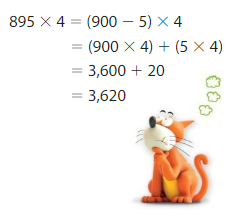
Answer: Descartes is not correct, 895 × 4 = 3,580.
Explanation:
By using Distributive property of multiplication
= 4 × ( 900 – 5)
= (4 × 900) – ( 4 × 5)
= 3600 – 20
= 3,620.
So, 895 × 4 = 3,580.
Question 11.
DIG DEEPER!
Complete the square so that the product of each row and each column is 2,400.
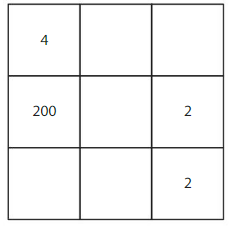
Answer: 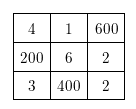
Explanation: 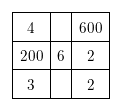
By using column 1 , we get 4 × 200 = 800,
To obtain the 2,400 the missing number should be 3 , Then 800 × 3 = 2,400.
By using column 3 , we get 2 × 2 = 4,
To obtain the 2,400 the missing number should be 600 , Then 600 × 4 = 2,400.
By using row 2 , we get 200 × 2 = 400,
To obtain the 2,400 the missing number should be 6 , Then 400 × 6 = 2,400.
By using row 1 , we get 4 × 600 = 2,400,
To obtain the 2,400 the missing number should be 1 , Then 2,400 × 1 = 2,400.
By using row 3 , we get 3 × 2 = 6,
To obtain the 2,400 the missing number should be 400 , Then 6 × 400 = 2,400.
The complete Square is  .
.
Question 12.
Modeling Real Life
The height of the Great Pyramid of Giza is 275 feet shorter than 2 times the height of the Luxor Hotel in Las Vegas. How tall is the Great Pyramid of Giza?
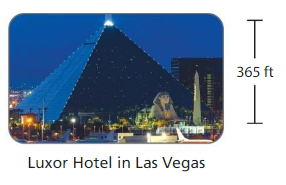
Answer: The height of the Great Pyramid of Giza is 455 feet
Explanation:
The height of the Great Pyramid of Giza is 2 times the height of the Luxor Hotel in Las Vegas
The height of the Luxor Hotel in Las Vegas is 365 feet,
So, 2 × 365
By using Distributive property of multiplication
= 2 × ( 300 + 60 + 5 )
= (2 × 300) + ( 2 × 60) + ( 2 × 5 )
= 600 + 120 + 10
= 730.
So, 2 × 365 = 730.
Given, The height of the Great Pyramid of Giza is 275 feet shorter than 2 times the height of the Luxor Hotel in Las Vegas. So, 730 -275 = 455
The height of the Great Pyramid of Giza is 455 feet.
Question 13.
Modeling Real Life
Some firefighters are testing their equipment. Water from their firetruck hose hits the wall 12 feet higher than 7 times where the spray from a fire extinguisher hits the wall. How many feet high does the wall water from the hose hit the wall?
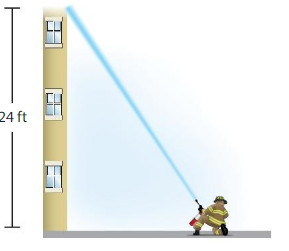
Answer: 180 feet.
Explanation:
Water from their firetruck hose hits the wall 7 times where the spray from a fire extinguisher hits the wall.
The spray from a fire extinguisher hits the wall at 24 feet,
So, 7 × 24
By using Distributive property of multiplication
= 7 × ( 20 + 4)
= (7 × 20) + ( 7 × 4)
= 140 + 28
= 168.
So, 7 × 24 = 168.
Water from their firetruck hose hits the wall 12 feet higher than 7 times where the spray from a fire extinguisher hits the wall. Then 168 + 12 = 180 feet
The wall water from the hose hit the wall is 180 feet.
Review & Refresh
Question 14.
You want to learn 95 new vocabulary words. You learn 5 words the first week and an equal number of words each week for the next 9 weeks. How many words do you learn in each of the 9 weeks?
Answer: 45 words.
Explanation:
You learn 5 words the first week
An equal number of words each week for the next 9 weeks
So, 5 × 9 = 45
We learn 45 words for 9 weeks.
Lesson 3.10 Problem Solving: Multiplication
Explore and Grow
Make a plan to solve the problem.
A group of sea otters that swim together is called a raft. There are 37 otters in a raft. Each otter eats about 16 pounds of food each day. About how many pounds of food does the raft eat in 1 week?

Answer: A raft eats 4,144 pounds in 1 week.
Explanation:
Each otter eats about 16 pounds of food each day.
There are 37 otters in a raft,
The food eaten by a raft in a day is 37 × 16 = 592 pounds.
The food eaten by a raft in 7 days ( 1 week ) is 592 × 7
By using Distributive property of multiplication
= 7 × ( 500 + 90 + 2 )
= (7 × 500) + ( 7 × 90) + ( 7 × 2 )
= 3500 + 630 + 14
= 4,144.
So, 592 × 7 = 4,144.
A raft eats 4,144 pounds in 1 week.
Critique Reasoning
Compare your plan to your partner’s. How are your plans alike? How are they different?
Answer: All the strategies are correct that are used by my friend and me.
Using any method in multiplication is frequently used to find the product as fast as possible
some methods are long and some of them are really fast and easy .
Every method is correct unless you did not do any mistakes, so , all are alike. in obtaining the correct answer.
Think and Grow: Problem Solving: Multiplication
Example
A coach buys 6 cases of sports drinks and spends $60. Each case has 28 bottles. A team drinks 85 bottles at a tournament. How many bottles are left?
Understand the Problem
What do you know?
• The coach buys 6 cases.
• The coach spends $60.
• Each case has 28 bottles.
• The team drinks 85 bottles.
What do you need to find?
• You need to find how many bottles are left.
Make a Plan
How will you solve?
• Multiply 28 by6 to find the total number of bottles in 6 cases.
• Then subtract 85 bottles from the product to find how many bottles are left.
• The amount of money the coach spends is unnecessary information.
Solve
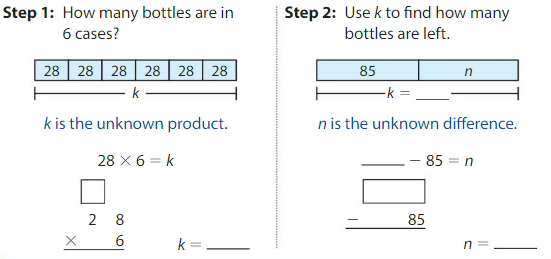
Answer: 28 × 6 = 168 , k = 168
The total bottles in 6 cases are 168
n = k – 85
= 168 – 85
= 83 .
The total bottles left are 83 .
There are ______ bottles left.
Answer: There are 83 bottles left.
Show and Grow
Question 1.
Explain how you can check whether your answer above is reasonable.
Answer: Calculate the given information to get the result.
Explanation:
The coach buys 6 cases.
Each case has 28 bottles.
The team drinks 85 bottles
We need to find how many bottles are left.
So, by calculating these we obtain the result.
Apply and Grow: Practice

Understand the problem. What do you know? What do you need to find? Explain.
Question 2.
A zookeeper has 4 boxes. There are137 grams of leaves in each box. A koala eats 483 grams of leaves in 1 day. The zookeeper wants to know how many grams of leaves are left.
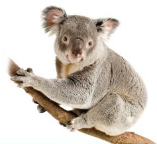
Answer: 65 grams of leaves are left.
By understanding the problem
We know that,
A zookeeper has 4 boxes.
There are137 grams of leaves in each box.
A koala eats 483 grams of leaves in 1 day
We need to find,
how many grams of leaves are left.
Explanation: A zookeeper has 4 boxes.
There are137 grams of leaves in each box.
So, 137 × 4
By using Distributive property of multiplication
= 4 × ( 100 + 30 + 7 )
= (4 × 100) + ( 4 × 30) + ( 4 × 7 )
= 400 + 120 + 28
= 548.
So, 137 × 4 = 548.
A koala eats 483 grams of leaves in 1 day
The zookeeper wants to know how many grams of leaves are left.
Then 548 – 483 = 65
There are 65 leaves left.
Question 3.
A beekeeper has 2 hives. Hive A produces 14 pounds of honey. Hive B produces 4 times as much honey as Hive A. The beekeeper wants to know how many pounds of honey are produced in all.

Answer: 70 pounds
By understanding the problem
We know that,
A beekeeper has 2 hives.
Hive A produces 14 pounds of honey.
Hive B produces 4 times as much honey as Hive A.
We should know ,
The beekeeper wants to know how many pounds of honey are produced in all.
Explanation: Hive A produces 14 pounds of honey.
Hive B produces 4 times as much honey as Hive A.
So, 4 × 14
By using Distributive property of multiplication
= 4 × ( 10 + 4)
= (4 × 10) + ( 4 × 4)
= 40 + 16
= 56.
So, 4 × 14 = 56.
Hive B produces 56 pounds of honey
The honey produced by the 2 hives is 14 + 56 = 70 pounds.
Understand the problem. Then make a plan. How will you solve? Explain.
Question 4.
A runner completes 12 races each year. He improves his time by 10 seconds each year. Each race is 5 kilometers long. The runner wants to know how many kilometers he runs in races in 3 years.
Answer: 180 kilometers.
Explanation:
By understanding the problem
we know that,
A runner completes 12 races each year.
Each race is 5 kilometers long.
We should know that,
how many kilometers he runs in races in 3 years.
Then, he completes 12 races each year. The races in 3 years. are
12 × 3 = 36 , 36 races in 3 years .
Each race is 5 kilometers long. Then for 36 races , we get
36 × 5 = 180 km.
So, The runner completes 180 km in 3 years.
Question 5.
A volunteer bikes 4 miles in all to travel from her home to a shelter and back. At the shelter, she walks a dog 1 mile. The volunteer wants to know how many miles she travels doing these tasks for 28 days.
Answer: 140 miles
Explanation:
By understanding the problem
we know that,
A volunteer bikes 4 miles in all to travel from her home to a shelter and back.
At the shelter, she walks a dog 1 mile.
We should know that,
how many miles she travels doing these tasks for 28 days.
A volunteer bikes 4 miles in all to travel from her home to a shelter and back. For 28 days, we get
4 × 28 = 112, she bikes for 112 miles.
At the shelter, she walks a dog 1 mile. for 28 days, we get
1 × 28 = 28, she walks dog for 28 miles .
she travels doing these tasks for 28 days by covering a total of 140 miles.
Question 6.
Cats have 32 muscles in each ear. Humans have 12 ear muscles in all. How many more muscles do cats have in both ears than humans have in both ears?
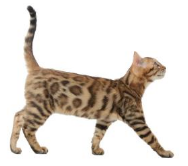
Answer: 52 more muscles .
Explanation:
By understanding the problem
we know that,
Cats have 32 muscles in each ear.
Humans have 12 ear muscles in all.
We should know that,
How many more muscles do cats have in both ears than humans have in both ears
Cats have 32 muscles in each ear, For 2 ears we get 32 +32 = 64 muscles
Humans have 12 ear muscles in all. Then 64 – 12 = 52 .
Cats have 52 more muscles than humans have in both the ears.
Question 7.
A school has 5 hallways. Each hallway has 124 lockers. 310 lockers are red. 586 lockers are in use. How many lockers not are in use?
Answer: 34 lockers are not in use.
Explanation:
By understanding the problem
we know that,
A school has 5 hallways.
Each hallway has 124 lockers
586 lockers are in use.
We should know that,
How many lockers not are in use.
Each hallway has 124 lockers , then for 5 hallways , we get 124 × 5 = 620.
620 lockers in the whole school
586 lockers are in use, to get the number of lockers that are not in use are 620 – 586 = 34.
34 lockers are not in use.
Think and Grow: Modeling Real Life
Example
A group of scientists has $7,500 to spend on microscopes and balances. They buy 3 microscopes that each cost $1,642 and 6 balances that each cost $236. How much money do the scientists have left to spend?

Think: What do you know? What do you need to find? How will you solve?
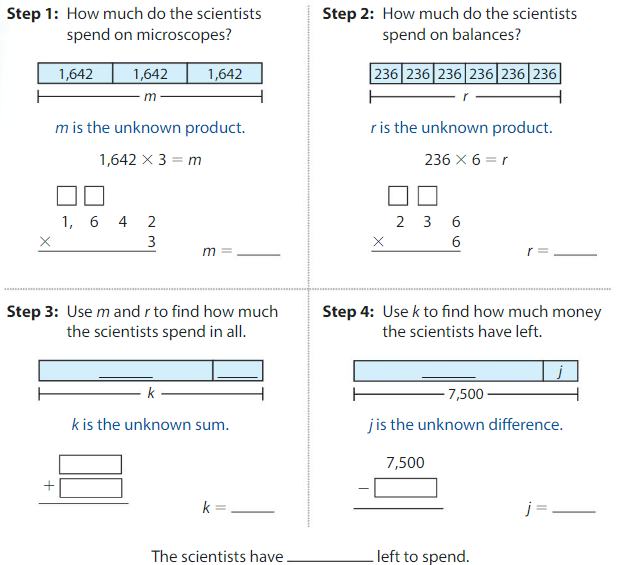
Answer : They have $1,160 left.
Explanation: 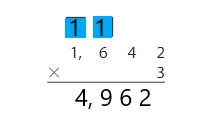
Step 1 : Scientists buy 3 microscopes and each costs $1,642 , then we have $1,642 × 3 = m,
we get m = $4,926,
Step 2 : 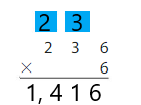
scientists buy 6 balances that each cost $236, then we have $236 × 6 = r, we get r = $1,416.
Step 3 : 
The total money spent is m + r = k ,we have , $4,926 + $1,416 = $ 6,340, we get k = $ 6,340.
Step 4 : 
The money left J = $7,500 – $6,340, we get J = $ 1,160.
Totally scientists have $1,160 left.
Show and Grow
Question 8.
City A has 3,296 fourth graders. City B has 3 times as many fourth graders as City A. City C has 5 times as many fourth graders as City B. How many fourth graders are in all three cities?
Answer: Totally There are 62,624 fourth graders in all the three cities.
Explanation: City A has 3,296 fourth graders,
Step 1 : 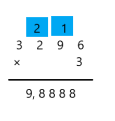
City B has 3 times as many fourth graders as City A. we get , 3,296 × 3 = 9,888.
Step 2 : 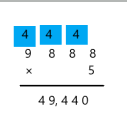
City C has 5 times as many fourth graders as City B. we get , 9,888 × 5 = 49,440.
Step 3 : 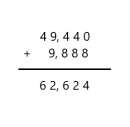
Fourth graders in all the three cities are 3,296 + 9,888 + 49,440 = 62,624.
Fourth graders in all the three cities are 62,624.
Problem Solving: Multiplication Homework & Practice 3.10
Understand the problem. Then make a plan. How will you solve? Explain.
Question 1.
Raku is a Japanese-inspired art form. fires An artist, or bakes, a raku pot at1,409 degrees Fahrenheit. The artist fires a porcelain pot at 266 degrees Fahrenheit less than 2 times the temperature at which the raku pot is fired. You want to find the temperature at which the porcelain pot is fired.
Answer: The porcelain pot is fired at the temperature of 2,552 degrees Fahrenheit.
Explanation:
By understanding the problem
we know that,
Raku is a Japanese-inspired art form
bakes, a raku pot at1,409 degrees Fahrenheit.
The artist fires a porcelain pot at 266 degrees Fahrenheit less than 2 times the temperature at which, the raku pot is fired.
We should know that,
find the temperature at which the porcelain pot is fired.
Let us say porcelain pot as p and raku pot as r ,
Now, The artist fires a porcelain pot at 266 degrees Fahrenheit less than 2 times the temperature at which, the raku pot is fired. we have p = 2r – 266 degrees Fahrenheit
2r = 2 × 1,409
= 2,818.
Then p = 2,818 – 266 = 2,552 degrees Fahrenheit
The temperature at which the porcelain pot is fired is 2,552 degrees Fahrenheit.
Question 2.
You practice basketball 6 times each week. Each basketball practice is 55 minutes long. You practice dance for 225 minutes altogether each week. You want to find how many minutes you practice basketball and dance in all each week.
Answer: you practice basketball and dance in all for 555 minutes each week.
Explanation:
By understanding the problem
we know that,
practice basketball 6 times each week.
Each basketball practice is 55 minutes long.
practice dance for 225 minutes altogether each week.
We should know that,
find how many minutes you practice basketball and dance in all each week.
So, practice basketball 6 times each week.
Each basketball practice is 55 minutes long. we have 6 × 55 = 330,
Basketball practice for a week is for 330 min.
Dance practice for a week is for 225 minutes. Then 330 + 225 = 555.
The basketball and dance practice for a whole week is for 555 minutes.
Question 3.
You buy 7 books of stamps. There are 35 stamps in each book. You give some away and have124 stamps left. How many stamps did you give away?
Answer: 121 stamps have left.
Explanation:
By understanding the problem
we know that,
You buy 7 books of stamps
There are 35 stamps in each book.
You give some away and have124 stamps left.
We should know that,
How many stamps did you give away?
So, You buy 7 books of stamps
There are 35 stamps in each book. we have 35 × 7 = 245 stamps. 245 stamps are gave away.
You give some away and have124 stamps left. we get , 245 – 124 = 121.
So, Totally 121 stamps have left.
Question 4.
Your neighbor fills his car’s gasoline tank with 9 gallons of gasoline. Each gallon of gasoline allows him to drive 23 miles. Can he drive for 210 miles without filling his gasoline tank? Explain.
Answer: No , He can only drive for 207 miles without filling his gasoline.
Explanation:
By understanding the problem
we know that,
Neighbor fills his car’s gasoline tank with 9 gallons of gasoline.
Each gallon of gasoline allows him to drive 23 miles.
We should know that,
Can he drive for 210 miles without filling his gasoline tank?
So, Neighbor fills his car’s gasoline tank with 9 gallons of gasoline.
Each gallon of gasoline allows him to drive 23 miles. we have 9 × 23 = 207.
He can travel for 207 miles for 9 gallons of gasoline.
So, he cannot drive for 210 miles without filling any extra gasoline.
Question 5.
Writing
Write and solve a two-step word problem that can be solved using multiplication as one step.
Answer: David has 20 oranges.
Explanation:
Problem- Newton has 10 apples and David has oranges 2 times as many as Newton’s apples. How many oranges does David have?
Solution: Newton has 10 apples , David has oranges 2 times as many as Newton’s apples, then we have
2 × 10 = 20 . So, David has 20 oranges.
Question 6.
Modeling Real Life
There are 1,203 pictures taken for a yearbook. There are 124 student pictures for each of the 6 grades. There are also 7 pictures for each of the 23 school clubs. The rest of the pictures are teacher or candid pictures. How many teacher or candid pictures are there?

Answer: There are 298 pictures of teacher or candid pictures.
Explanation:
By understanding the problem
we know that,
There are 1,203 pictures taken for a yearbook.
There are 124 student pictures for each of the 6 grades.
There are also 7 pictures for each of the 23 school clubs.
We should know that,
How many teacher or candid pictures are there?
So, There are 124 student pictures for each of the 6 grades. , we have 6 × 124 = 744 . There are 744 pictures from all 6 grades students.
There are also 7 pictures for each of the 23 school clubs. we have, 7 × 23 = 161 .There are 161 pictures from 23 school club students.
Total number of students we calculated are 744 + 161 = 905.
Totally a number of 1,203 pictures taken for a yearbook. Then 1,203 – 905 = 298.
Finally, There are 298 pictures of teacher or candid pictures.
Question 7.
Modeling Real Life
A construction worker earns $19 each hour she works. A supervisor earns $35 each hour she works. How much money do the construction worker and supervisor earn in all after 8 hours of work?
Answer: $432 are earned by the construction worker and supervisor earn in all after 8 hours of work.
Explanation:
By understanding the problem
we know that,
A construction worker earns $19 each hour she works.
A supervisor earns $35 each hour she works.
We should know that,
How much money do the construction worker and supervisor earn in all after 8 hours of work.
So, A construction worker earns $19 each hour she works. Then for 8 hours we get , $19 × 8 = $152.
Also A supervisor earns $35 each hour she works. Then for 8 hours we get , $35 × 8 = $280.
Total pay of both worker and supervisor is $152 + $280 = $432.
So,$432 are earned by the construction worker and supervisor earn in all after 8 hours of work.
Question 8.
Modeling Real Life
A family of 8 has $1,934 to spend on a vacation that is 1,305 miles away. They buy a $217 plane ticket and an $8 shirt for each person. How much money does the family have left?
Answer: The Family have $134 left.
Explanation:
By understanding the problem
we know that,
A family of 8 has $1,934 to spend.
They buy a $217 plane ticket and an $8 shirt for each person.
We should know that,
How much money does the family have left.
So, They buy a $217 plane ticket for each person, Then for 8 members , we have , $217 × 8 = $1,736.
They buy an $8 shirt for each person ,Then for 8 members , we have , $8 × 8 = $64.
Total cost for plane tickets and shirts are $1,736 + $64 = $1,800.
The money they left is $1,934 – $1,800 = $134.
So, The Family have $134 left.
Review & Refresh
What fraction of the whole is shaded?
Question 9.

Answer: 5/8 is shaded.
Question 10.

Answer: 2/4 is shaded.
Multiply by One-Digit Numbers Performance Task
Sounds are vibrations that travel as waves through solids, liquids, and gases. Sound waves travel 1,125 feet per second through air.

Question 1.
You see a flash of lightning 5 seconds before you hear the thunder. How far away is the storm?
Answer: 5625 feet
Explanation: As sound waves travel 1,125 feet per second through air. A flash of lightning 5 seconds before you hear the thunder, at a distance of 5625 feet.
Question 2.
Sound waves travel 22,572 feet per second faster through iron than through diamond. The speed of sound through the diamond is 39,370 feet per second.
a. Estimate the speed of sound through iron in feet per second.
b. What is the actual speed of sound through iron in feet per second?
c. Is your estimate close to the exact speed of sound through iron? Explain.
Answer:
a. 61,9412 feet per second
b. 61,9412 feet per second
c. yes
Explanation:
Sound waves travel 22,572 feet per second faster through iron than through diamond. The speed of sound through the diamond is 39,370 feet per second.
speed of iron is 22,572 + 39,370 = 61,9412.
So, we have the same answer for both of the questions because estimated speed is the actual speed of sound through iron .
Question 3.
Sound waves travel about 4 times faster through water than through air.
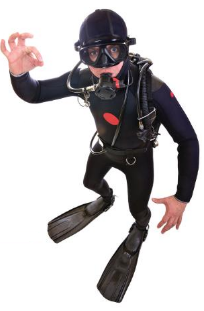
a. What is the speed of sound through the water in feet per second?
b. A horn blows underwater. A diver is about 9,000 feet away from the horn. About how many seconds does it take the diver to hear the sound of the horn?
Answer: a. 4,500 feet per second and b. 8 seconds
Explanation:
a. speed of sound is 1,125 feet per second And sound travels 4 times faster in water than in air
So, 1,125 × 4 = 4,500.
b. We know that, time = distance / speed , Given distance is 9,000 feet and speed is 1,125 feet per second. so
time = 9,000 / 1,125 = 8 seconds.
So, Diver can hear the Horn sound from 8 seconds away.
Question 4.
Do sound waves travel the fastest through solids, liquids, or gases? Explain.
Answer: Yes
Explanation:
As the density of the materials high, sound waves travel faster. That is the reason for high speed in solids then liquids compare to gases.
Multiply by One-Digit Numbers Activity
Multiplication Quest
Directions:
1. Players take turns rolling a die. Players solve problems on their boards to race the knights to their castles.
2. On your turn, solve the next multiplication problem in the row of your roll.
3.The first player to get a knight to a castle wins

Answer: 
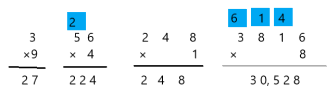
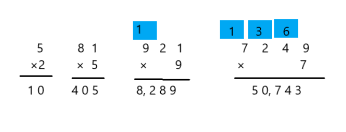


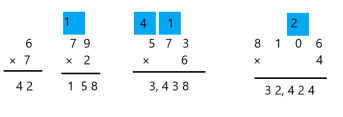
Multiply by One-Digit Numbers Chapter Test
3.1 Understand Multiplicative Comparisons
Write two comparison sentences for the equation.
Question 1.
72 = 8 × 9
Answer: 72 is 8 times as many as 9. or
72 is 9 times as many as 8.
Explanation: we should multiply the numbers 8 and 9 ,
to get the multiplication result as 72.
Question 2.
60 = 10 × 6
Answer: 60 is 10 times as many as 6. or
60 is 6 times as many as 10.
Explanation: we should multiply the numbers 10 and 6 ,
to get the multiplication result as 60.
Write an equation for the comparison sentence.
Question 3.
28 is 4 times as many as 7.
Answer: 28 = 4 × 7
Explanation: we should multiply the numbers 4 and 7,
to get the multiplication result as 28.
Question 4.
40 is 8 times as many as 5.
Answer: 40 = 8 × 5
Explanation: we should multiply the numbers 8 and 5,
to get the multiplication result as 40.
Question 5.
Newton saves $40. Descartes saves $25 more than Newton. How much money does Descartes save?
Answer: Descartes saves $65.
Explanation: Newton saves $40.
Descartes saves $25 more than Newton.,
So, $40 + $25 = $65.
Question 6.
Your friend is 10 years old. Your neighbor is 4 times as old as your friend. How old is your neighbor?
Answer: 40 years old.
Explanation: Your friend is 10 years old.
Your neighbor is 4 times as old as your friend.
So, 10 × 4 = 40.
3.2 Multiply Tens, Hundreds, and Thousands
Find the product
Question 7.
6 × 90 = _____
Answer: 540
Explanation: Using the Place-value method,
6 × 90 = 6 × 9 tens
= 54 tens
= 540
So, 6 × 90 = 540.
Question 8.
3,000 × 1 = _____
Answer: 3000
Explanation: Using the Place-value method,
1 × 3,000 = 1 × 3 thousands
= 3 thousands
= 3,000
So, 1 × 3,000 = 3,000.
Question 9.
4 × 200 = _____
Answer: 800
Explanation: Using the Place-value method,
4 × 200 = 4 × 2 hundreds
= 8 hundreds
= 800
So, 4 × 200 = 800.
Question 10.
4,000 × 4 = _____
Answer: 16000
Explanation: Using the Place-value method,
4 × 4,000 = 4 × 4 thousands
= 16 thousands
= 16,000
So, 4 × 4,000 = 16,000.
Question 11.
8 × 700 = _____
Answer: 5,600
Explanation: Using the Place-value method,
8 × 700 = 8 × 7 hundreds
= 56 hundreds
= 5600
So, 8 × 700 = 5,600.
Question 12.
2 × 60 = _____
Answer: 120
Explanation: Using the Place-value method,
2 × 60 = 2 × 6 tens
= 12 tens
= 120
So, 2 × 60 = 120.
Find the missing factor.
Question 13.
____ × 200 = 1,000
Answer: 5
Explanation :Let the missing number be X
So, X × 200 = 1,000
X = 1,000 / 200 = 5
Hence, the value of X is: 5.
Question 14.
5 × _____ = 450
Answer: 90
Explanation :Let the missing number be X
So, 5 × X = 450
X = 450 / 5 = 90
Hence, the value of X is: 90.
Question 15.
_____ × 800 = 6,400
Answer: 8
Explanation :Let the missing number be X
So, X × 800 = 6,400
X = 6,400 / 800 = 8
Hence, the value of X is: 8.
3.3 Estimate Products by Rounding
Estimate the product
Question 16.
5 × 65
Answer: 350.
Explanation:
Round to the nearest tens.
65 is close to 70;
5 x 70 = 350
Question 17.
2 × 903
Answer: 1,800
Explanation:
Round to the nearest tens.
903 is close to 900;
2 x 900 = 1,800.
Question 18.
7 × 3,592
Answer: 25,130.
Explanation:
Round to the nearest tens.
3,592 is close to 3,590;
7 x 3,590 = 25,130.
Find two estimates that the product is between.
Question 19.
8 × 32
Answer: The product is in between 240 and 320.
Explanation:
Round to the nearest tens.
32 is close to 30;
8 × 30 = 240
and
Explanation:
Round to the nearest tens.
32 is close to 40;
8 × 40 = 320
The product is in between 240 and 320.
Question 20.
4 × 284
Answer:
Explanation:
Round to the nearest tens.
32 is close to 30;
8 × 30 = 240
and
Explanation:
Round to the nearest tens.
32 is close to 40;
8 × 40 = 320
The product is in between 240 and 320.
Question 21.
6 × 5,945
Answer: The product is in between 35,640 and 35,700.
Explanation:
Round to the nearest tens.
5,945 is close to 5,940;
6 × 5,940 = 35,640
and
Explanation:
Round to the nearest tens.
5,945 is close to 5,950;
6 × 5,950 = 35,700
The product is in between 35,640 and 35,700.
Question 22.
A charity organizer raises $9,154 each month for 6 months. To determine whether the charity raises $50,000, can you use an estimate, or is an exact answer required? Explain.
Answer: estimated raise is $54,900, The charity can raise above $50,000.
Explanation: organizer raises $9,154 each month for 6 months.
$9,154 is close to $9,150;
So, $9,150 × 6 = $54,900.
The charity can raise above $50,000.
3.4 Use Distributive Property to Multiply
Find the product.
Question 23.
3 × 14 = _____
Answer: 42
Explanation: by using distributive property
3 × 14 = 3× (10 + 4)
= (3 × 10) + (3 × 4)
= 30 + 12
= 42
Question 24.
18 × 9 = _____
Answer: 162
Explanation: by using distributive property
9 × 18 = 9× (10 + 8)
= (9 × 10) + (9 × 8)
= 90 + 72
= 162
Question 25.
36 × 5 = _____
Answer: 180
Explanation: by using distributive property
5 × 36 = 5 × (30 + 6)
= (5 × 30) + (5 × 6)
= 150 + 30
= 180
Question 26.
8 × 56 = _____
Answer: 448
Explanation: by using distributive property
8 × 56 = 8 × (50 + 6)
= (8 × 50) + (8 × 6)
= 400 + 48
= 448
Question 27.
6 × 67 = ______
Answer: 402
Explanation: by using distributive property
6 × 67 = 6 × (60 + 7)
= (6 × 60) + (6 × 7)
= 360 + 42
= 402
Question 28.
83 × 2 = _____
Answer: 166
Explanation: by using distributive property
2 × 83 = 2 × (80 + 3)
= (2 × 80) + (2 × 3)
= 160 + 6
= 166
Question 29.
Structure
Use the Distributive Property to write an equation shown by the model.

Answer: 4 × 23 = 92
Explanation: by using distributive property
4 × 23 = 4× (20 + 3)
= (4 × 20) + (4 × 3)
= 80 + 12
= 92
3.5 Use Expanded Form to Multiply
Find the product
Question 30.
487 × 3 = _____
Answer: 1,461
Explanation: 3 × 487, by expanding we get
= 3 × (400 + 80 + 7), by using distributive property, we get
= (3 × 400) + ( 3 × 80) + ( 3 × 7)
= 1,200 + 240 + 21
Area model = 1,200 + 240 + 21
so the result of the partial products is 1,461
Question 31.
5 × 7,402
Answer: 37,010
Explanation: 5 × 7,402 , by expanding we get
= 5 × (7,000 + 400 + 2), by using distributive property, we get
= (5 × 7,000) + ( 5 × 400) + ( 5 × 2)
= 3,500 + 2,000 + 10
Area model = 3,500 + 2,000 + 10
so the result of the partial products is 37,010.
Question 32.
8,395 × 7 = _____
Answer: 58,765
Explanation : 7 × 8,395 = 7 × (8,000 + 300 + 90 + 5 )
= (7 × 8,000 ) + (7 × 300 ) + ( 7 × 90) + (7 × 5) by using Expanded form we get
= 56,000 + 2,100 + 630 + 35
Area model = 56,000 + 2,100 + 630 + 35
so the result of the partial products is 58,765
3.6 Use Partial Products of Multiply
Find the product
Question 33.

Answer: 2,394.
Explanation:
The sum of the partial products are 1800 + 540 + 54 = 2,394
So, 266 × 9 = 2,3942.
Question 34.

Answer: 680
Explanation: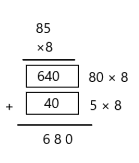
The sum of the partial products are 640 + 40 = 680
So, 85 × 8 = 680.
Question 35.

Answer: 28,128
Explanation: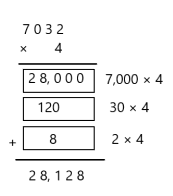
The sum of the partial products are 28,000 + 120 + 8 = 28,128
So, 7,032 × 4 = 28,128.
Question 36.
Number Sense
Which three numbers are the partial products that you add to find the product of 518 and 2?
![]()
Answer: 518 × 2 = 1,036 , So,1,000 , 20 , 16 are the partial products .
Explanation: 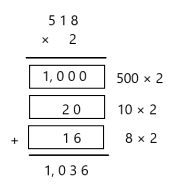
The sum of the partial products are 1,000 + 20 + 16 = 1,036.
So, 518 × 2 = 1,036.
So, 1,000 , 20 , 16 are the partial products .
3.7 Multiply Two-Digit Numbers by One-Digit Numbers
Find the product. Check whether your answer is reasonable.
Question 37.
Estimate: _____

Answer: 114 , the estimated product is 120.
Explanation: 
6 × 9 ones = 54 ones
regrouping 54 ones as 5 tens and 4 ones
6 × 1 tens = 6 tens
6 tens + 5 tens = 11 tens or 1 hundreds and 1 tens ,Then we get 114
And the estimated product is 120
because 19 is close to 20,then 20 × 6 = 120
So, 19 × 6 = 114.
Question 38.
Estimate: _____

Answer: 511 , the estimated product is 490.
Explanation: 
7 × 3 ones = 21 ones
regrouping 21 ones as 2 tens and 1 ones
7 × 7 tens = 49 tens
49 tens + 2 tens = 51 tens or 5 hundreds and 1 tens ,Then we get 511
And the estimated product is 490
because 73 is close to 70,then 70 × 7 = 490
So, 73 × 7 = 511.
Question 39.
Estimate: _____

Answer: 290, the estimated product is 300.
Explanation: 
5 × 8 ones = 40 ones
regrouping 40 ones as 4 tens and 0 ones
5 × 5 tens = 25 tens
25 tens + 4 tens = 29 tens or 2 hundreds and 9 tens ,Then we get 290.
And the estimated product is 300
because 58 is close to 70,then 60 × 7 = 300
So, 58 × 5 = 290.
3.8 Multiply Three – and Four-Digit Numbers by One-Digit Numbers
Find the product. Check whether your answer is reasonable
Question 40.
Estimate: _____
402 × 3 = _____
Answer: 1,206, And the estimated product is 1,200
Explanation:
Step 1: Multiply ones and regroup
3 × 2 ones = 6 ones
Step 2: Multiply tens and regroup tens
3 × 0 tens = 0 tens
Step 3: Multiply hundreds and regroup hundreds
3 × 4 hundreds = 12 hundreds
or 1 thousands and 2 hundreds
By holding all places together we get 1,206 .
And the estimated product is 1,200
because 402 is close to 400, 400 × 3 = 1,200
So, 402 × 3 = 1,206.
Question 41.
Estimate: _____
8 × 3,861 = _____
Answer: 30,888, And the estimated product is 30,880
Explanation: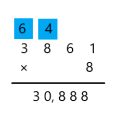
Step 1: Multiply ones and regroup
8 × 1 ones = 8 ones
Step 2: Multiply tens and regroup tens
8 × 6 tens = 48 tens
or 4 hundreds and 8 tens
Step 3: Multiply hundreds and regroup hundreds
8 × 8 hundreds = 64 hundreds
64 hundreds + 4 hundreds = 68 hundreds
regroup as 6 thousands and 8 hundreds
Step 4: Multiply thousands and regroup thousands
8 × 3 thousands = 24 thousands
24 thousands + 6 thousands = 30 thousands
By holding all the places together we get 30,888.
And the estimated product is 30,880
because 3,861 is close to 3,860, 3,860 × 8 = 30,880
So, 3,861 × 8 = 30,888 .
Question 42.
Estimate: ______
977 × 2 = ______
Answer: 1,954 ,And the estimated product is 1,960
Explanation: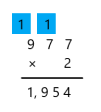
Step 1: Multiply ones and regroup
2 × 7 ones = 14 ones
Regroup 14 ones as 1 tens and 4 ones
Step 2: Multiply tens and regroup tens
2 × 7 tens = 14 tens
14 tens + 1 tens = 15 tens
regroup as 1 hundred and 5 tens
Step 3: Multiply hundreds and regroup hundreds
2 × 9 hundreds = 18 hundreds
18 hundreds + 1 hundreds = 19 hundreds
Regroup as 1 thousands and 9 hundreds
By holding all places together we get 1,954 .
And the estimated product is 1,960
because 977 is close to 980, 980 × 2 = 1,960
So, 977 × 2 = 1,954 .
Compare.
Question 43
![]()
Answer: 306 × 6 = 1,848 is less than 408 × 5 = 2,040.
Explanation:
Step 1: Multiply ones and regroup
6 × 8 ones = 48 ones
Regroup 48 ones as 4 tens and 8 ones
Step 2: Multiply tens and regroup tens
6 × 0 tens = 0 tens
0 tens + 4 tens = 4 tens
Step 3: Multiply hundreds and regroup hundreds
6 × 3 hundreds = 18 hundreds
By holding all places together we get 1,848 .

Step 1: Multiply ones and regroup
5 × 8 ones = 40 ones
Regroup 40 ones as 4 tens and 0 ones
Step 2: Multiply tens and regroup tens
5 × 0 tens = 0 tens
0 tens + 4 tens = 4 tens
Step 3: Multiply hundreds and regroup hundreds
5 × 4 hundreds = 20 hundreds
By holding all places together we get 2,040 .
So, 306 × 6 = 1,848 is less than 408 × 5 = 2,040.
Question 44.

Answer: 6 × 789 = 4,734 is equal to 2 × 2,367 = 4,734.
Explanation: 
Step 1: Multiply ones and regroup
6 × 9 ones = 54 ones
regroup 54 ones as 5 tens and 4 ones
Step 2: Multiply tens and regroup tens
6 × 8 tens = 48 tens
48 tens + 5 tens = 53 tens or regroup as 5 hundreds and 3 tens
Step 3: Multiply hundreds and regroup hundreds
6 × 7 hundreds = 42 hundreds
42 hundreds + 5 hundreds = 47 hundreds
regroup as 4 thousands and 7 hundreds
By holding all the places together we get 4,734.

Step 1: Multiply ones and regroup
2 × 7 ones = 14 ones
regroup 14 ones as 1 tens and 4 ones
Step 2: Multiply tens and regroup tens
2 × 6 tens = 12 tens
12 tens + 1 tens = 13 tens
regroup as 1 hundred and 3 tens
Step 3: Multiply hundreds and regroup hundreds
2 × 3 hundreds = 6 hundreds
6 hundreds + 1 hundred = 7 hundreds
Step 4: Multiply thousands and regroup thousands
2 × 2 thousands = 4 thousands
By holding all the places together we get 4,734.
So, 6 × 789 = 4,734 is equal to 2 × 2,367 = 4,734.
Question 45.

Answer: 454 × 3 = 1,362 is grater than 313 × 4 = 1,252.
Explanation:
Step 1: Multiply ones and regroup
3 × 4 ones = 12 ones
regroup as 1 tens and 2 ones
Step 2: Multiply tens and regroup tens
3 × 5 tens = 15 tens
15 tens + 1 tens = 16 tens
regroup 16 tens as 1 hundreds and 6 tens
Step 3: Multiply hundreds and regroup hundreds
3 × 4 hundreds = 12 hundreds
12 hundreds + 1 hundreds = 13 hundreds
By holding all places together we get 1,362.

Step 1: Multiply ones and regroup
4 × 3 ones = 12 ones
regroup as 1 tens and 2 ones
Step 2: Multiply tens and regroup tens
4 × 1 tens = 4 tens
4 tens + 1 tens = 5 tens
Step 3: Multiply hundreds and regroup hundreds
3 × 4 hundreds = 12 hundreds
By holding all places together we get 1,252.
So, 454 × 3 = 1,362 is grater than 313 × 4 = 1,252.
3.9 Use Properties to Multiply
Use properties to find the product. Explain your reasoning.
Question 46.
25 × 9 × 4
Answer: 900
Explanation:
By using commutative property of multiplication
= 9 × ( 25 × 4)
=9 × 100
= 900
So, 25 × 9 × 4 = 900 .
Question 47.
8 × 250
Answer: 2,000.
Explanation:
By using Distributive property of multiplication
= 8 × ( 200 + 50)
= (8 × 200) + ( 8 × 50)
= 1,600 + 400
= 2,000.
So, 8 × 250 = 2,000.
Question 48.
3 × 497
Answer: 1,491
Explanation:
By using Distributive property of multiplication
= 3 × ( 400 + 90 + 7 )
= (3 × 400) + ( 3 × 90) + (3 × 7)
= 1,200 + 270 + 21
= 1,491.
So, 3 × 497 = 1,491.
Question 49.
2 × 8 × 15
Answer: 240
Explanation:
By using commutative property of multiplication
= 8 × ( 15 × 2)
= 8 × 30
= 240
So, 2 × 8 × 15 = 240 .
Question 50.
699 × 9
Answer: 6,291.
Explanation:
By using Distributive property of multiplication
= 9 × ( 600 + 90 + 9 )
= (9 × 600) + ( 9 × 90) + (9 × 9)
= 5,400 + 810 + 81
= 6,291 .
So, 9 × 699 = 6,291.
Question 51.
1,003 × 6
Answer: 6,018.
Explanation:
By using Distributive property of multiplication
= 6 × ( 1000 + 3)
= (6 × 1000) + (6 × 3)
= 6000 + 18
= 6,018
So, 1,003 × 6 = 6,018.
3.10 Problem Solving: Multiplication
Question 52.
A musical cast sells 1,761 tickets for a big show. The cast needs to complete 36 days of rehearsal. Each rehearsal is 8 hours long. The cast has rehearsed for 102 hours so far. How many hours does the cast have left to rehearse?
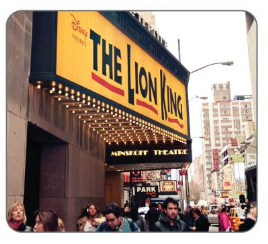
Answer: 186 hours left to rehearse .
Explanation:
By understanding the problem
we know that,
A musical cast sells 1,761 tickets for a big show.
The cast needs to complete 36 days of rehearsal.
Each rehearsal is 8 hours long.
The cast has rehearsed for 102 hours so far.
We should know that,
How many hours does the cast have left to rehearse
The total number of hours to practice are 36 × 8 = 288 hours
They practiced for 102 hours so far then , to get the remaining hours 288 – 102 = 186 hours.
So, the cast has 186 hours left to rehearse .
Multiply by One-Digit Numbers Cumulative Practice
Question 1.
Which number is greater than 884,592?
A. 89,621
B. 884,592
C. 805,592
D. 894,592
Answer: D. 894,592
Explanation: of all the given options , D is the greatest number .
Question 2.
What is the difference of 30,501 and 6,874?

Answer: 23,627.
Explanation : To fin the difference between two numbers, we should subtract the lowest number from the largest number, Then, 30,501 – 6,874 = 23,627.
Question 3.
A teenager will send about 37,000 text messages within 1 year. Which numbers could be the exact number of text messages sent?

Answer: 36.834
Explanation: Because this number is the closest number to the 37,000 from the given options.
so, 36,834 could be the exact number.
Question 4.
What is the product of 4,582 and 6?
A. 27,492
B. 24,082
C. 27,432
D. 42,117
Answer: 27,492.
Explanation: by using distributive property we get
6 × 4,582 = 6 × ( 4,000 + 500 + 80 + 2)
= (6 × 4,000) + ( 6 × 500)+ ( 6 × 80 ) + ( 6 × 2)
= 24,000 + 3,000 + 480 + 12
= 27,492.
So, 6 × 4,582 = 27,492.
Question 5.
Which expression is equal to 246,951 + 73,084?
A. 246,951 + 70,000 + 3,000 + 800 + 40
B. 246,951 + 7,000 + 300 + 80 + 4
C. 246,951 + 70,000 + 3,000 + 80 + 4
D. 246,951 + 70,000 + 3,000 + 800 + 4
Answer: C
Explanation: 246,951 + 73,084, 73,084 can be written as,
246,951 + 70,000 + 3,000 + 80 + 4.
Question 6.
Newton reads the number ”four hundred six thousand, twenty-nine” in a book. What is this number written in standard form?
A. 4,629
B. 406,029
C. 460,029
D. 406,290
Answer: B
Explanation: 406,029 can be written as four hundred six thousand, twenty-nine.
Question 7.
Which expressions have a product of 225?

Answer: 9 × 25 , 75 × 3 , 5 × 45.
Explanation: all the above expressions give the product of 225,
9 × 25 = 225
75 × 3 = 225
5 × 45 = 225.
Question 8.
What is the greatest possible number you can make with the number cards below?
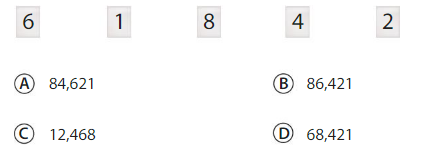
Answer: B
Explanation: from the give numbers 6 ,1,8,4,2 , place the numbers in the descending order we get 86,421.
Question 9.
What is the sum of 62,671 and 48,396?
A. 111,067
B. 11,067
C. 100,967
D. 100,067
Answer: A.1,11,067.
Explanation: Sum means Addition we should add the two numbers in order to get the result,
62,671 + 48,396 = 1,11,067.
Question 10.
Your friend drinks 8 glasses of water each day. He wants to know how many glasses of water he will drink in 1 year. Between which two estimates is the number of glasses he will drink in a year?
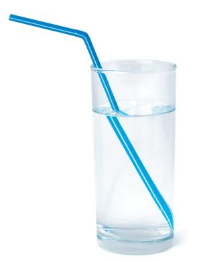
A. 2,400 and 3,200
B. 240 and 320
C. 3,200 and 4,000
D. 320 and 400
Answer: He drinks 2, 920 glasses for 1 year , so it is in between 2,400 and 3,200 .
Explanation: He drinks 8 glasses of water each day so for 1 year that is for 365 days , we get 365 × 8 = 2,920.
So, He drinks 2, 920 glasses for 1 year , so it is in between 2,400 and 3,200.
Question 11.
Which statement about the number 420,933 is true?
A. The value of the 2 is 2,000.
B. The 4 is in the ten thousands place.
C. The value of the 3 in the tens place is ten times the value of the 3 in the ones place.
D. There are 9 tens.
Answer: C
Explanation: The number 420,933 has the value of the 3 in the tens place is ten times the value of the 3 in the ones place.
Question 12.
Descartes rounds to the nearest ten thousand and gets an estimate of 360,000. Which expressions could be the problem he estimated?

Answer: 480,012 – 127,465.
Explanation: Because the number 360,000 should be in between the same range of the given numbers that is,
480,012 – 127,465.
Question 13.
There are 8 students in a book club. There are 5 times as many students in a drama club as the book club. How many students are in the drama club?
A. 13 students
B. 45 students
C. 3 students
D. 40 students
Answer: D . 40 students
Explanation: There are 8 students in a book club.
There are 5 times as many students in a drama club as the book club.
Then, 8 × 5 = 40.
So, There are 40 students in the drama club.
Question 14.
The force required to shatter concrete is 3 times the amount of force required to shatter plexiglass. The force required to shatter plexiglass is 72 pounds per square foot. What is the force required to shatter concrete?
A. 216 pounds per square foot
B. 69 pounds per square foot
C. 75 pounds per square foot
D. 2,106 pounds per square foot
Answer: A.216 pounds per square foot
Explanation: The force required to shatter plexiglass is 72 pounds per square foot.
The force required to shatter concrete is 3 times the amount of force required to shatter plexiglass.
Then, 72 × 3 = 216.
So, the force required to shatter concrete is 216 pounds per square foot.
Question 15.
Which number, when rounded to the nearest hundred thousand, is equal to 100,000?
A. 9,802
B. 83,016
C. 152,853
D. 46,921
Answer: B. 83,016
Explanation: it is only number in the options which is close to 100,000 , All the other options are too far to roundoff .
Question 16.
You want to find 5,193 × 8. Which expressions show how to use the Distributive Property to find the product?

Answer: 8 × (5,000 + 100 + 90 +3)
Explanation: To use distributive property we have to organize the largest number in the expression in equal distributions respectively. so, 5,193 × 8 = 8 × (5,000 + 100 + 90 +3).
Question 17.
Use the table to answer the questions.

Part A Five friends each buy all of the items listed in the table. Use rounding to find about how much money they spend in all.
Part B An Ultimate Package costs $40 and includes all of the items listed in the table. About how much money would the 5 friends have saved in all if they would have bought an Ultimate Package instead of purchasing the items individually? Explain.
Answer: part A = $250 , part B = $50 can be saved.
Explanation:
Part A: By rounding the money from the table , we have 90 – minute jump pass = $20
water bottle = $10 and T-shirt = $20 ,That total amount will be $50
For five friends we get, 5 × $50 = $250. for all of them.
Part B : An Ultimate Package costs $40 and includes all of the items listed in the table. if each of the 5 members buys the package then , $40 × 5 = $200.
So, from Part A and Part B we get to know that they would have save $50 if they bought the package , that is
$250 – $200 = $50.
Question 18.
A pair of walruses weigh 4,710 pounds together. The female weighs1,942 pounds. How much more does the male weigh than the female?
A. 826 pounds
B. 6,652 pounds
C. 2,768 pounds
D. 2,710 pounds
Answer: C. 2,768 pounds
Explanation: A pair of walruses weigh 4,710 pounds together.
The female weighs1,942 pounds. Then , to get the male walrus weight , we have ,
4,710 – 1,942 = 2,768
So, The weight of male walrus is 2,768 pounds.
Question 19.
You use compensation as shown. What is the final step?

Answer: D. There is no final step . You are finished.
Multiply by One-Digit Numbers STEAM Performance Task

Question 1.
A teacher visits the Golden Gate Bridge in San Francisco, California. 1. Use the figure above to answer the questions.
a. The roadway is 8 times as wide as the width of both walkways combined. Each walkway has the same width. How wide is one of the walkways
b. What is the length of the bridge that is suspended above the water?
c. What is the length of the bridge that is not suspended above the water?
Answer: a. each walk way is 5 feet,
b. 6,450 feet ,
c. 2,531 feet.
Explanation:
a. Given , in picture the whole roadway and walk way is 90 feet long in total
Considering 2 walkways and assuming walkway as W and roadway as R we get
R + 2W = 90 feet and The roadway is 8 times as wide as the width of both walkways combined. can say as
R = 8(2W) then we have 8(2W) + 2W = 90
16W + 2W = 90
18W = 90
W = 90 /8
W = 5 , so, each walk way is 5 feet long.
b. the length of the bridge that is suspended above the water is
from the picture we have 1,125 + 4,200 + 1,125 = 6,450. feet
c. the length of the bridge that is not suspended above the water is
From the picture we have 8,981 – 6,450 = 2,531 feet.
Question 2.
The teacher wants to estimate the distance between the bridge and the water.
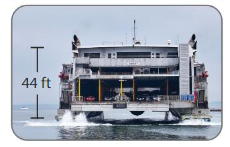
a. He rides in a ferry boat under the bridge. He says that the distance between the bridge and the water is about 5 times the height of the ferry boat. What is the distance between the bridge and the water?
b. The teacher estimates that the height of one tower is about three times the distance between the bridge and the water. What is the teacher’s estimate for the height of the tower?
c. You learn the exact height of the tower is 86 feet taller than the teacher’s estimate. How tall is the tower?
Answer:
a.220 ft.
b.660 ft.
c.746 ft.
Explanation:
a. 44 ft is the height of the boat as per the picture.so the distance between the water and the bridge is 5 times the height of the ferry boat ,answer is 44 ft multiplied by 5 times i.e.220 ft. so 44 × 5 = 220 ft.
b. As per the teachers estimation height of tower is 3 times the distance between the bridge and the water, so 220ft is multiplied by 3, i.e. 660 ft. so 220 × 3 = 660
c. learn the exact height of the tower is 86 feet taller than the teacher’s estimate.so 660 + 86 = 746 feet.
The teacher uses his fitness tracker to count the number of steps he walks on the Golden Gate Bridge each day for 1 week.
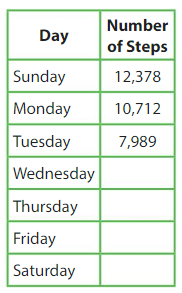
Question 3.
The table shows the numbers of steps taken on the first 3 days of the week. Use this information to complete the table.
a. He takes one thousand one hundred twenty-two more steps on Wednesday than on Monday.
b. On Thursday, he takes one hundred eighteen steps less than on Sunday.
c. He takes ten thousand fifty steps on Friday.
d. On Saturday, he takes twice as many steps as on Tuesday.
Answer:
a. 11,834 steps on Wednesday
b. 12,260 steps on Thursday
c. 10,050 steps on Friday
d. 15,978 steps on Saturday
Explanation:
a. He walks 1,122 more steps on Wednesday than on Monday = 10,712 + 1,122 = 11,834 steps.
b. He walks 118 steps less on Thursday than on Sunday = 12,378 – 118 = 12,260 steps.
c. He walks 10,050 steps on Friday
d. He walks 2 times as many steps on Saturday than on Tuesday = 2 × 7,989 = 15,978 steps.
Question 4.
The teacher’s goal is to take 11,500 steps each day.
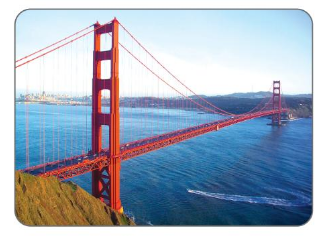
a. What is his goal for the week?
b. Estimate the total number of steps he takes from Sunday to Saturday. Does he meet his goal for the week? Explain.
c. One mile is about two thousand steps. The teacher estimates that he walks 3 miles from one end of the Golden Gate Bridge to the other and back again. About how many steps does he walk?
Answer:
a. 80,500 steps
b. 81,200 steps are estimated. He reached his goal for the week.
c. 6,000 steps
Explanation:
a. He walks 11,500 steps each day , Then for 1 Week we have 7 days , so 7 × 11,500 = 80,500 steps for a week
b. By rounding the nearest numbers of all the steps he walked from Sunday to Saturday , we have,
12,380 + 10,710 + 7,990 + 11,830 + 12,260 + 10,050 + 15,980 = 81,200 steps.
81,200 steps are estimated. He reached his goal for the week.
c. 1 mile = 2,000 steps.
The teacher estimates that he walks 3 miles from one end of the Golden Gate Bridge to the other and back again.
So, 3 × 2,000 = 6,000 steps.
He walked 6,000 steps.
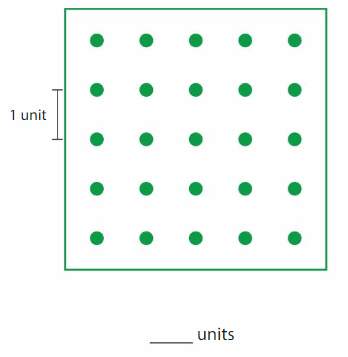


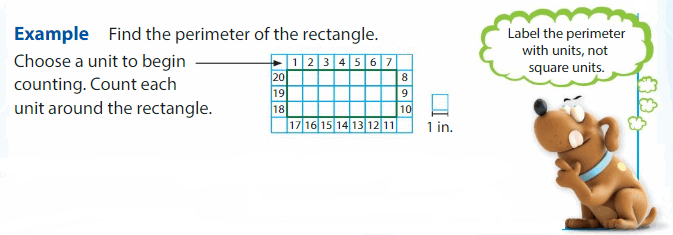
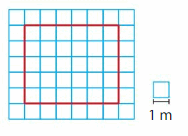
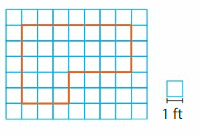
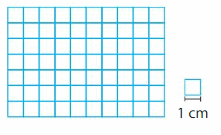
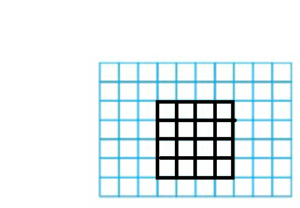
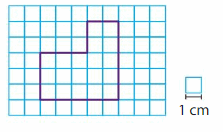
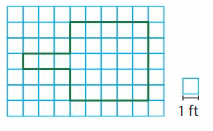
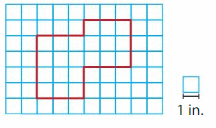

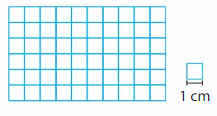
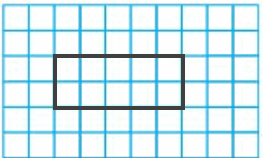
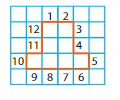

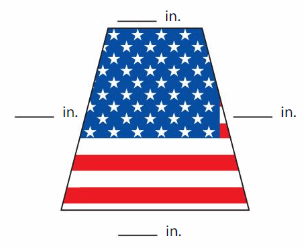
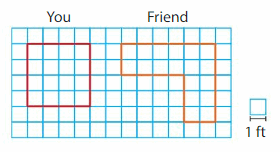
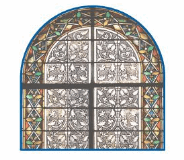
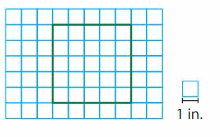

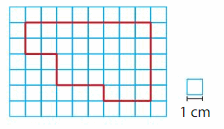
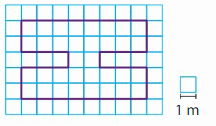

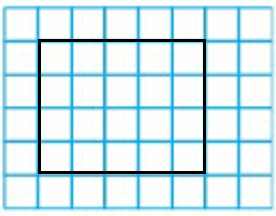

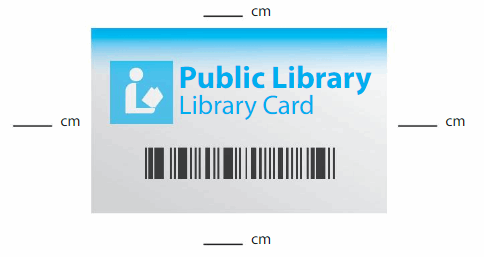
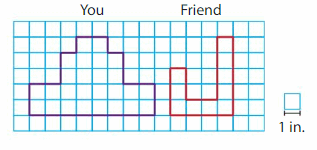



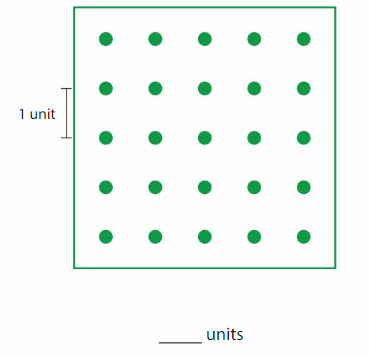

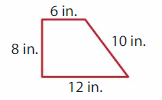


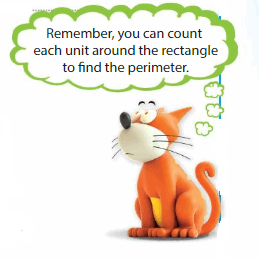

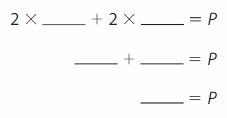
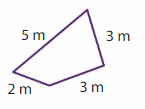

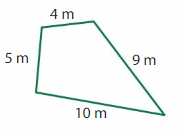
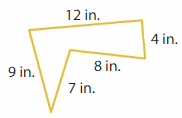




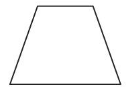
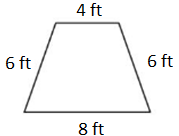

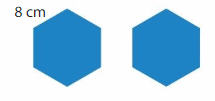

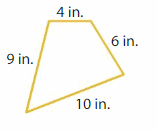
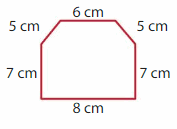



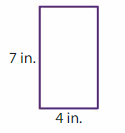

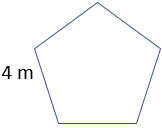
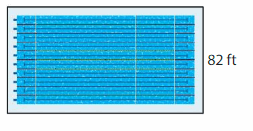



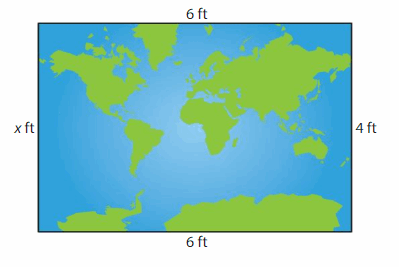
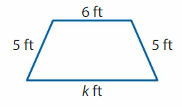
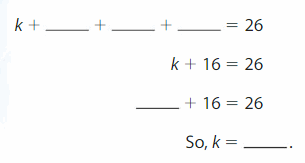

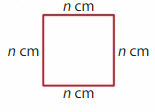
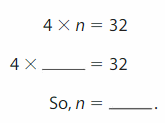
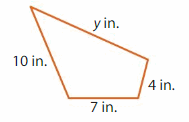

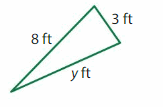
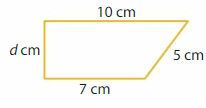

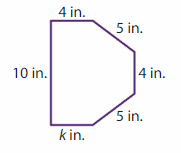

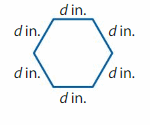

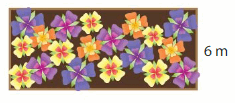
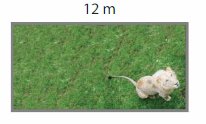


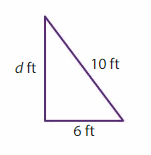
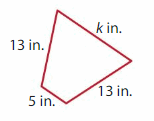

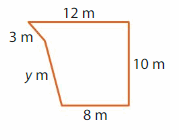
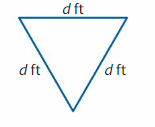



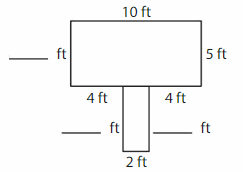
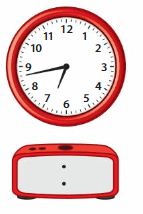
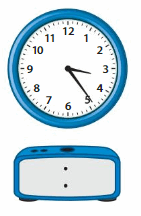


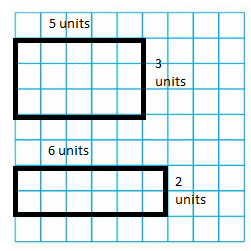

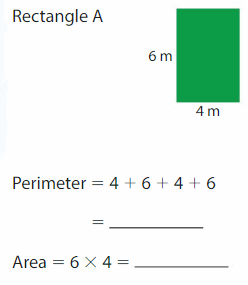
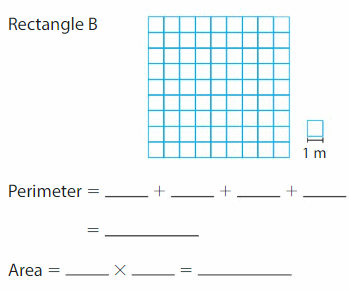


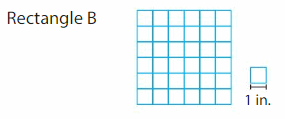
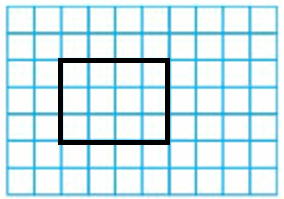

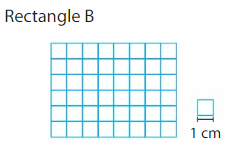

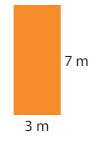
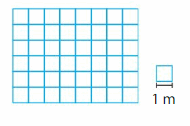
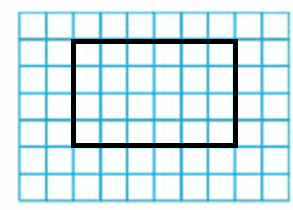

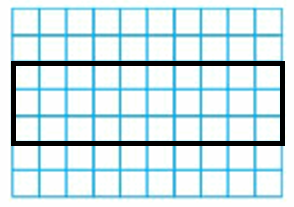
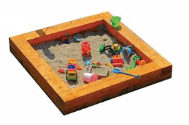


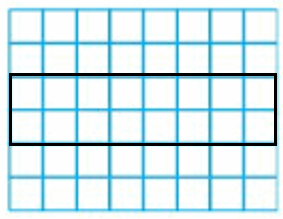


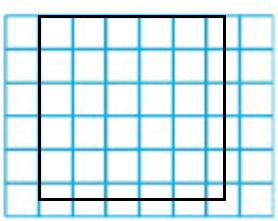


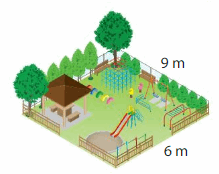
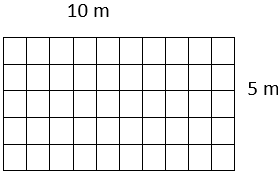

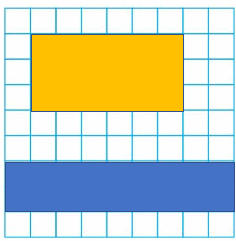


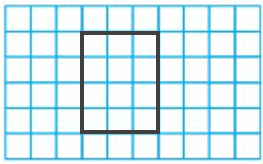
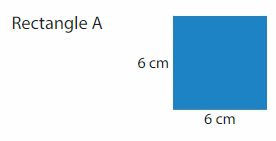
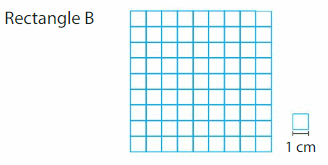
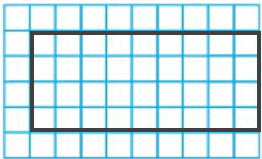

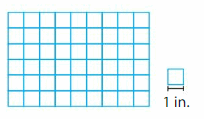
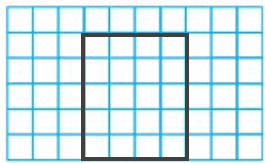

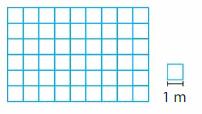
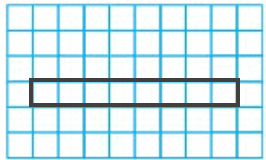
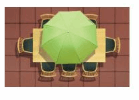


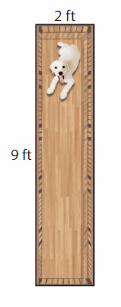

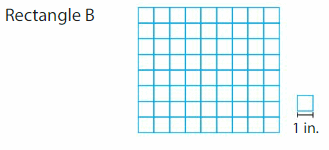

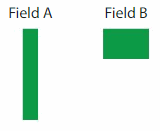
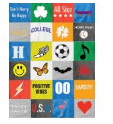
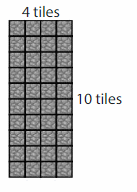


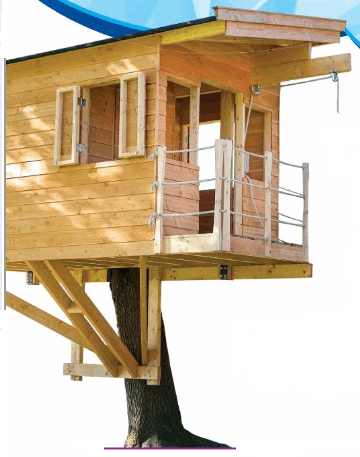
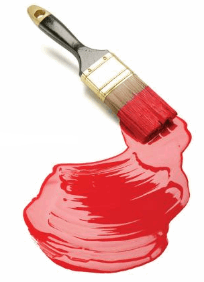
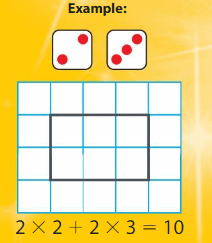
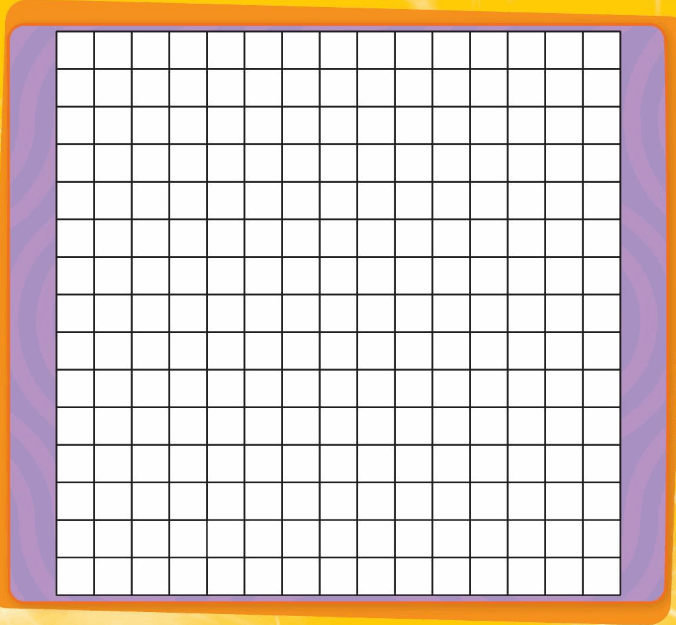
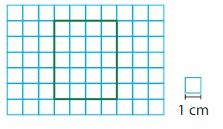

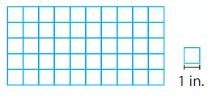
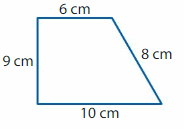



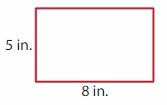
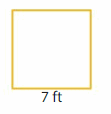
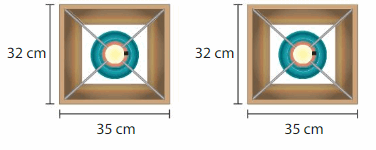
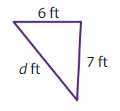
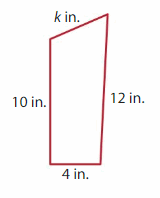
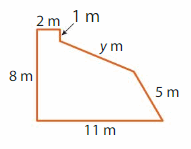

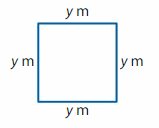
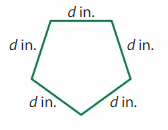
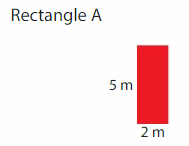
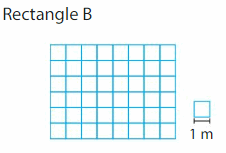
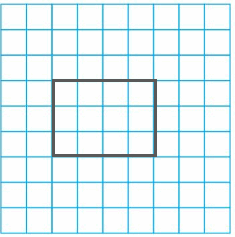


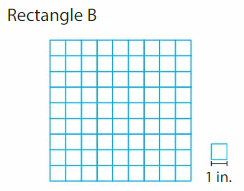
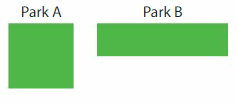
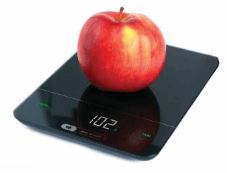

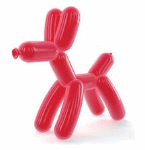


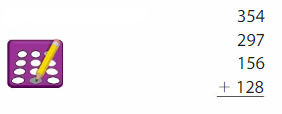
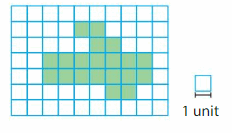
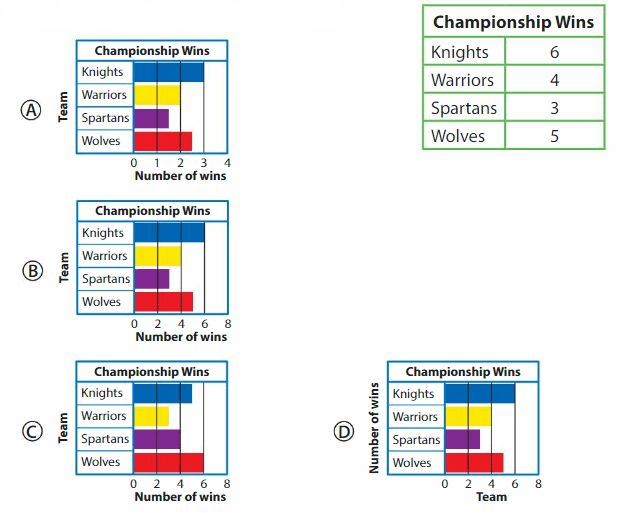

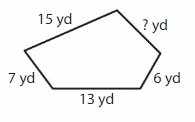





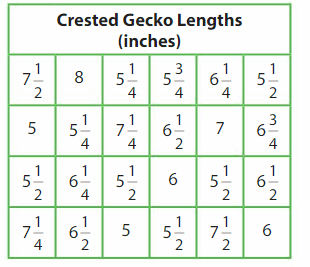


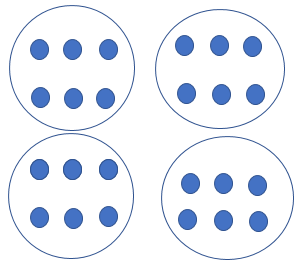
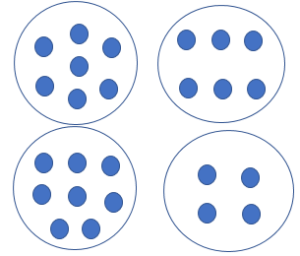


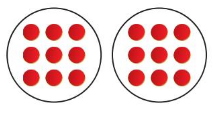


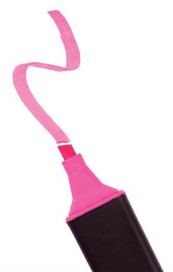
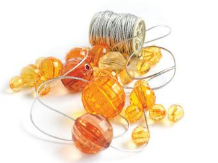

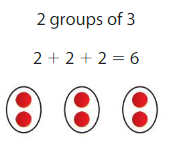



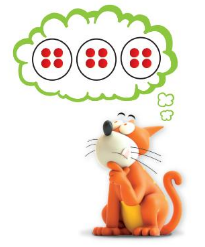












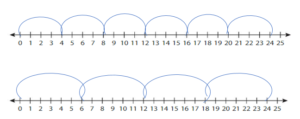
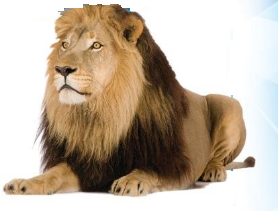















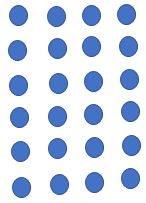



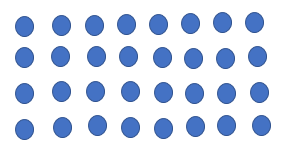


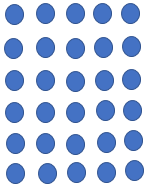
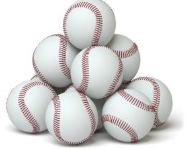

 This array consists of 2 rows and 3 columns
This array consists of 2 rows and 3 columns This array consists of 3 rows and 2 columns.
This array consists of 3 rows and 2 columns.